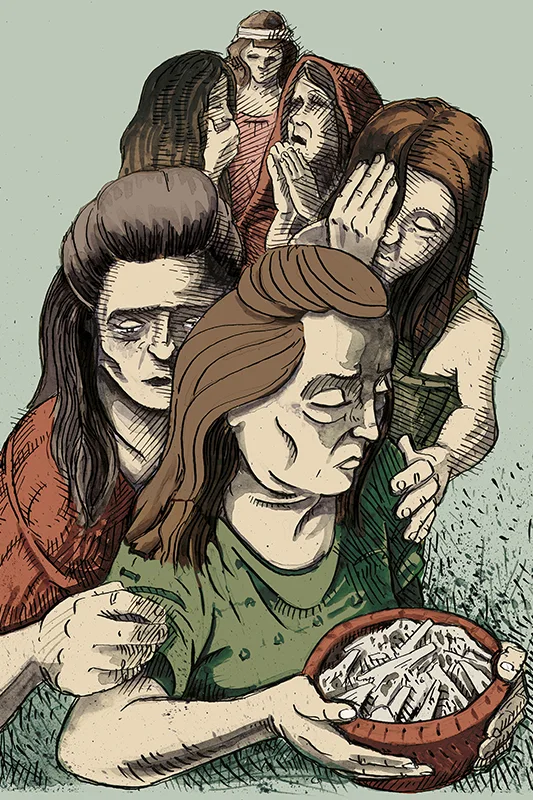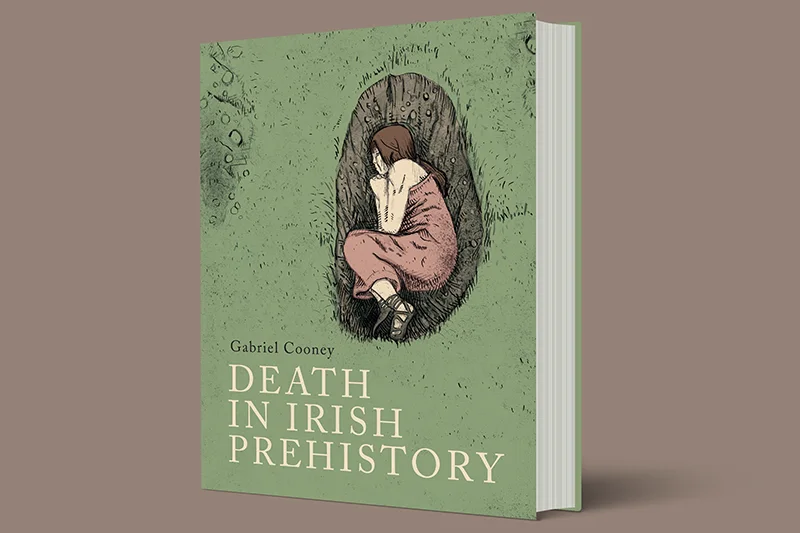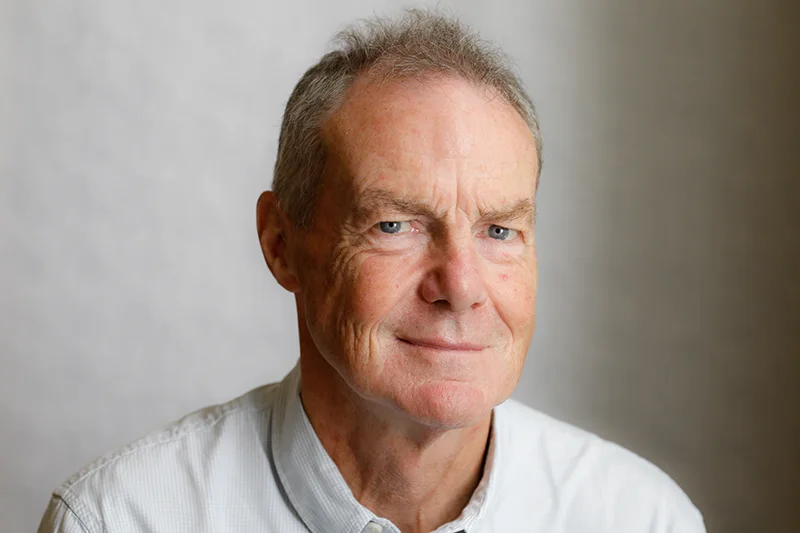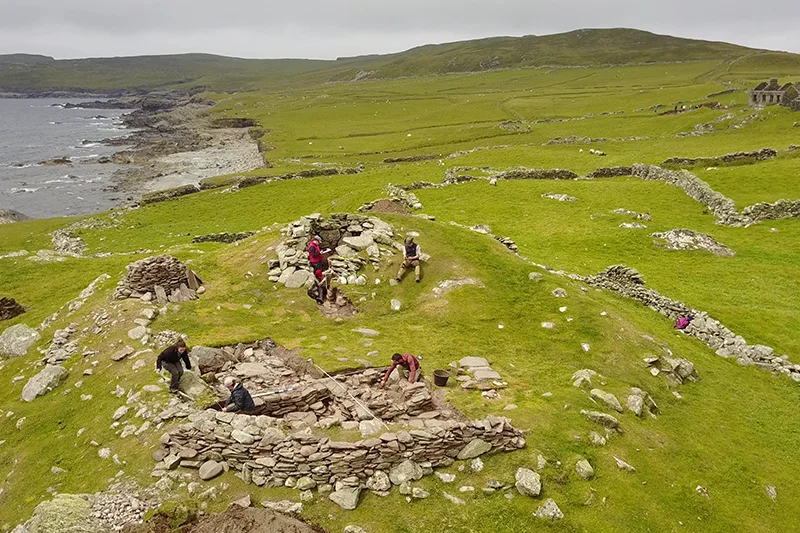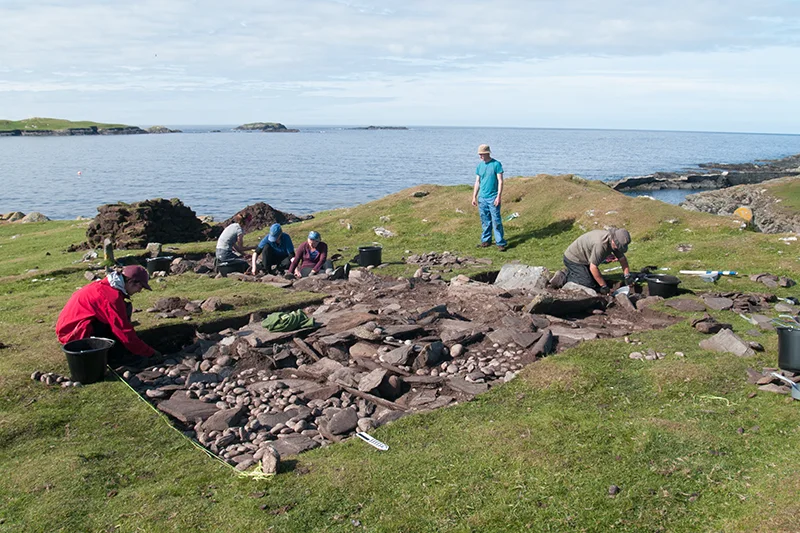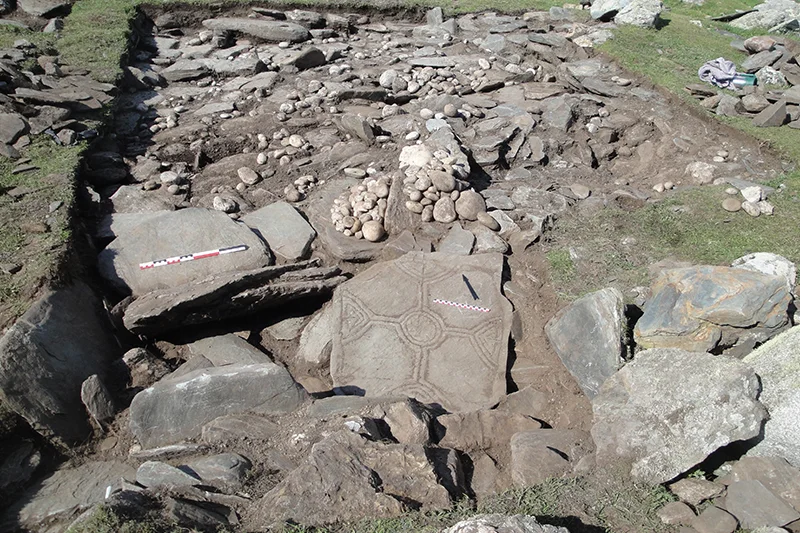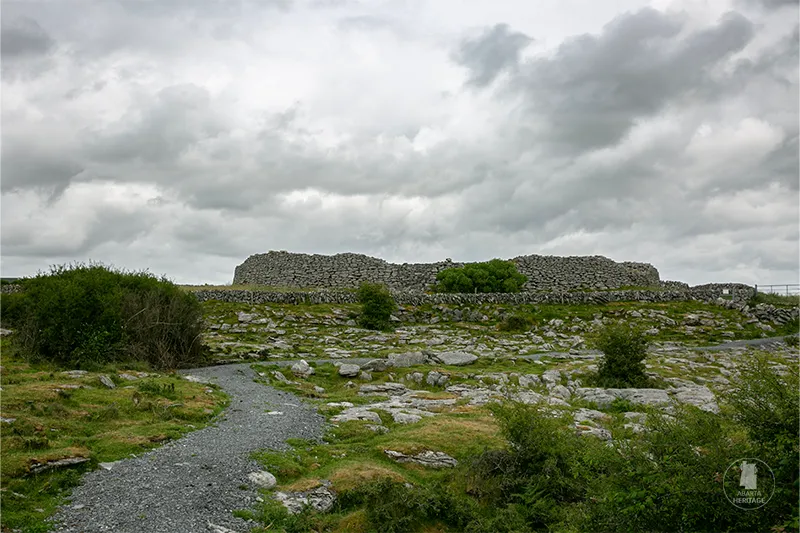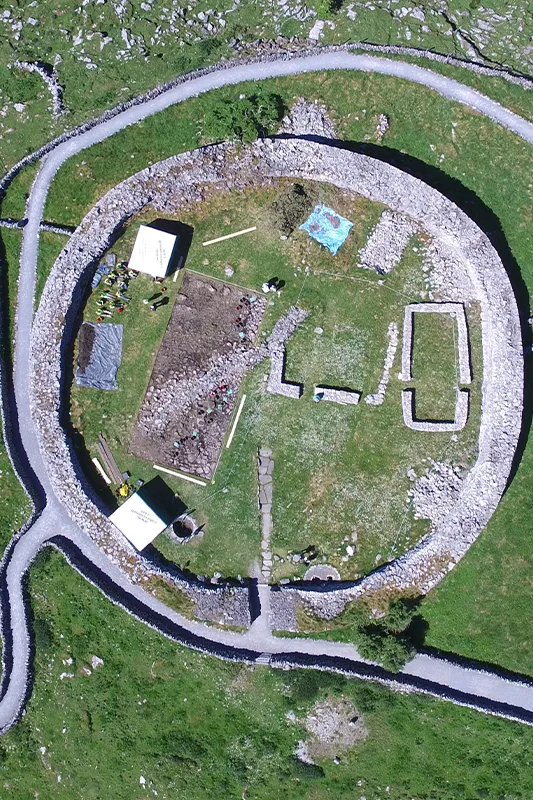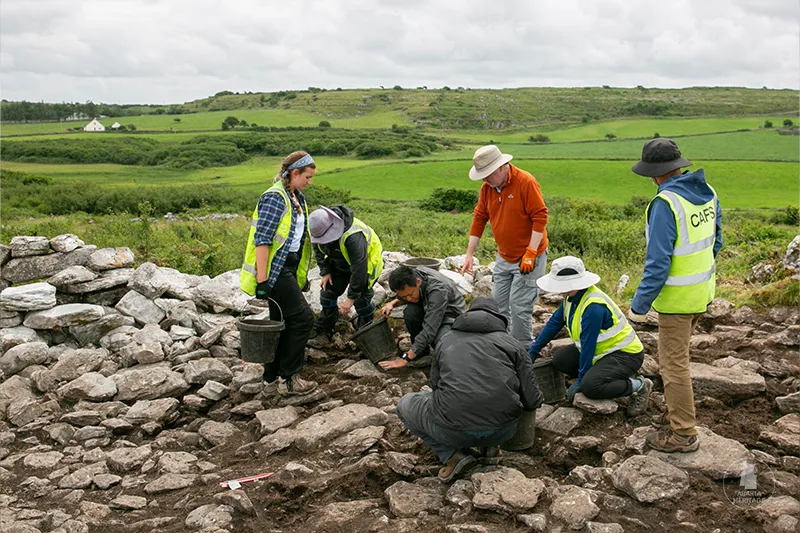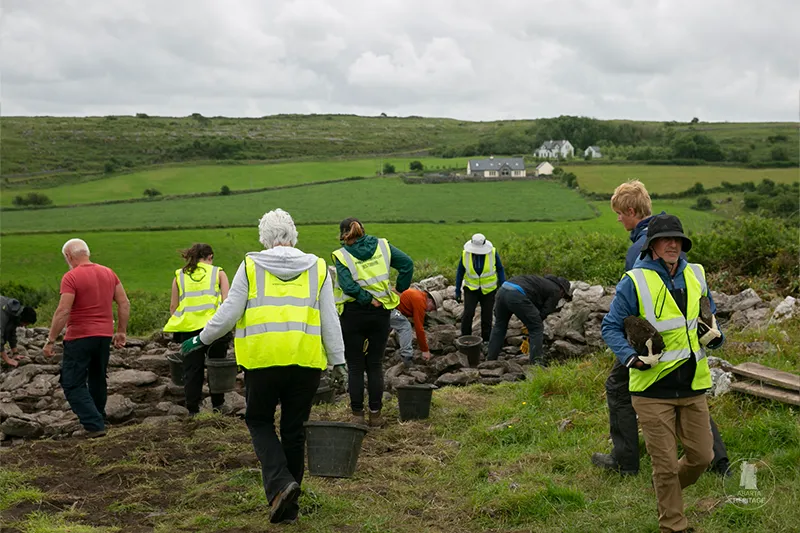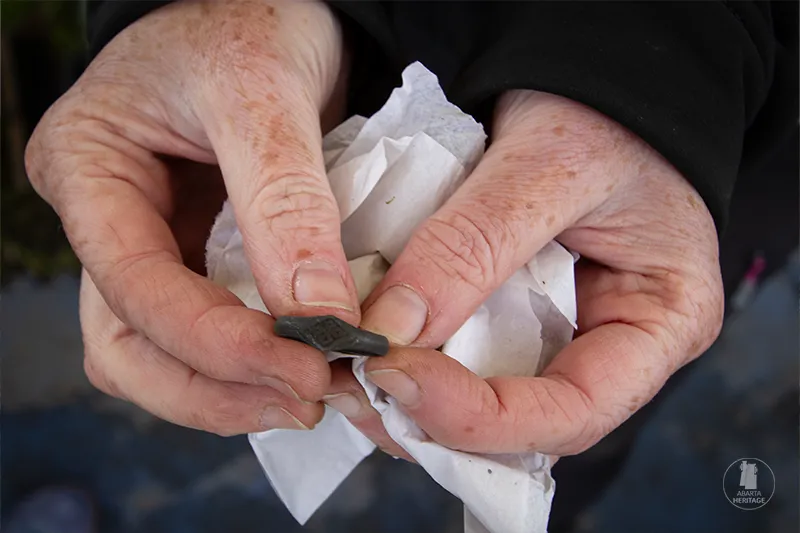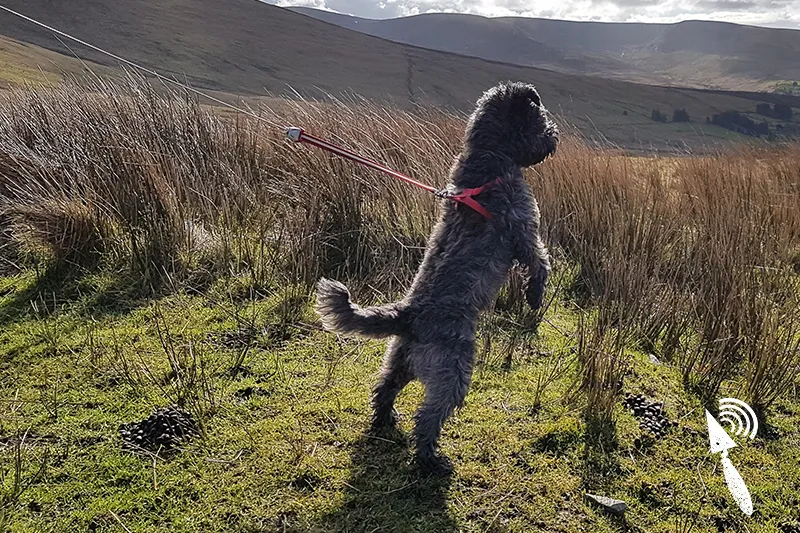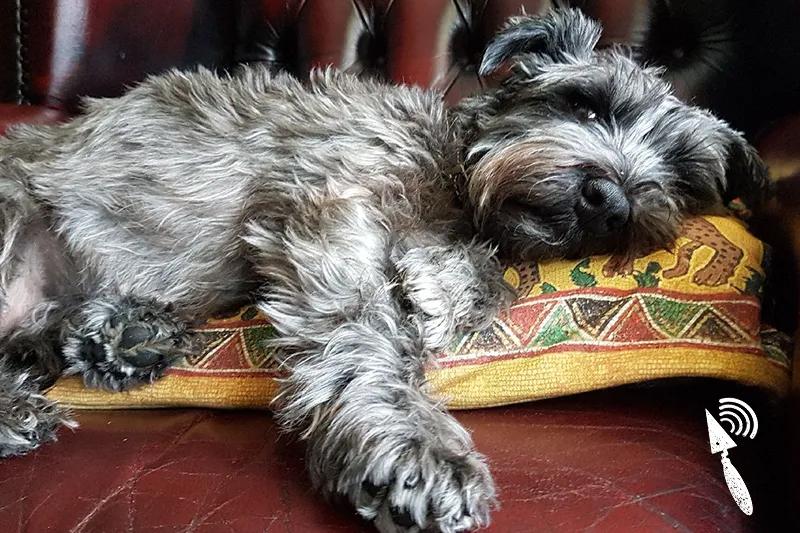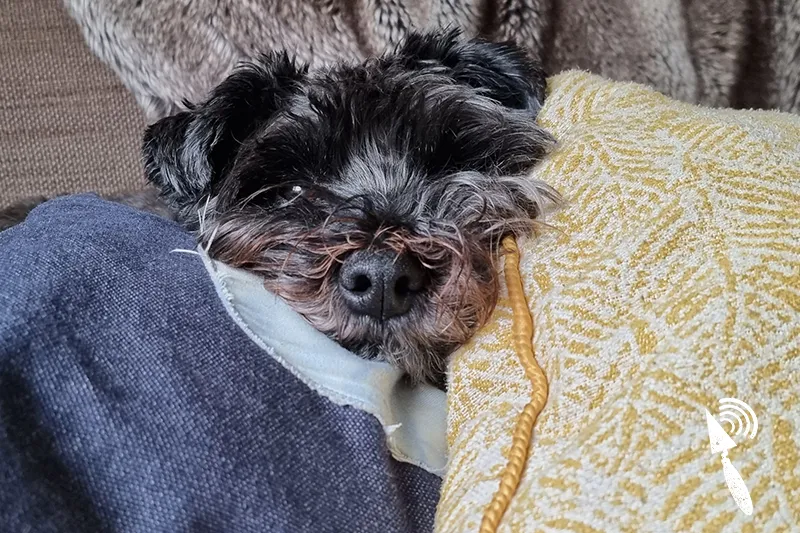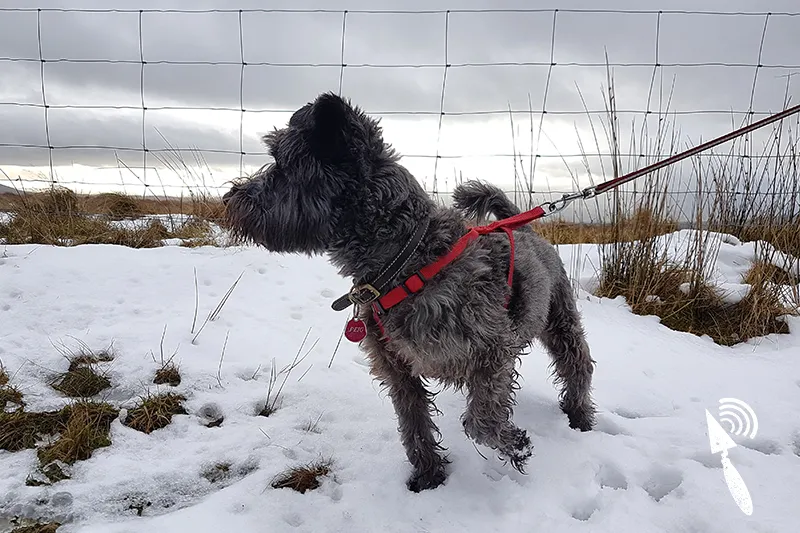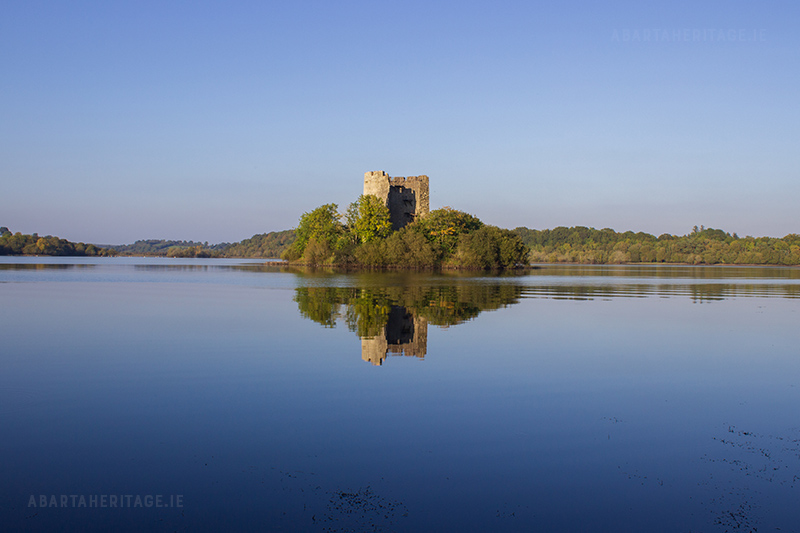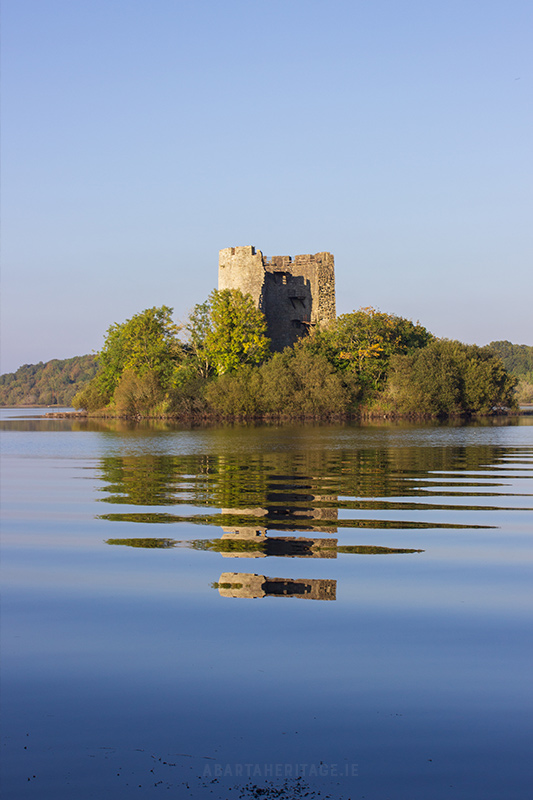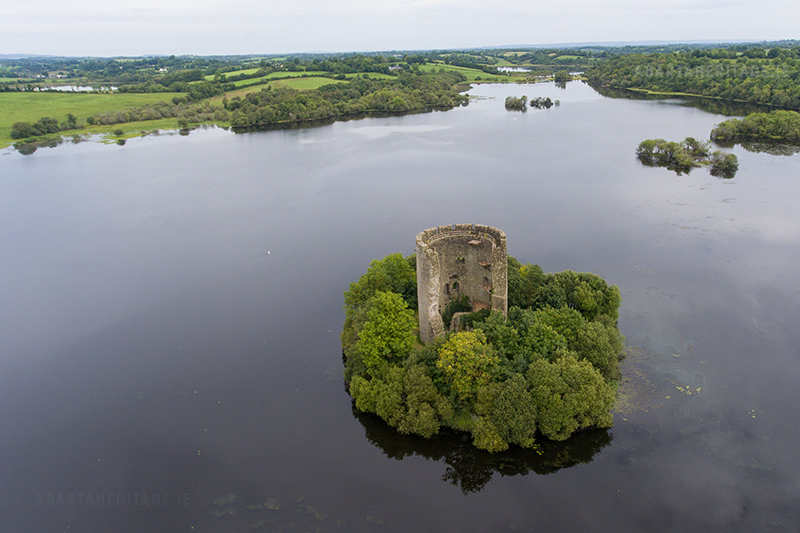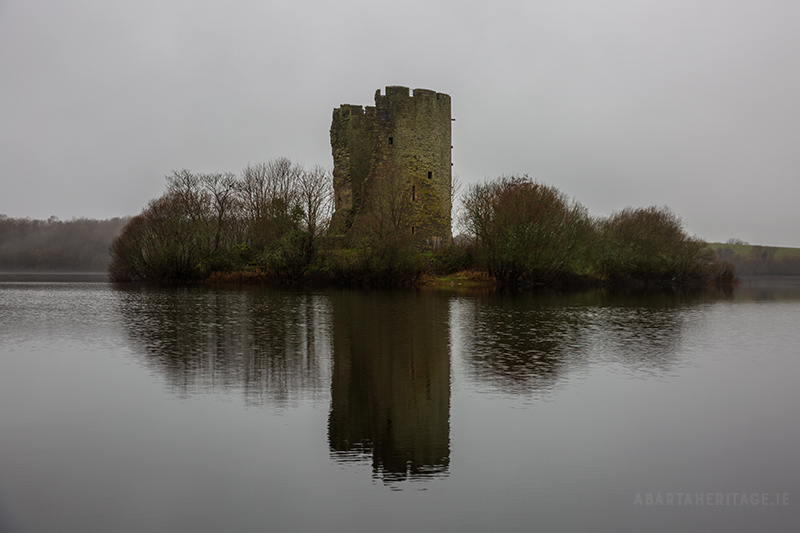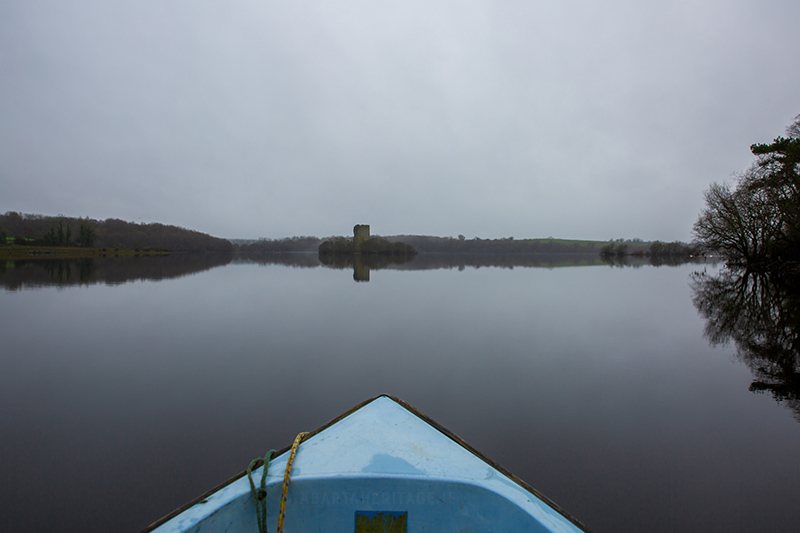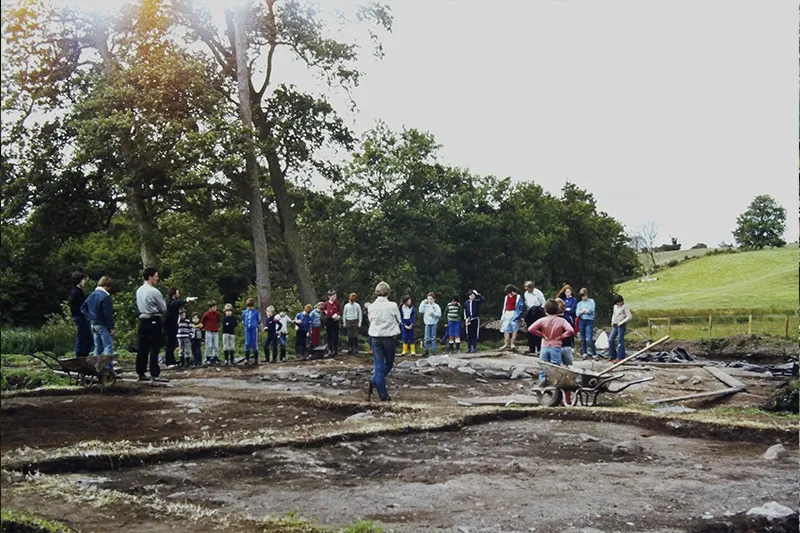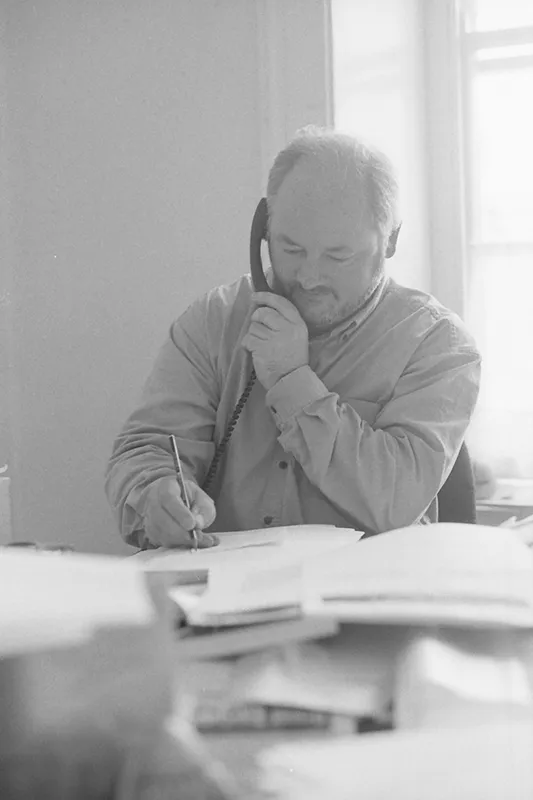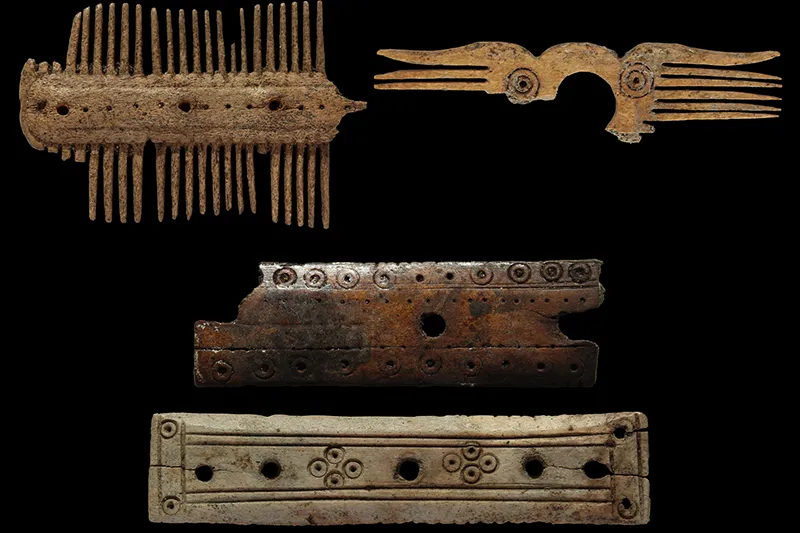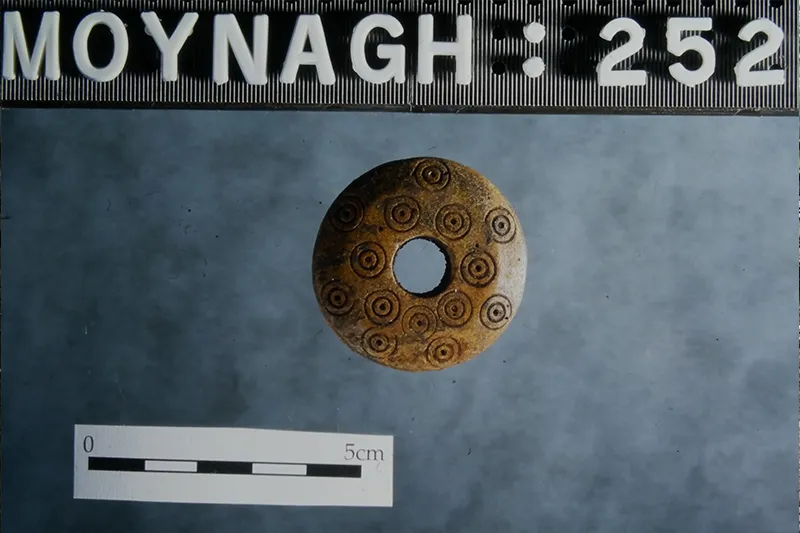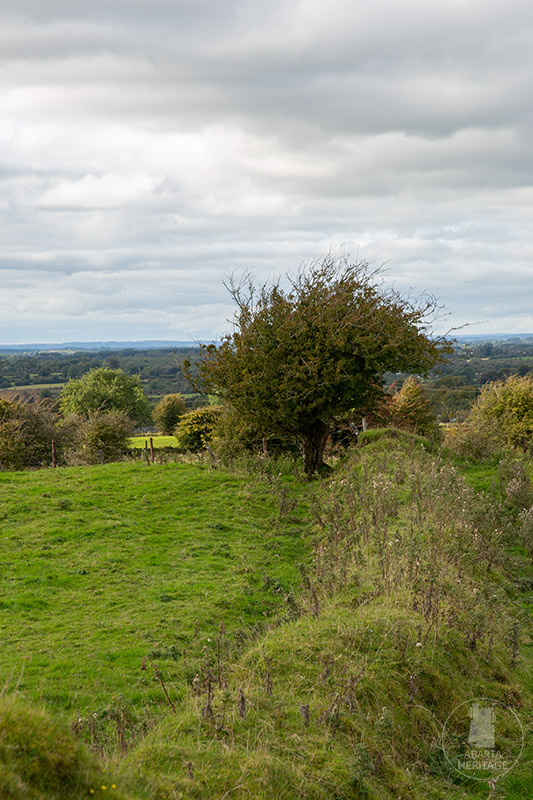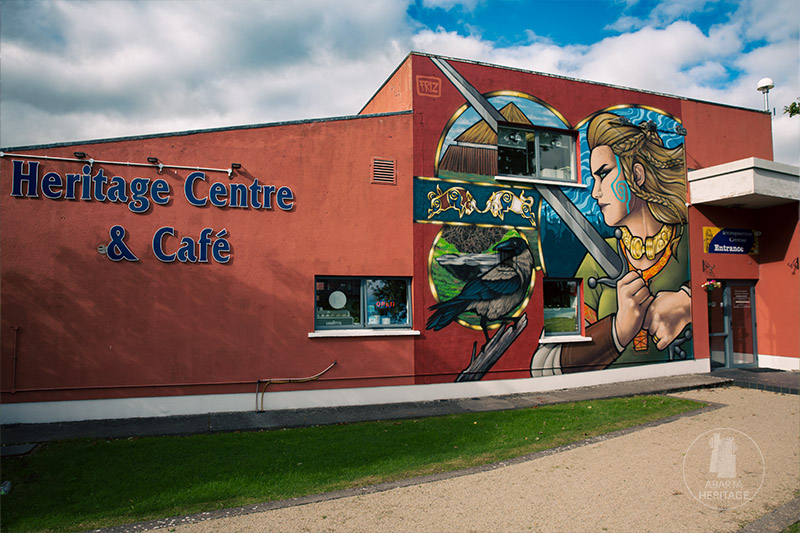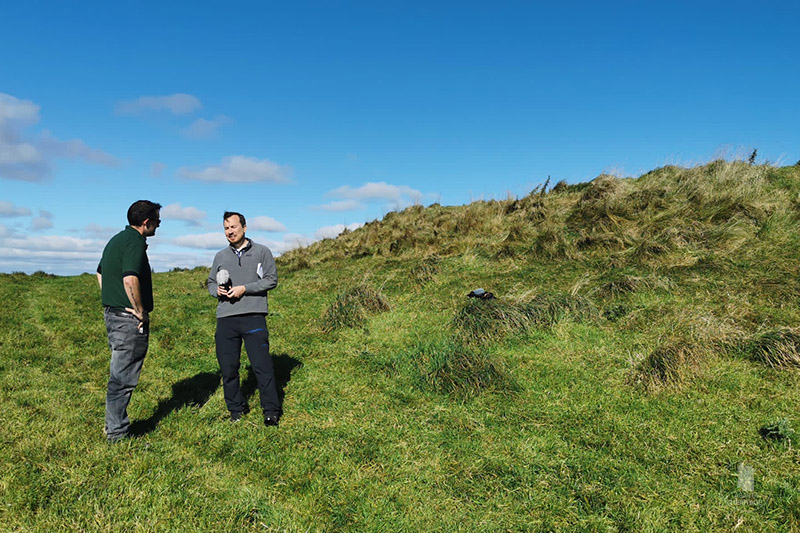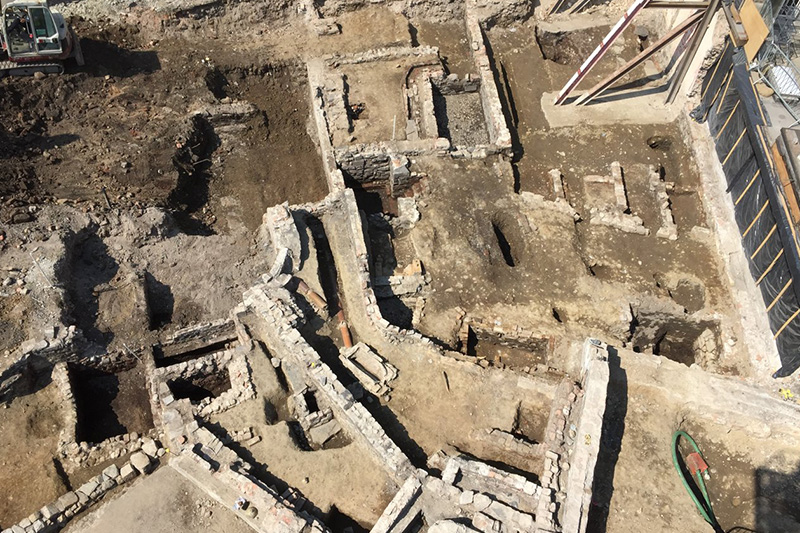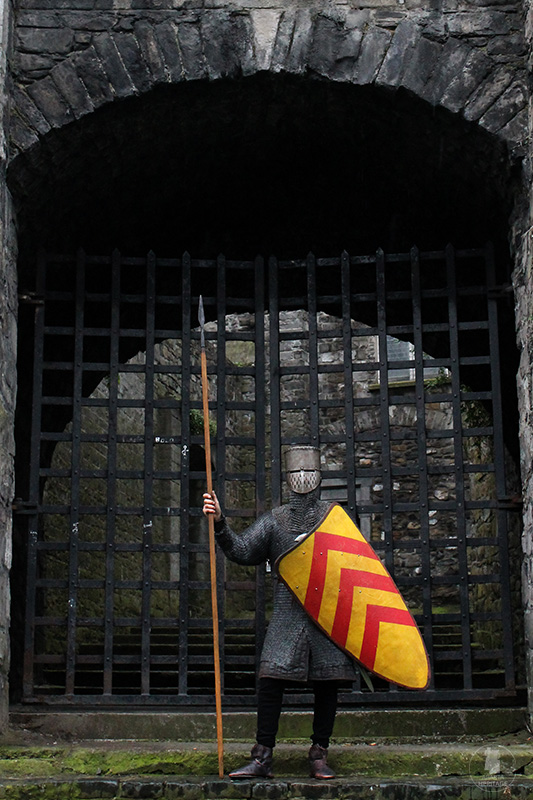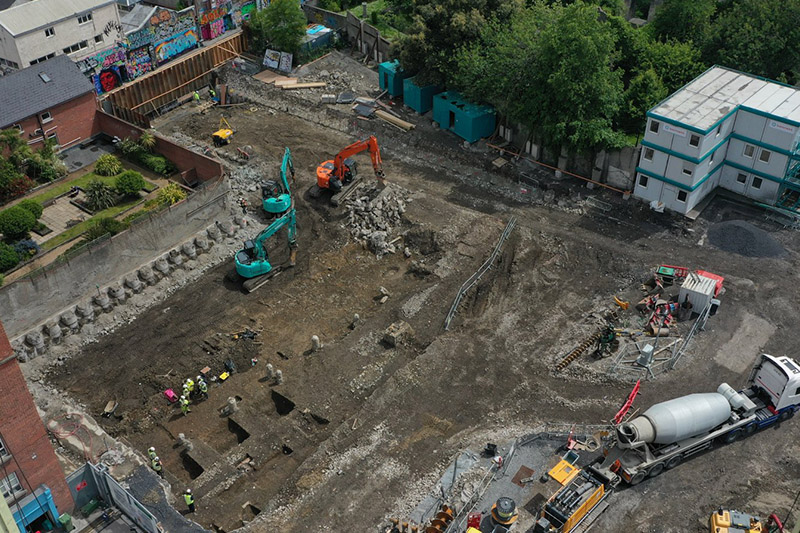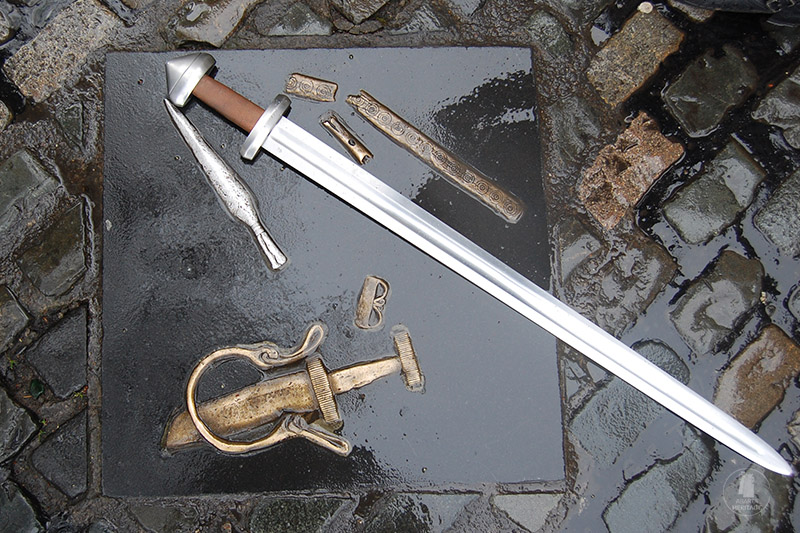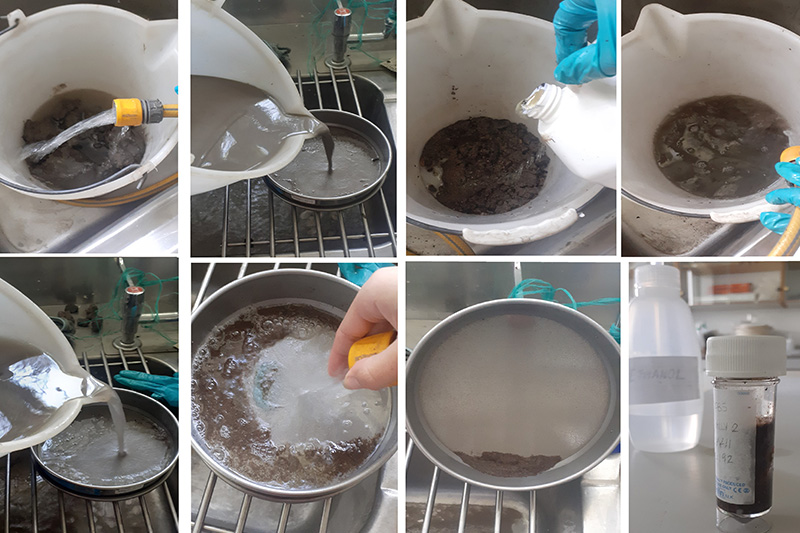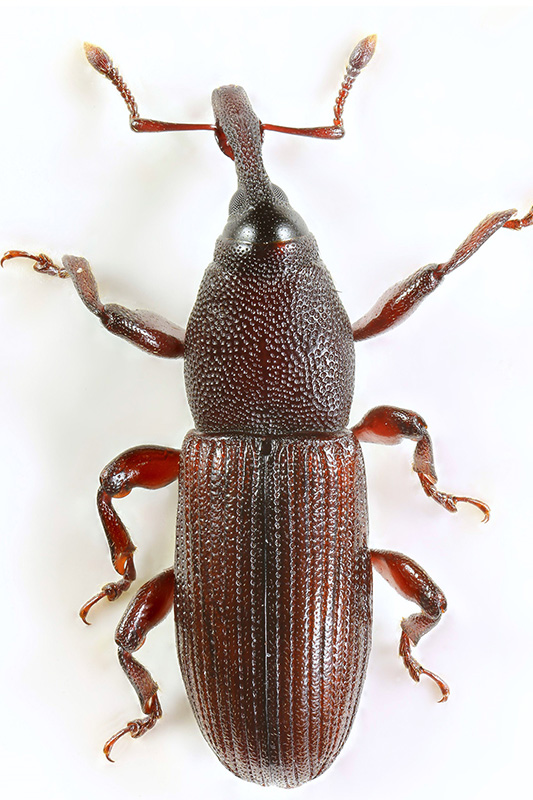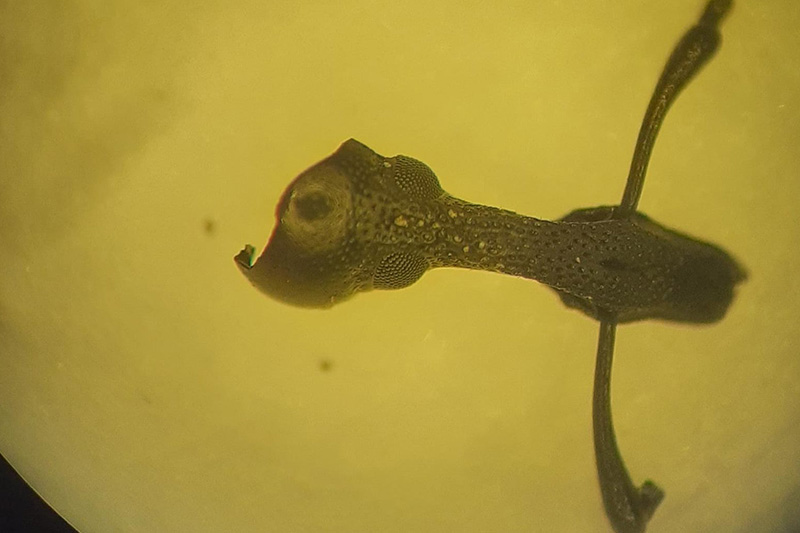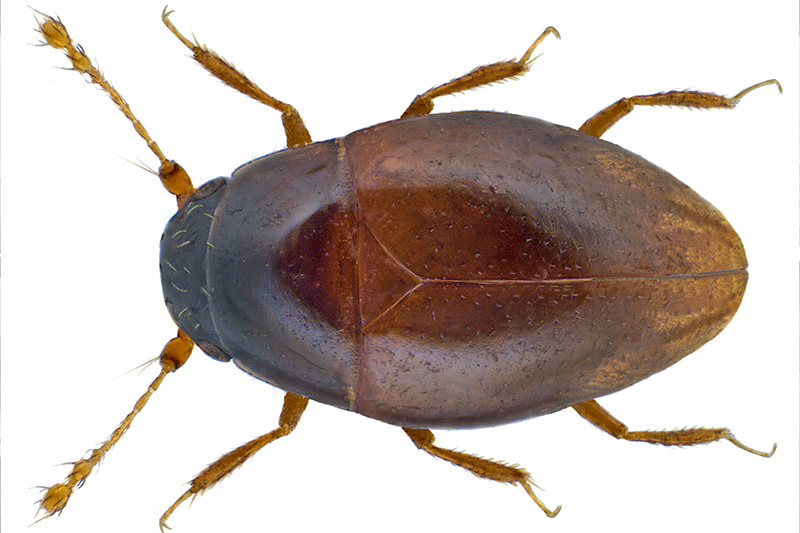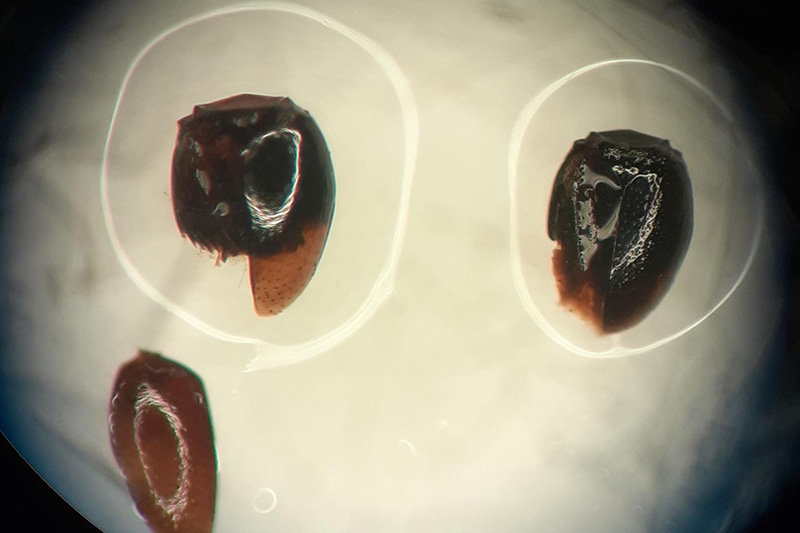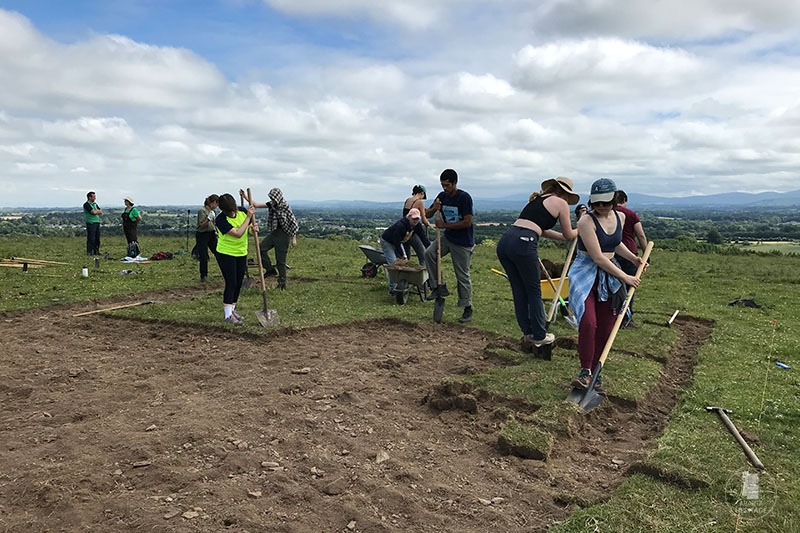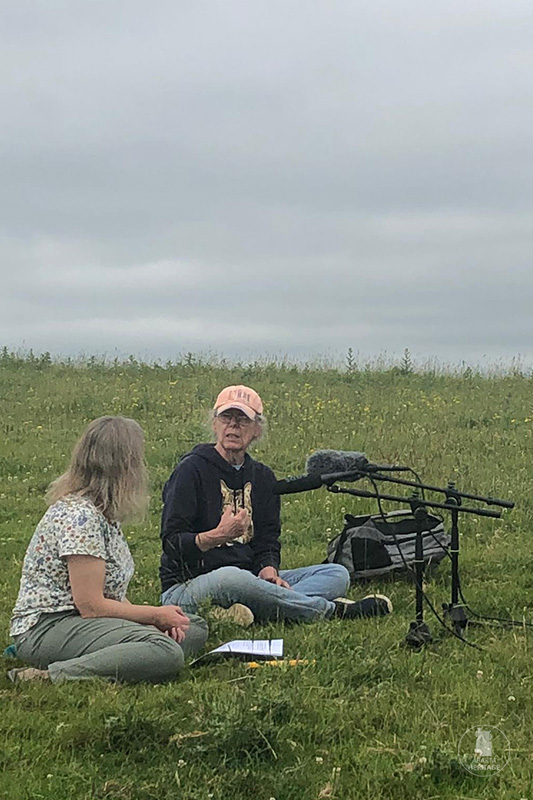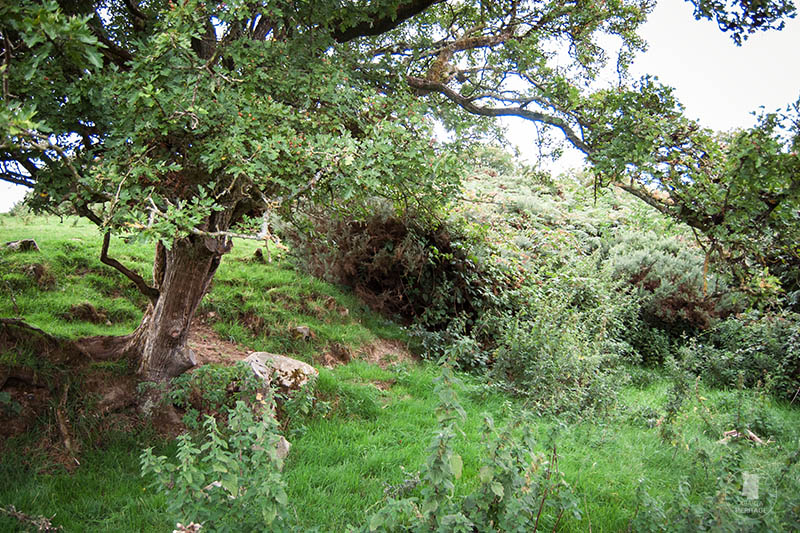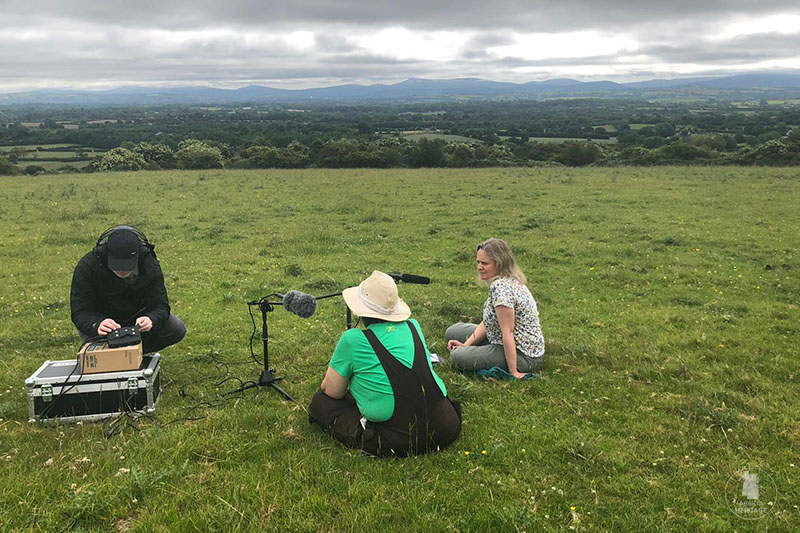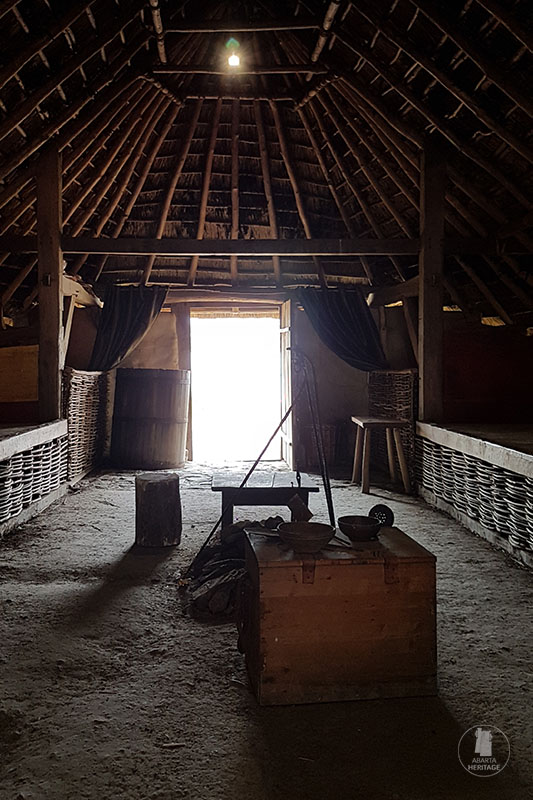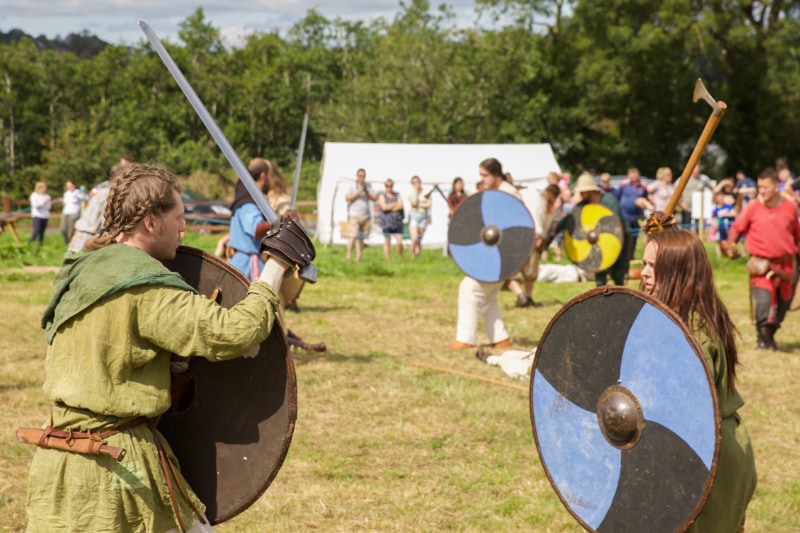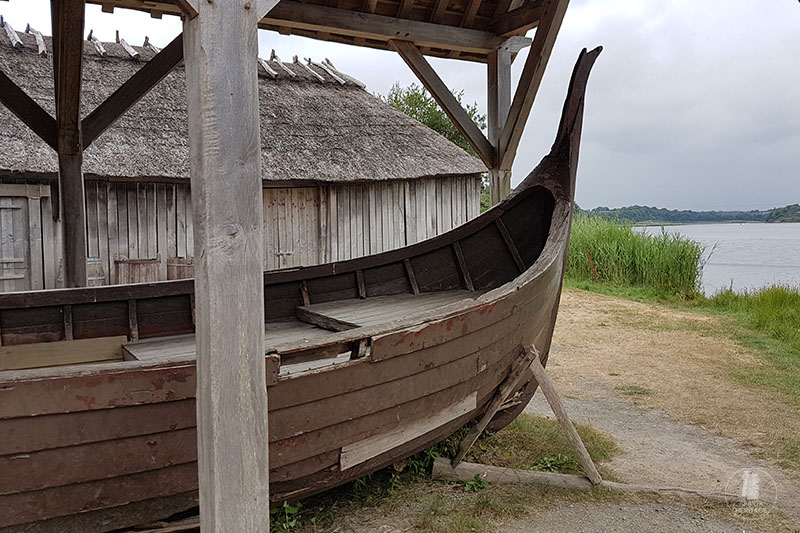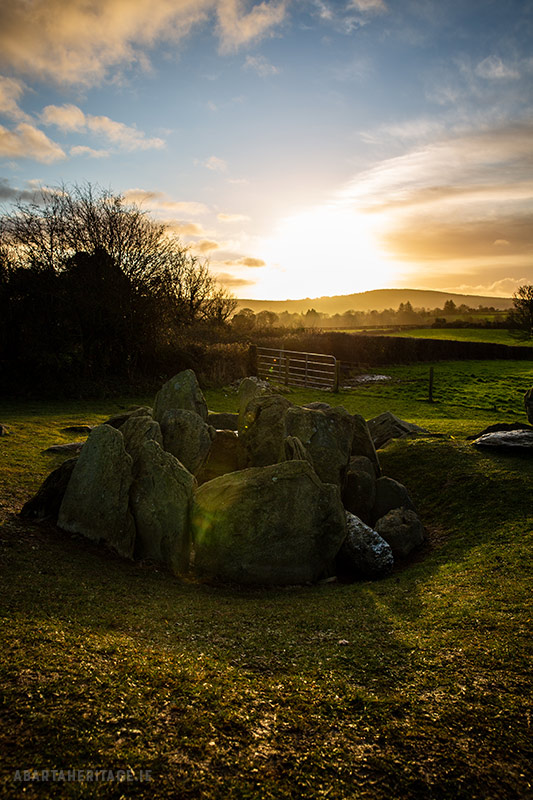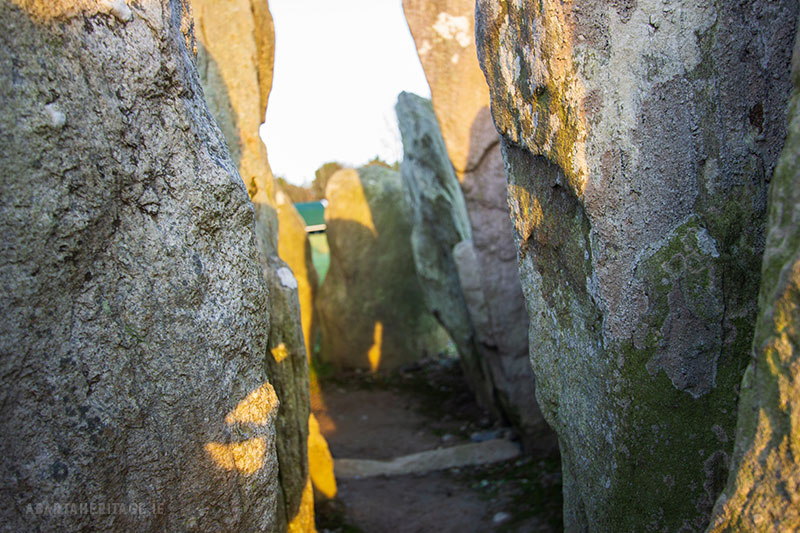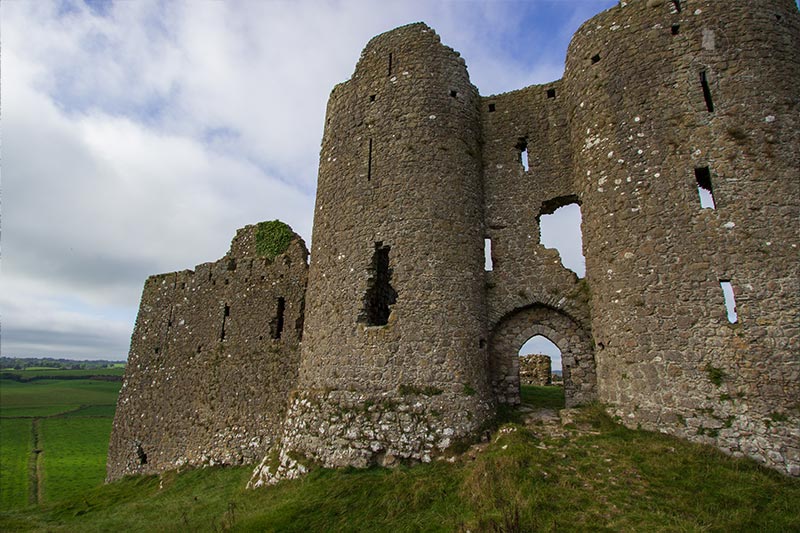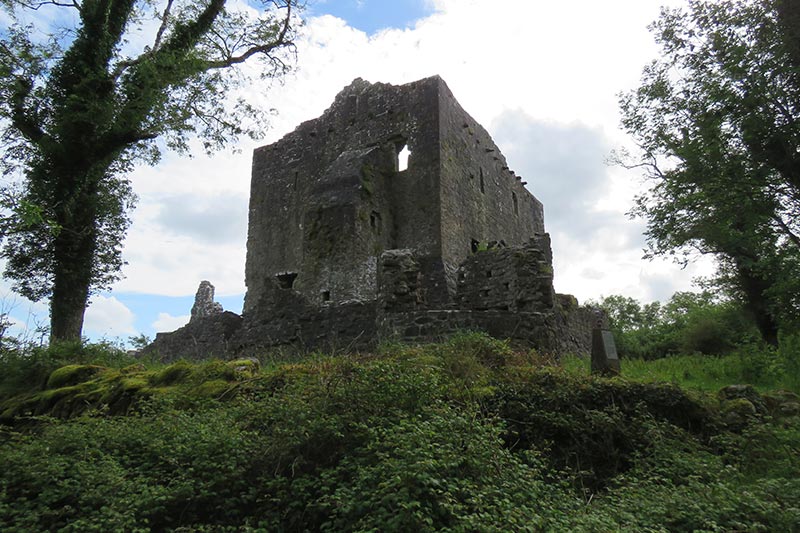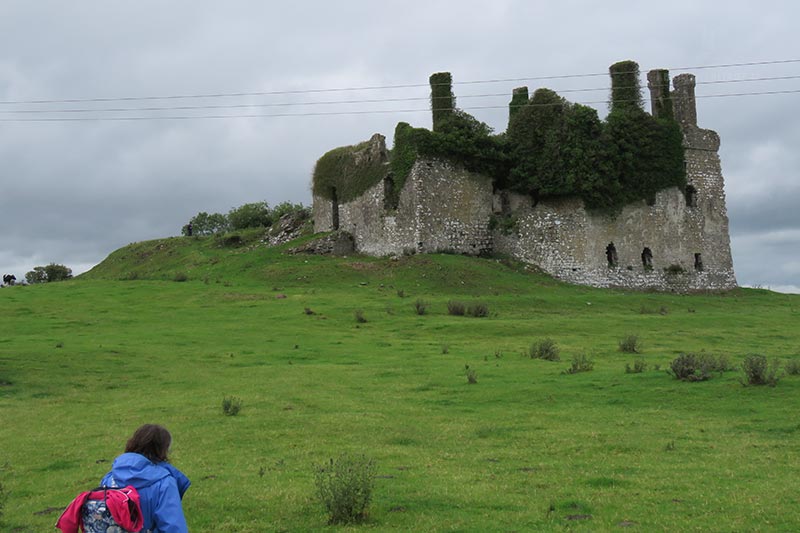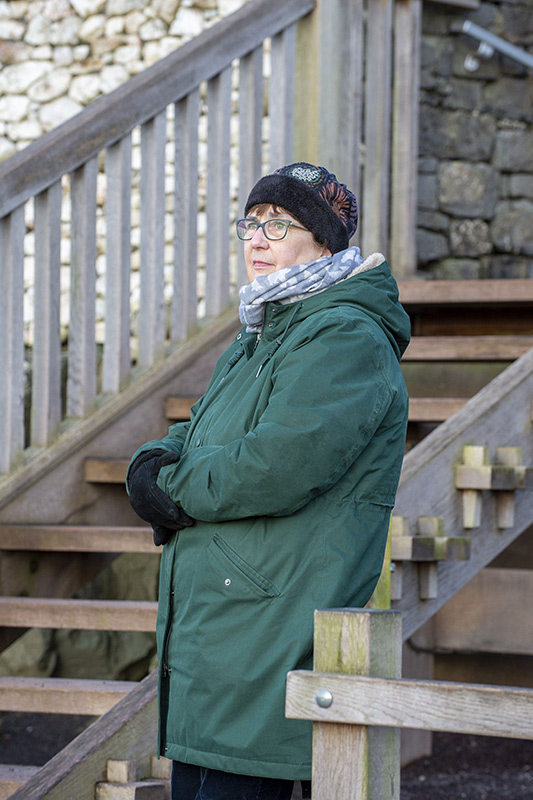- Affärsnyheter
- Alternativ hälsa
- Amerikansk fotboll
- Andlighet
- Animering och manga
- Astronomi
- Barn och familj
- Baseball
- Basket
- Berättelser för barn
- Böcker
- Brottning
- Buddhism
- Dagliga nyheter
- Dans och teater
- Design
- Djur
- Dokumentär
- Drama
- Efterprogram
- Entreprenörskap
- Fantasysporter
- Filmhistoria
- Filmintervjuer
- Filmrecensioner
- Filosofi
- Flyg
- Föräldraskap
- Fordon
- Fotboll
- Fritid
- Fysik
- Geovetenskap
- Golf
- Hälsa och motion
- Hantverk
- Hinduism
- Historia
- Hobbies
- Hockey
- Hus och trädgård
- Ideell
- Improvisering
- Investering
- Islam
- Judendom
- Karriär
- Kemi
- Komedi
- Komedifiktion
- Komediintervjuer
- Konst
- Kristendom
- Kurser
- Ledarskap
- Life Science
- Löpning
- Marknadsföring
- Mat
- Matematik
- Medicin
- Mental hälsa
- Mode och skönhet
- Motion
- Musik
- Musikhistoria
- Musikintervjuer
- Musikkommentarer
- Näringslära
- Näringsliv
- Natur
- Naturvetenskap
- Nyheter
- Nyhetskommentarer
- Personliga dagböcker
- Platser och resor
- Poddar
- Politik
- Relationer
- Religion
- Religion och spiritualitet
- Rugby
- Så gör man
- Sällskapsspel
- Samhälle och kultur
- Samhällsvetenskap
- Science fiction
- Sexualitet
- Simning
- Självhjälp
- Skönlitteratur
- Spel
- Sport
- Sportnyheter
- Språkkurs
- Stat och kommun
- Ståupp
- Tekniknyheter
- Teknologi
- Tennis
- TV och film
- TV-recensioner
- Underhållningsnyheter
- Utbildning
- Utbildning för barn
- Verkliga brott
- Vetenskap
- Vildmarken
- Visuell konst
Amplify Archaeology Podcast
Welcome to the Amplify Archaeology Podcast.
47 avsnitt • Längd: 55 min • Oregelbundet
Om podden
Welcome to the Amplify Archaeology Podcast. This podcast series seeks to introduce you to some of the key themes and exciting new projects in Irish archaeology. We will feature a series of interviews with a number of Ireland’s archaeologists and experts to gain new insights into life in the past, the key sites, places and periods and the practice of Irish Archaeology. In this series you’ll hear news from the trenches of exciting excavations and discussions with experts who answer questions like; where did the first hunter gatherers come from? Who built passage tombs? What did people eat in the past? We’ll also discuss the practice of archaeology, to show how we use scientific techniques to reconstruct past environments, how groups can work together on collaborative community projects, and how we tell the story of Ireland through its material culture. The AmplifyArchaeology podcast is presented by Neil Jackman, an archaeologist and director of Abarta Heritage. For more information please visit www.abartaheritage.ie
The podcast Amplify Archaeology Podcast is created by Neil Jackman. The podcast and the artwork on this page are embedded on this page using the public podcast feed (RSS).
Avsnitt
Excavations at Rathgall Hillfort Amplify Archaeology Podcast
Excavations at Rathgall Hillfort
Dig into the Story in Amplify Archaeology Podcast Episode 46 with Dr Katharina Becker
In this episode of Amplify Archaeology Podcast, Neil is joined by Dr Katharina Becker to dig into the story of Rathgall Hillfort and the groundbreaking excavations by Professor Barry Raftery.
Located in the borderlands of County Wicklow and Carlow, Rathgall is one of the most well known of Ireland’s hillforts. The story of this truly monumental site was uncovered by Professor Barry Raftery over the course of a number of seasons of excavations in the late 1960s and 1970s. The digs revealed evidence of high status metalwork, cremation and burial, and how the site has been a place of significance for millennia. Although Professor Raftery published aspects of the site primarily in the 1970s, he sadly passed away before he could finalise a comprehensive account.
In this episode of Amplify Archaeology Podcast, I had the opportunity to dig into the story of Rathgall with Dr Katharina Becker, the co-author of a fantastic new Wordwell publication A Hillfort Through Time. This new book brings together all of Professor Raftery’s work, and maintains his thoughts and ideas about the site, skilfully augmented and recontextualized with contemporary evidence and theory.
As we chat, Katharina discusses the fascinating archaeological discoveries, and what Rathgall can tell us about Bronze Age Ireland, whether we can still call Rathgall a hillfort, and the incredible legacy of the late Professor Barry Raftery.
Amplify Archaeology Podcast is sponsored by Tuatha, this is our online membership with a growing community of like-minded people who love exploring Ireland’s sites, landscapes and heritage. You can find out more and start your own Irish archaeological adventure at tuatha.ie.
AMPLIFY ARCHAEOLOGY PODCAST
AMPLIFY ARCHAEOLOGY PODCAST
Title: Round Towers
Duration: 68 mins.
Summary:
Dr Katharina Becker joins us in this episode to discuss Professor Barry Raftery’s excavations at Rathgall.
Excavations at Rathgall Hillfort – Key Discussion Points and Show Notes
- Introduction to Rathgall and its context – 1 min 50 secs
- Professor Barry Raftery and his legacy in Irish archaeology – 3 min 05 secs
- Was there much awareness about Rathgall amongst antiquarians? – 6 min 39 secs
- Why did Barry choose to excavate at Rathgall? – 8 min 10 secs
- How did the excavations begin and how were they funded? – 11 min 55 secs
- The seasons at Rathgall – 13 min 30 secs
- Was the plan to do multiple seasons there from the outset? – 16 min 05 secs
- The earliest evidence at Rathgall – 17 min 28 secs
- Bronze Age Rathgall – 18 min 57 secs
- The ramparts – 22 mins 51 secs
- Can we really call Rathgall a hillfort?– 31 mins 21 secs
- Transformation through fire – metalworking and cremation – 32 mins 46 secs
- Metalworking and production – 37 mins 30 secs
- The astonishing gold-mounted glass bead and other items of personal dress – 37 mins 27 secs
- Potential sources of gold for Bronze Age Ireland – 43 mins 07 secs
- The Iron Age – 45 mins 28 secs
- Early Medieval and Medieval Rathgall– 49 mins 30 secs
- What is the significance of Rathgall? – 51 mins 32 secs
- The importance of charcoal and environmental analysis – 57 mins 40 secs
- What was the impetus for the book, and what was the process of working on it like? – 1 hour 1 min
Show notes and links to further information
- I highly recommend the publication, A Hillfort Through Time: Excavations at Rathgall, Co. Wicklow by Barry Raftery and Katharina Becker. You can order it directly from the publisher Wordwell here.
- It appears to be out of print now, but you can still find copies of Barry’s landmark book Pagan Celtic Ireland: The Enigma of the Irish Iron Age circulating out there. The terrible all-encompassing website named after a South American River might have it. But if you can, try your local bookshop or local library first.
- Incidentally if you’d like to see something lovely, you can see an image of the incredible Milmorane Bead here that got a brief mention. It was found as part of a small hoard in a bog in County Cork. It really is special, and it is the only thing close to the gold mounted glass bead found at Rathgall. I always marvel at the intricate skill needed to work at that tiny scale.
- I hope you enjoyed the show, please do leave us a review on Spotify or Apple Podcasts if you can, or share the episode using the podcast #AmplifyArchaeology – it really does help us to be found so I’d be very grateful!
- If you’d like to dig deeper into the stories of Ireland you’ll love our membership service Tuatha. You’ll find online courses on Irish archaeology and heritage, articles on places to visit, itineraries for great days out, opportunities to join us on our monthly lecture series and on our tours, and lots more! You can learn more and sign up here. And remember to use your coupon code AMPLIFY20 for 20% off.
Dig into more stories with Amplify Archaeology Podcast
The post Excavations at Rathgall Hillfort Amplify Archaeology Podcast appeared first on Abarta Heritage Home.
Round Towers Amplify Archaeology Podcast
Round Towers
Dig into the Story in Amplify Archaeology Podcast Episode 45 with Christiaan Corlett
Ireland’s round towers are one of the most distinctive features of our historic landscapes. But what do we know of these iconic structures, when do they date to, and who built them? In this episode of Amplify Archaeology Podcast, Neil is joined by archaeologist Christiaan Corlett to dig into the story.
Ireland’s round towers are some of our most instantly recognisable reminders of our past. If you’ve ever visited the likes of the Rock of Cashel, Glendalough, Clonmacnoise – or even driven down the M8 motorway – you may have marvelled at these soaring structures. But when were they built and why? Who commissioned them and how were they constructed? A fantastic new publication provides an insight into these iconic monuments. It’s by archaeologist Christiaan Corlett of the National Monuments Service, who joins Neil to discuss the potential origins, dating, and purpose of our round towers.
Amplify Archaeology Podcast is sponsored by Tuatha, this is our online membership with a growing community of like-minded people who love exploring Ireland’s sites, landscapes and heritage. You can find out more and start your own Irish archaeological adventure at tuatha.ie.
AMPLIFY ARCHAEOLOGY PODCAST
AMPLIFY ARCHAEOLOGY PODCAST
Title: Round Towers
Duration: 54 mins.
Summary:
Archaeologist Christiaan Corlett joins us in this episode to discuss Ireland’s iconic round towers.
Round Towers – Key Discussion Points and Show Notes
- Introduction to round towers – 1 min 40 secs
- How did people understand round towers across time? – 3 min 20 secs
- Do we know which was the first built in Ireland? – 6 min 50 secs
- Are they regional, are there any significant concentrations? – 11 min 20 secs
- What were the reasons for building them? – 12 min 15 secs
- Patronage, power and influence – 13 min 24 secs
- How many do we have still standing, and how many have been lost? – 19 min 04 secs
- The scarily shallow foundations of round towers! – 21 min 30 secs
- Construction techniques – 24 min 20 secs
- The high doorways – 27 mins 14 secs
- More on the purpose of round towers– 27 mins 55 secs
- The stone masons who constructed round towers – 32 mins 07 secs
- Were round towers rendered? – 38 mins 30 secs
- Decorated doorways and features – 40 mins 51 secs
- Does Chris have a particular favourite? – 46 mins 30 secs
- The restoration of round towers – 48 mins 40 secs
- Recommendations of towers to visit– 51 mins 38 secs
Show notes and links to further information
- I highly recommend picking up a copy of Chris’ book. Not only will it give you a good sense of these monuments, but it is beautifully illustrated with fantastic photographs throughout. You can pick up a copy online from the publisher here.
- And you can find more books, images and other fantastic content from Chris on the Coles Lane Website.
- I hope you enjoyed the show, please do leave us a review on Spotify or Apple Podcasts if you can, or share the episode using the podcast #AmplifyArchaeology – it really does help us to be found so I’d be very grateful!
- If you’d like to dig deeper into the stories of Ireland you’ll love our membership service Tuatha. You’ll find online courses on Irish archaeology and heritage, articles on places to visit, itineraries for great days out, opportunities to join us on our monthly lecture series and on our tours, and lots more! You can learn more and sign up here. And remember to use your coupon code AMPLIFY20 for 20% off.
Dig into more stories with Amplify Archaeology Podcast
The post Round Towers Amplify Archaeology Podcast appeared first on Abarta Heritage Home.
Digging Drumanagh Amplify Archaeology Podcast
Digging Drumanagh
Dig into the Story in Amplify Archaeology Podcast Episode 44 with Christine Baker
Underneath the quiet fields on the headland of Drumanagh in North County Dublin, lies a truly exciting story. This headland is home to one of the most important promontory forts in Ireland, where an innovative community archaeology programme is uncovering connections between Iron Age Ireland and the Roman World. Lead archaeologist Christine Baker tells us all about it in this episode of Amplify Archaeology Podcast.
Located between the villages of Loughshinny and Rush in North County Dublin, the headland at Drumanagh is a prominent local landmark that has become a popular place for dog walkers and people seeking a good blast of fresh sea air. Its strategic aspect can clearly be seen in the early 19th century martello tower at the end of the promontory, but sharp-eyed visitors may well have noticed that the headland is underscored by earthworks and a deep ditch. A hint about a deeper, older story that lies beneath the surface. Over the last number of years, the Digging Drumanagh Project has sought to uncover that story. What they have revealed is transformative to our understanding of connections between Iron Age Ireland and the wider Roman world beyond.
Christine Baker is the Heritage Officer for Fingal County Council. Christine has long been a pioneer of community archaeology in Ireland. Along with the Digging Drumanagh, Christine has carried out a number of important public engagement excavations, surveys and projects, including excavations at Swords Castle, Climate Heritage X (that we had the pleasure of helping with). 2025 marks ten years of the Fingal Community Archaeology Programme, which is an incredible achievement. As community and public archaeology is something I am passionate about myself, I was thrilled to have the opportunity to chat with Christine about her experiences. I hope you enjoy the episode.
The Digging Drumanagh post-excavation process is ongoing. The archaeological director is Christine Baker, specialists Siobhan Duffy (Artefacts & Zooarchaeology), Alex Croom (Pottery), Prof. Meriel McClatchie (Archaeobotanical remains), Dr. Erin Crowley-Champoux (Molluscs) for sharing their initial findings. The on-site team includes Stephen Johnston, Dr John Sunderland, Dr Penny Johnston, Siobhan Duffy and Máiréad Ní Challanáin, as well as all the fantastic participants of Digging Drumanagh. The scheme is funded by Fingal County Council and supported by the Heritage Council. You can find out more on their website here. The images on this page are courtesy of Fingal County Council and the Digging Drumanagh Project.
Amplify Archaeology Podcast is sponsored by Tuatha, this is our online membership with a growing community of like-minded people who love exploring Ireland’s sites, landscapes and heritage. You can find out more and start your own Irish archaeological adventure at tuatha.ie.
AMPLIFY ARCHAEOLOGY PODCAST
AMPLIFY ARCHAEOLOGY PODCAST
Title: Digging Drumanagh
Duration: 47 mins.
Summary:
Archaeologist Christine Baker joins us in this episode to discuss community archaeology and the fascinating excavations at Drumanagh that casts new light on the connections between Iron Age Ireland and the Roman World.
Digging Drumanagh – Key Discussion Points and Show Notes
- Introduction to Drumanagh – location and what it’s like today – 1 min 26 secs
- What are promontory forts? When do they date to? – 4 min 10 secs
- The threat to promontory forts from climate change – 7 min 10 secs
- What was known about Drumanagh before the project? – 8 min 55 secs
- Did the later activity like the martello tower impact the earlier archaeology? – 12 min 40 secs
- What does Drumanagh tell us about connections with Rome? – 13 min 24 secs
- How did the council become involved with Drumanagh? – 15 min 45 secs
- What were the original research questions and objectives for the Drumanagh project? – 18 min 35 secs
- What did the project uncover? – 21 min 05 secs
- The evidence for craft and industry at Drumanagh – 27 mins 20 secs
- The famous fig – 31 mins 30 secs
- The Fingal Community Archaeology Project – 37 mins 10 secs
- The importance of community archaeology – 42 mins 10 secs
Show notes and links to further information
- I highly recommend digging into the Fingal County Council website where you can find excavation reports, videos, information about how to take part and a whole lot more on the Drumanagh project. You can find that here.
- Please do leave us a review on Spotify or Apple Podcasts if you can, or share the episode using the podcast #AmplifyArchaeology – it really does help us to be found so I’d be very grateful!
- If you’d like to dig deeper into the stories of Ireland you’ll love our membership service Tuatha. You’ll find online courses on Irish archaeology and heritage, articles on places to visit, itineraries for great days out, opportunities to join us on our monthly lecture series and on our tours, and lots more! You can learn more and sign up here.
Dig into more stories with Amplify Archaeology Podcast
The post Digging Drumanagh Amplify Archaeology Podcast appeared first on Abarta Heritage Home.
Irish Hillforts Amplify Archaeology Podcast
Irish Hillforts
Dig into the Story of Irish Hillforts in Amplify Archaeology Podcast Episode 43 with Dr James O’Driscoll
Irish Hillforts are some of our largest monuments, though until recently they remained relatively enigmatic. In recent years Dr James O’Driscoll has started to uncover their story, he tells us all about it in this episode of Amplify Archaeology Podcast.
The name ‘hillfort’ is quite descriptive, as at first glance they appear as well, large forts on top of hills. Though the work of Dr James O’Driscoll and colleagues have revealed that they have a far more interesting and nuanced tale to tell. A programme of survey and excavation carried out by James, Prof. William O’Brien and colleagues discovered much about the nature and chronology of Irish hillforts, along with the types of activities that were carried out within them.
This discussion teases out the question of what is a hillfort, the types of landscape that they can be found in, their period and how that compares with similar monuments in the UK and elsewhere, and what they might tell us about territoriality, trade, culture and landscape in the past.
Dr James O’Driscoll lectures in the University of Glasgow. James’ primary research is focused on the application of remote sensing and GIS based techniques in archaeology, with particular emphasis on prehistoric enclosures and Bronze Age hillforts, their contemporary landscapes and socio-economic setting. James has co-authored two important books on the subject, Hillforts, Warfare and Society in Bronze Age Ireland, and the recently published Baltinglass and the Prehistoric Hillforts of Ireland.
Amplify Archaeology Podcast is sponsored by Tuatha, an online membership with a growing community of like-minded people who love exploring Ireland’s sites, landscapes and heritage. You can find out more and start your own Irish archaeological adventure at tuatha.ie.
AMPLIFY ARCHAEOLOGY PODCAST
AMPLIFY ARCHAEOLOGY PODCAST
Title: Irish Hillforts
Duration: 1 hour 11 mins.
Summary:
In this fascinating discussion with Dr James O’Driscoll we discuss Irish hillforts in terms of period, place and what they can tell us about societies in the past.
Irish Hillforts – Key Discussion Points
- Introduction to Irish Hillforts – 1 min
- Where can you find hillforts? – 7 min 47 secs
- Their association with political boundaries – 10 min 05 secs
- What drew James to study hillforts – 15 min 25 secs
- The study of hillforts that led to the publication of Hillforts, Warfare and Society – 18 min 20 secs
- Neolithic hillforts – 24 min 14 secs
- Introduction to the Baltinglass Complex – 28 min 50 secs
- Why is the Baltinglass area so special? – 36 min 50 secs
- Upland interactions and the use of hillforts – 40 min 20 secs
- The inland promontory fort of Caherconree – 53 mins 27 secs
- What should people picture when they are thinking of a hillfort – 1 hour 2 mins
- What hillforts are good to visit? – 1 hour 4 mins
Show notes and links to further information
- I highly recommend Baltinglass and the Prehistoric Hillforts of Ireland by James O’Driscoll, Alan Hawkes & William O’Brien, published by Wordwell. You can order online here.
- And James’s earlier book Hillforts, Warfare and Society in Bronze Age Ireland is available from Archaeopress here.
- You can find a number of papers by James on Academia.edu here.
- You can read more on the history and visitor experience at the Grianán of Aileach here.
- You can read more on the history and visitor experience at Rathmichael Hillfort here.
- Please do leave us a review on Spotify or Apple Podcasts if you can, or share the episode using the podcast #AmplifyArchaeology – it really does help us to be found so I’d be very grateful!
- If you’d like to dig deeper into the stories of Ireland you’ll love our membership service Tuatha. You’ll find online courses on Irish archaeology and heritage, articles on places to visit, itineraries for great days out, opportunities to join us on our monthly lecture series and on our tours, and lots more! You can learn more and sign up here.
Dig into more stories with Amplify Archaeology Podcast
The post Irish Hillforts Amplify Archaeology Podcast appeared first on Abarta Heritage Home.
Community Archaeology at St Annes Park Amplify Archaeology Podcast
Community Archaeology at St Anne’s Park
Dig into the Story in Amplify Archaeology Podcast Episode 42 with James Kyle
Community Archaeology at St Anne’s Park
Dig into the Story in Amplify Archaeology Podcast Episode 42 with James Kyle
A wonderful community archaeology project has been underway at St Anne’s Park in Dublin City. Excavation director James Kyle tells us all about it in this episode of Amplify Archaeology Podcast.
An elegant historic house, once owned by the famous Guinness Family, proudly stood in part of what is now known as St Anne’s Park. The building was destroyed by fire in the 1940s, before being completely demolished in the 1960s. However, a dynamic community archaeology project has been underway to help to uncover its story. The dig includes members of the local community who work alongside experienced archaeologists. The preservation of in-situ architectural features and deposits relating to the occupation, fire and demolition of the structure ensures the opportunity for volunteers to engage with tangible archaeological material as well as assess the phases of the structural development and ultimate demise of the house.
Now in its fourth year, the Saint Anne’s Park Community Archaeology Programme was launched in 2021 as a partnership project under the Dublin City Strategic Heritage Plan. It is a collaboration between DCC Parks Biodiversity and Landscape Services and the Archaeology and Heritage Sections of the Planning and Property Development Department. The programme is partially funded by the Heritage Council and the Creative Ireland Programme, and has been delivered by Archaeology and Built Heritage Ltd, with the support of a fantastic group of community volunteers.
The archaeological director James Kyle leads us through the story of the lost house, as we discuss the practice of community archaeology, wellbeing in heritage and more. So let’s dig into the story of community archaeology in St Anne’s Park in this episode of Amplify Archaeology Podcast!
(all images courtesy of Archaeology and Built Heritage Ltd)
AMPLIFY ARCHAEOLOGY PODCAST
AMPLIFY ARCHAEOLOGY PODCAST
Title: Island Pilgrimage
Duration: 50 mins.
Summary:
Hear about a fantastic community archaeology project in St Anne’s Park, Dublin.
Community Archaeology at St Anne’s Park – Key Discussion Points
- Introduction to St Anne’s Park and the project – 1 min 22 secs
- What could be seen of the house prior to excavation? – 5 min 20 secs
- How did surviving documents and maps help the dig? – 9 min 20 secs
- The dig throw up any surprises? – 10 min 01 secs
- Has the dig changed people’s perception of the park? – 14 min 45 secs
- Public interest in archaeology – 16 min 20 secs
- The tangibility of early modern archaeology – 19 min 15 secs
- The community involvement in the excavation – 21 min 06 secs
- What do we mean by the ‘community’ in community archaeology, who was involved? – 26 min 20 secs
- Archaeology and wellbeing – 28 mins 22 secs
- How can we make archaeology more inclusive and engaging for the public? – 34 min 30 secs
- Has the project changed people’s perceptions of place? – 34 min 24 secs
- What’s the future of the project? – 41 min 45 secs
Show notes and links to further information
- You can find information on the St Anne’s Park Community Archaeology Project on Facebook, Instagram or Twitter.
- You can also find a short video on the project on YouTube.
- Please do leave us a review on Spotify or Apple Podcasts if you can, or share the episode using the podcast #AmplifyArchaeology – it really does help us to be found so I’d be very grateful!
- If you’d like to dig deeper into the stories of Ireland you’ll love our membership service Tuatha. You’ll find online courses like an Introduction to Irish Archaeology with Neil Jackman, another giving you the skills to dig into your own family history with an Introduction to Irish Genealogy with Tara Clarke, and examine the pivotal era of Early Medieval Ireland with Dr Sharon Greene. You’ll also find hundreds of articles on places to visit, itineraries for great days out, opportunities to join us on our monthly lecture series and on our tours, and lots more! You can learn more and sign up here. Use coupon code AMPLIFY20 for 20% off your first subscription.
Dig into more stories with Amplify Archaeology Podcast
The post Community Archaeology at St Annes Park Amplify Archaeology Podcast appeared first on Abarta Heritage Home.
Excavations at Knowth Amplify Archaeology Podcast
Excavations at Knowth
Dig into the Story of Knowth in Amplify Archaeology Podcast Episode 41 with Dr Kerri Cleary
Excavations at Knowth
Dig into the Story of Knowth in Amplify Archaeology Podcast Episode 41 with Dr Kerri Cleary
In this episode of Amplify Archaeology Neil chats with Dr Kerri Cleary about Professor George Eogan’s excavations at Knowth.
There are few places as deeply layered in stories as Knowth. Located in the famous bend of the Boyne like its near neighbour Newgrange, Knowth has been a place of significance for millennia. Through the Neolithic as a place of settlement and ritual, an Iron Age ancestral burial ground, an early medieval ‘royal’ residence of the kings of North Brega, and activity continued through the medieval period and onwards. Today Knowth is part of the celebrated Brú na Bóinne World Heritage Site, and visited by thousands of people every year. Its complex story was uncovered in a truly monumental series of excavations led by the late Professor George Eogan. In this episode of Amplify Archaeology Podcast, Neil chats with Dr Kerri Cleary who discusses those excavations and George’s incredible legacy in Irish archaeology, and describes the story of Knowth through time. Kerri is the co-author of a fantastic new guidebook to Knowth published by the Royal Irish Academy, that provides a wonderfully accessible introduction to this incredible archaeological complex.
The images here are all courtesy of the Royal Irish Academy.

Professor George Eogan at Knowth
Courtesy of the Knowth Archive, Royal Irish Academy

Knowth Guidebook
Knowth Guidebook, Royal Irish Academy

Sandmartins at Knowth
By Uisce Jakubczyk, Courtesy of the Royal Irish Academy

Artist's impression of the passage tomb construction phase
By Steve Doogan. Courtesy of the Royal Irish Academy

Artist's impression of the passage tomb cemetery at Knowth
By Steve Doogan. Courtesy of the Royal Irish Academy
AMPLIFY ARCHAEOLOGY PODCAST
AMPLIFY ARCHAEOLOGY PODCAST
Title: Excavations at Knowth
Duration: 1 hour 16 mins.
Summary:
In this episode of Amplify Archaeology Neil chats with Dr Kerri Cleary about Professor George Eogan’s excavations at Knowth.
Excavations at Knowth – Key Discussion Points
- What and where is Knowth? – 2 min 14 secs
- Professor George Eogan – 5 min 40 secs
- Kerri’s links with Knowth – 9 min 05 secs
- What was Knowth like before George started work? – 11 min 04 secs
- What was the background to the excavation? – 14 min 40 secs
- The experience of the excavation– 18 min 18 secs
- The excavations at Knowth and Newgrange overlap, did they influence each other? – 21 min 55 secs
- The chronology of Knowth, beginning with its earliest origins – 25 min 30 secs
- The megalithic art at Knowth – 34 min 03 secs
- Knowth in the Bronze Age – 40 min 12 secs
- Knowth in the Iron Age – 44 min 15 secs
- Knowth in the Early Medieval Period – 48 min 39 secs
- The Mythology of Knowth – 52 min 40 secs
- Knowth as part of the World Heritage Site – 57 min 20 secs
- Knowth as part of the World Heritage Site – 57 min 20 secs
- The Guidebook to Knowth – 1 hour 04 min 17 secs
- The Knowth Macehead – 1 hour 09 min 41 secs
Show notes and links to further information
- You can pick up a copy of the brilliant new guidebook from the Royal Irish Academy here.
- And you can enjoy a deep dive into the details of the excavations at Knowth in the seven volume series now available Open Access on the Digital Repository of Ireland here.
- Please do leave us a review on Spotify or Apple Podcasts if you can, or share the episode on social media using the podcast #AmplifyArchaeology – it really does help us to be found so I’d be very grateful!
- If you’d like to dig deeper into the stories of Ireland you’ll love our membership service Tuatha. You’ll find online courses on Irish archaeology and heritage, articles on places to visit, itineraries for great days out (including one on the Boyne Valley featuring Knowth), opportunities to join us on our monthly lecture series and on our tours, and lots more! You can learn more and sign up here, and don’t forget to use the coupon code AMPLIFY20, to get 20% off your first subscription.
- You can also purchase a gift membership to Tuatha, so if you have an archaeology aficionado in your life, or someone who loves going exploring Ireland’s ancient monuments, consider making the past their present. You can find monthly or annual vouchers here (and the coupon code works there too!).
Dig into more stories with Amplify Archaeology Podcast
The post Excavations at Knowth Amplify Archaeology Podcast appeared first on Abarta Heritage Home.
Death in Irish Prehistory Part 2 – Amplify Archaeology Podcast
Death in Irish Prehistory Part 2
Dig into the Story of Death in Irish Prehistory in Part 2 of Amplify Archaeology Podcast Episode 40 with Prof. Gabriel Cooney
Death in Irish Prehistory Part 2
Dig into the Story of Death in Irish Prehistory in Part 2 of Amplify Archaeology Podcast Episode 40 with Prof. Gabriel Cooney
This is the second part of an in-depth discussion with Professor Gabriel Cooney on his landmark publication – Death in Irish Prehistory.
The new publication Death in Irish Prehistory covers life and death over 8,500 years in Ireland. The book explores the richness of the mortuary record that we have for Irish prehistory (8000 BC to AD 500) as a highlight of the archaeological record for that long period of time. Because we are dealing with how people coped with death, this rich and diverse record of mortuary practice is also relevant to understanding how we deal with death today, which is just as central a social issue as it always was. Written by Professor Gabriel Cooney, and beautifully illustrated by Conor McHale, the book is a landmark publication for Irish archaeology. It is thoughtful, insightful and beautifully produced, and helps to humanise those who walked before us, some millennia ago.
In this episode of Amplify Archaeology Podcast, Neil has an in depth discussion with the author of Death in Irish Prehistory, Professor Gabriel Cooney. In this second and final part, we take a chronological approach and look at continuity, change and belief over 8,500 years. If you haven’t heard the first part, you can find that here.
With the exception of the banner that features an aerial image of a tomb at Carrowkeel, the images here are all courtesy of the Royal Irish Academy.
AMPLIFY ARCHAEOLOGY PODCAST
AMPLIFY ARCHAEOLOGY PODCAST
Title: Death in Prehistory Part Two
Duration: 1 hour 26 mins.
Summary:
In this second part of the discussion with Prof. Gabriel Cooney, we discuss the archaeology of death through time.
Death in Irish Prehistory Part 2 – Key Discussion Points
- Death in the Mesolithic Period – 1 min 55 secs
- Death in the Neolithic Period – 12 min 03 secs
- Death in the Chalcolithic Period – 23 min 34 secs
- Death in the Bronze Age – 29 min 00 secs
- Death in the Iron Age – 51 min 02 secs
- People’s connection to prehistoric mortuary sites today – 1 hour 8 min 18 secs
Show notes and links to further information
- If you didn’t hear the first part, I recommend checking that out here.
- Again I can’t recommend the book highly enough! You can purchase a copy here.
- Please do leave us a review on Spotify or Apple Podcasts if you can, or share the episode using the podcast #AmplifyArchaeology – it really does help us to be found so I’d be very grateful!
- If you’d like to dig deeper into the stories of Ireland you’ll love our new membership service Tuatha. You’ll find online courses on Irish archaeology and heritage, articles on places to visit (including lots of the sites discussed in this podcast), itineraries for great days out (including one on the Boyne Valley featuring a number of the megalithic tombs discussed here), opportunities to join us on our monthly lecture series and on our tours, and lots more! You can learn more and sign up here.
- You can now purchase a gift membership to Tuatha, so if you have an archaeology aficionado in your life, or someone who loves going exploring Ireland’s ancient monuments, consider making the past their present. You can find monthly or annual vouchers here.
Dig into more stories with Amplify Archaeology Podcast
The post Death in Irish Prehistory Part 2 – Amplify Archaeology Podcast appeared first on Abarta Heritage Home.
Death in Irish Prehistory Part 1 – Amplify Archaeology Podcast
Death in Irish Prehistory Part I
Dig into the Story of Death in Irish Prehistory in Amplify Archaeology Podcast Episode 40 with Prof. Gabriel Cooney
Death in Irish Prehistory Part I
Dig into the Story of Death in Irish Prehistory in Amplify Archaeology Podcast Episode 40 with Prof. Gabriel Cooney
This is the first part of an in-depth discussion with Professor Gabriel Cooney on his landmark publication – Death in Irish Prehistory.
The new publication Death in Irish Prehistory covers life and death over 8,500 years in Ireland. The book explores the richness of the mortuary record that we have for Irish prehistory (8000 BC to AD 500) as a highlight of the archaeological record for that long period of time. Because we are dealing with how people coped with death, this rich and diverse record of mortuary practice is also relevant to understanding how we deal with death today, which is just as central a social issue as it always was. Written by Professor Gabriel Cooney, and beautifully illustrated by Conor McHale, the book is a landmark publication for Irish archaeology. It is thoughtful, insightful and beautifully produced, and helps to humanise those who walked before us, some millennia ago.
In this episode of Amplify Archaeology Podcast, Neil has an in depth discussion with the author of Death in Irish Prehistory, Professor Gabriel Cooney. In this part, we discuss the archaeology of death, and how we know what we know. And what the types of evidence can reveal about life, death and belief in prehistoric Ireland. Don’t forget to join us for part two, where we take a chronological approach and look at continuity, change and belief over 8500 years. You can find Part Two of the discussion here.
With the exception of the banner that features an aerial image of Fourknocks Passage Tomb, the images here are all courtesy of the Royal Irish Academy.
AMPLIFY ARCHAEOLOGY PODCAST
AMPLIFY ARCHAEOLOGY PODCAST
Title: Death in Prehistory Part One
Duration: 55 mins.
Summary:
In this first part of the discussion with Prof. Gabriel Cooney, we discuss the archaeology of death.
Death in Irish Prehistory Part 1 – Key Discussion Points
- A chat about cultural relativism – 2 min 30 secs
- The impetus behind the book and the way that it is structured – 9 min 30 secs
- What can archaeology tell us about life and death – 13 min 34 secs
- How to be an objective observer as an archaeologist – 17 min 35 secs
- While archaeology can tell us about practice what can it tell us of belief? – 19 min 40 secs
- The development of archaeological practice and theory in relation to prehistoric mortuary sites – 29 min 55 secs
- Do we have better evidence for some periods than others? – 37 min 06 secs
- Is there a danger of selection bias when it comes to the circumstances and type of sites excavated? – 40 min 05 secs
- Is there an inherit bias in terms of who was buried and how? Includes discussion of survival bias – 45 min 03 secs
Show notes and links to further information
- You can find Part Two of the discussion here.
- I can’t recommend the book highly enough! You can purchase a copy here.
- Please do leave us a review on Spotify or Apple Podcasts if you can, or share the episode using the podcast #AmplifyArchaeology – it really does help us to be found so I’d be very grateful!
- If you’d like to dig deeper into the stories of Ireland you’ll love our new membership service Tuatha. You’ll find online courses on Irish archaeology and heritage, articles on places to visit, itineraries for great days out (including one on the Boyne Valley featuring a number of the megalithic tombs discussed here), opportunities to join us on our monthly lecture series and on our tours, and lots more! You can learn more and sign up here.
- You can now purchase a gift membership to Tuatha, so if you have an archaeology aficionado in your life, or someone who loves going exploring Ireland’s ancient monuments, consider making the past their present. You can find monthly or annual vouchers here.
Dig into more stories with Amplify Archaeology Podcast
The post Death in Irish Prehistory Part 1 – Amplify Archaeology Podcast appeared first on Abarta Heritage Home.
Island Pilgrimage – Amplify Archaeology Podcast
Island Pilgrimage: Holy Wells, Cures & Curses
Dig into the Story of Inishbofin and Inishark in Amplify Archaeology Podcast Episode 39 with Tommy Burke and Dr Ryan Lash
Island Pilgrimage: Holy Wells, Cures & Curses
Dig into the Story of Inishbofin and Inishark in Amplify Archaeology Podcast Episode 39 with Tommy Burke and Dr Ryan Lash
In this fascinating discussion with Tommy Burke and Dr Ryan Lash we discuss aspects of pilgrimage, faith and folklore on Inishbofin and Inishark.
The islands of Inishbofin and Inishark lie off the western coast of County Galway. They are beautiful places, though the breathtaking scenery is imbued with many stories. One of the most celebrated stories of Inishbofin is its connection to the famous St Colmán of Lindisfarne, who established a monastery here in the seventh century. Inishark is connected to the more enigmatic St Leo, and both islands have a long tradition of pilgrimage that centres around the early monastic remains found there. Though they may have began in the early medieval period, these pilgrimage traditions have adapted over the centuries, right up to the twentieth century, creating a blend of continuity and change with each generation of islanders.
This discussion with Tommy Burke and Dr Ryan Lash, looks at some of the key features of the pilgrimage landscape of the islands, and we hear about the discoveries of the research excavations that have taken place in recent years. We discuss holy wells and their origins, and folk belief around cures and curses. We also hear about the skulls taken in the 19th century from St Colmán’s Monastery, and the efforts by the local community and others in helping to secure their return after more than a century. From cures, curses, wells and wonders, this is a wide ranging chat, I hope you enjoy the episode!
AMPLIFY ARCHAEOLOGY PODCAST
AMPLIFY ARCHAEOLOGY PODCAST
Title: Island Pilgrimage
Duration: 1 hour 28 mins.
Summary:
In this fascinating discussion with Tommy Burke and Dr Ryan Lash we discuss aspects of pilgrimage, faith and folklore on Inishbofin and Inishark.
Island Pilgrimage – Key Discussion Points
- Introduction to Inishbofin and Inishark – 2 min 13 secs
- Overview of early medieval Christian aspects of the islands – 8 min 20 secs
- Pilgrimage and Turas – 13 min 09 secs
- Holy wells – 17 min 42 secs
- Cures – 22 min 18 secs
- Do Ireland’s holy wells have pagan origins? – 23 min 23 secs
- Curses – 31 min 07 secs
- The practice of pilgrimage – 37 min 38 secs
- The response of the Catholic Church to pattern days and ‘informal’ pilgrimage – 42 min 15 secs
- Island faith and practice in the absence of a priest – 49 mins 55 secs
- The Haddon Project and the repatriation of human remains – 58 min
- Sites at risk through climate change – 1 hour 14 min
- Where can people find out more? – 1 hour 16 mins
Show notes and links to further information
- You can find information on Tommy’s walking tours, including contact info for booking here.
- Tommy did a really interesting interview about Inishbofin during the Covid Lockdowns, available on YouTube.
- You can find a number of papers by Ryan on Academia.edu here.
- And he has a recorded talk that covers a broad sweep of the research on Inishbofin and Inishark available here.
- And there’s a new publication featuring a paper by Ryan: Holy Wells of Ireland: Sacred Realms and Popular Domains, available here.
- I highly recommend checking out Inis Airc: Bás Oileáin – Inishark: Death of an Island. A 2007 TG4 documentary about the abandonment of Inishark directed by Inishbofin film maker Kieran Concannon. You can find it here.
- And there’s a YouTube channel with short videos about Inishbofin and Inishark heritage available here.
- We highly recommend you follow the Facebook page for the Inishbofin Heritage Museum.
- A report by SkyNews that documented the reburial can be found here.
- And an article about the repatriation campaign here.
- You can read more on the visitor experience to Inishbofin here.
- Please do leave us a review on Spotify or Apple Podcasts if you can, or share the episode using the podcast #AmplifyArchaeology – it really does help us to be found so I’d be very grateful!
- If you’d like to dig deeper into the stories of Ireland you’ll love our new membership service Tuatha. You’ll find online courses on Irish archaeology and heritage, articles on places to visit, itineraries for great days out (including one on Connemara), opportunities to join us on our monthly lecture series and on our tours, and lots more! You can learn more and sign up here.
Dig into more stories with Amplify Archaeology Podcast
The post Island Pilgrimage – Amplify Archaeology Podcast appeared first on Abarta Heritage Home.
Excavations at Caherconnell Fort – Amplify Archaeology Podcast
Excavations at Caherconnell Fort
Dig into the Story of a Stone Fort in the Burren in Amplify Archaeology Podcast Episode 38 with Dr Michelle Comber
Excavations at Caherconnell Fort
Dig into the Story of a Stone Fort in the Burren in Amplify Archaeology Podcast Episode 38 with Dr Michelle Comber
In this fascinating discussion with Dr Michelle Comber, we discuss the excavations, the wealth of archaeology in the Burren, and generational continuity at Caherconnell Fort. We also hear from some of the excavation team who tell us of their experiences.
The Burren is one of my favourite places. It’s somewhat stark and bleak appearance gives a false impression of a barren landscape, when it is anything but. The valleys and high pastures of the Burren are thronged with archaeological monuments, representing millennia of settlement from the earliest phases of prehistory to the present day. This teeming historic landscape has remained relatively unaltered in comparison to other parts of Ireland. This offers wonderful opportunities to understand the monuments themselves, as well as their local landscapes, providing a contextual and cultural understanding of people and place.
There are few better examples of this sort of study than the ongoing series of excavations at Caherconnell Fort in the heart of the Burren. The site has been investigated through a number of field schools led by Dr. Michelle Comber of the University of Galway. The townland of Caherconnell is dominated by one of the largest stone forts in the Burren, and as well as the main fort there are two smaller ones, and a number of other archaeological monuments and features ranging in date from the prehistoric to the late medieval.
In this episode of the Amplify Archaeology Podcast, Neil had the opportunity to chat with Michelle to hear about the site itself, the field school and the fantastic collaborative and mutually beneficial model where archaeology, farming and tourism all benefit from a better understanding and appreciation of place. I hope you enjoy the episode!
AMPLIFY ARCHAEOLOGY PODCAST
AMPLIFY ARCHAEOLOGY PODCAST
Title: Excavations at Caherconnell Fort
Duration: 53 mins.
Summary:
In this fascinating discussion with Dr Michelle Comber we hear about an ongoing series of excavations at Caherconnell in the Burren.
Excavations at Caherconnell Fort – Key Discussion Points
- Why is the Burren so archaeologically rich? – 1 min 33 secs
- An introduction to the Caherconnell Project – 5 min 52 secs
- What is Caherconnell Fort and was it in use for a long time? – 10 min 00 secs
- The nature of the culture of the people of Caherconnell – 18 min 47 secs
- The relationship between the three stone forts of Caherconnell – 21 min 12 secs
- What did the people of Caherconnell in the early medieval period think about neighbouring monuments like Poulnabrone? – 26 min 15 secs
- Folklore and belief in the past – 28 min 40 secs
- The field school – 31 min 42 secs
- Visitors witnessing the process and history uncovered before their eyes – 37 min 01 secs
- The research framework and agenda – 39 mins 05 secs
- The future for Caherconnell and the tourism aspect of the site – 42 min 20 secs
- The positive connections between archaeology, education, tourism and landowners – 44 min 47 secs
- Field School participant Amelia Gibson – 46 mins 35 secs
- Field School participant Spencer Cantham – 47 min 13 secs
- Field School participant Jenny Sacher – 48 mins 21 secs
Show notes and links to further information
- You can discover more about visiting Caherconnell Fort here.
- You can learn more about the archaeological project at Caherconnell Fort here.
- And there’s even more to dig into (sorry for the pun) here.
- Keep up with the latest discoveries at Caherconnell by following them on Facebook and Twitter.
- Please do leave us a review on Spotify or Apple Podcasts if you can, or share the episode using the podcast #AmplifyArchaeology – it really does help us to be found so I’d be very grateful.
- If you’d like to dig deeper into the stories of Ireland you’ll love our new membership service Tuatha. You’ll find online courses on Irish archaeology and heritage, articles on places to visit, itineraries for great days out (including three on the Burren alone!), opportunities to join us on our monthly lecture series and on our tours, and lots more! You can learn more and sign up here.
Dig into more stories with Amplify Archaeology Podcast
The post Excavations at Caherconnell Fort – Amplify Archaeology Podcast appeared first on Abarta Heritage Home.
Viking Dogs – Amplify Archaeology Podcast
Viking Dogs
Hear about a fascinating new research project in Amplify Archaeology Podcast Episode 37 with Dr Ruth Carden & Dr Rebecca Boyd
Viking Dogs
Hear about a fascinating new research project in Amplify Archaeology Podcast Episode 37 with Dr Ruth Carden & Dr Rebecca Boyd
In previous episodes of Amplify Archaeology, we’ve focused on what life was like for people, but what was life like for animals in the past? In this episode we’re joined by Dr Ruth Carden and Dr Rebecca Boyd, who tell us about an exciting new collaborative research project seeks to dig into the story of Viking dogs.
In this episode of the Amplify Archaeology Podcast, Neil was joined by Dr Ruth Carden and Dr Rebecca Boyd, who discussed their fascinating new project Viking Dublin Dogs. This collaborative, grass-roots project seeks to discover more about the life and death of Viking and Medieval Dogs in Dublin and beyond. It involves exploring the historical records for references to dogs and wolves, and the examination of the skeletal remains of dogs, radiocarbon dating, isotopic analysis and a study of their DNA. The team hope that this work will help to answer questions about the origins of dogs and their relationship with wolves, whether dogs can tell us anything about status and society, the different type of roles that dogs performed, and whether the Vikings who settled in Dublin brought their own dogs with them from their Scandinavian homelands.
This is a really exciting project, so listen in to discover how you can help to discover the story of Dublin’s viking dogs. I hope you enjoy the episode!
(all pictures below are of our barkaeologist Peig)
AMPLIFY ARCHAEOLOGY PODCAST
AMPLIFY ARCHAEOLOGY PODCAST
Title: Viking Dogs
Duration: 50 mins.
Summary:
Dr Ruth Carden & Dr Rebecca Boyd join us to discuss an exciting new research project.
Viking Dogs Show notes and links to further information
- You can discover more about the Viking Dublin Dogs Project here.
- And you can support them by visiting their dedicated CrowdFunder page here.
- Keep up with the latest news from the project on Twitter.
- If you’d like to hear more about Viking Ireland, check out this episode of Amplify Archaeology Podcast with Rebecca here.
- Please do leave us a review if you can, or share the episode using the hashtag #AmplifyArchaeology – it really does help us out so I’d be very grateful!
- If you’d like to dig deeper into the stories of Ireland you’ll love our membership service Tuatha. Online courses, inspiration for places to visit, itineraries for great days out and more! Sign up here, and don’t forget to enter the coupon code AMPLIFY (all uppercase) for 20% off your first subscription.
- And if you’d like to keep up with all our latest news, do sign up for our free newsletter.
Dig into more stories with Amplify Archaeology Podcast
The post Viking Dogs – Amplify Archaeology Podcast appeared first on Abarta Heritage Home.
Clogh Oughter Castle – Amplify Archaeology Podcast
Clough Oughter Castle
Con Manning joins us to discuss the archaeology of an island fortress
Clogh Oughter Castle
Con Manning joins us to discuss the archaeology of an island fortress
In this episode, one of Ireland’s most experienced archaeologists, Con Manning, discusses the excavations at Clogh Oughter Castle. An island fortress in County Cavan.
Clogh Oughter Castle consists of a strong, circular stone tower strategically (and beautifully) positioned on a small island in the middle of Lough Oughter in County Cavan. The castle was originally constructed in the early 13th century, possibly on the site of an earlier crannóg. Throughout its turbulent history Clogh Oughter Castle has served different roles, from the guardian of the South Ulster lakelands, to a prison. In this episode of Amplify Archaeology Podcast we chat to Con Manning who carried out excavations at the castle in the 1980s. Con is one of Ireland’s most experienced archaeologists. In his 40+ years with the National Monuments Service, he has been involved in excavations and publications on some of Ireland’s most important archaeological monuments. Con discusses a little of his background, before we turn to the history of Clogh Oughter Castle, ending with the brutal siege of the 17th century. We’ll discuss the dig, why it took place and hear about some of the key findings and how they tell a story of life and death at the castle over the centuries.
AMPLIFY ARCHAEOLOGY PODCAST
AMPLIFY ARCHAEOLOGY PODCAST
Title: Clogh Oughter Castle
Duration: 71 mins.
Summary:
Con Manning joins us to discuss the history and archaeology of Clogh Oughter Castle, an island fortress in County Cavan
Clogh Oughter Castle, Amplify Archaeology Podcast Episode 36 – Show Notes
- Con is the lead author of Clogh Oughter Castle, Co. Cavan: Archaeology, History and Architecture. It’s a really fantastic publication with lots of fantastic detail and images. You can find it on the Wordwell website here.
- You can also learn more about the site and see an exhibition in the brilliant Cavan County Museum.
- Members of Tuatha can learn more about the site and how to visit in our article here.
- Amplify Archaeology Podcast is sponsored by our membership subscription service: Tuatha. Our members enjoy exclusive articles on archaeology sites to visit, online courses in Irish archaeology and heritage, online talks by experts, tours and get-togethers, as well as itineraries full of fascinating archaeology to make for great roadtrips. We currently have both monthly and annual subscriptions available. Join today at tuatha.ie.
- And if you’d like to keep up with the latest news about Amplify Archaeology and our work, do consider subscribing to our free newsletter.
Amplify Archaeology Podcast
Thank you for listening to this episode, and we have lots more to come this year! Please subscribe to Amplify Archaeology Podcast on your favourite platform. If you leave us a review it can really help us to be found, and we’d be very grateful if you’d consider sharing the podcast.
Dig into more stories with Amplify Archaeology Podcast
The post Clogh Oughter Castle – Amplify Archaeology Podcast appeared first on Abarta Heritage Home.
A Newgrange Solstice – Amplify Archaeology Podcast
A Newgrange Solstice
Join us for this special archive edition for a Newgrange Solstice
A Newgrange Solstice
Join us for this special archive edition for a Newgrange Solstice
Join us for this special archival edition of Amplify Archaeology Podcast, to hear the story of the Newgrange Solstice with Dr Jessica Smyth, Professor Gabriel Cooney, Clare Tuffy, Dr Robert Hensey and Professor Muiris O’Sullivan.
At this time of the year, as the Winter Solstice approaches, many people think of Newgrange and its solstice alignment. Newgrange is a world heritage site, a 5,000 year old passage tomb on the banks of the River Boyne in County Meath, Ireland. Each year people gather around the tomb in celebration, while the lucky few lottery winners get to go inside to experience a truly magical event. As when the skies are clear at dawn, a golden beam of sunlight travels up the ancient passageway to illuminate the chamber.
Back in December 2020, a winter of covid restrictions and lockdowns all of those wonderful celebrations were cancelled. So I had the idea to try to tell the story of Newgrange and the experience of the solstice by interviewing the people who know the site best. We made a 5 part miniseries, each episode released in the days coming up to the solstice, featuring experts like Dr Jessica Smyth, Professor Gabriel Cooney, Dr Robert Hensey, Professor Muiris O’Sullivan, and Clare Tuffy who has experienced 30 years of solstices at Newgrange in her work for the OPW.
This podcast takes clips from those episodes to give an overview of the significance of the Newgrange Solstice, and what it might all mean. But I do recommend digging into the individual episodes as this only just scratches the surface of a truly fascinating subject.


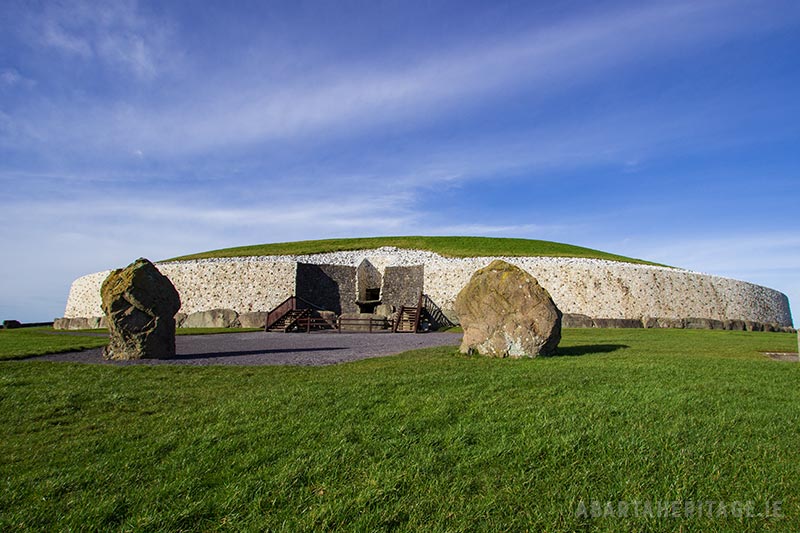
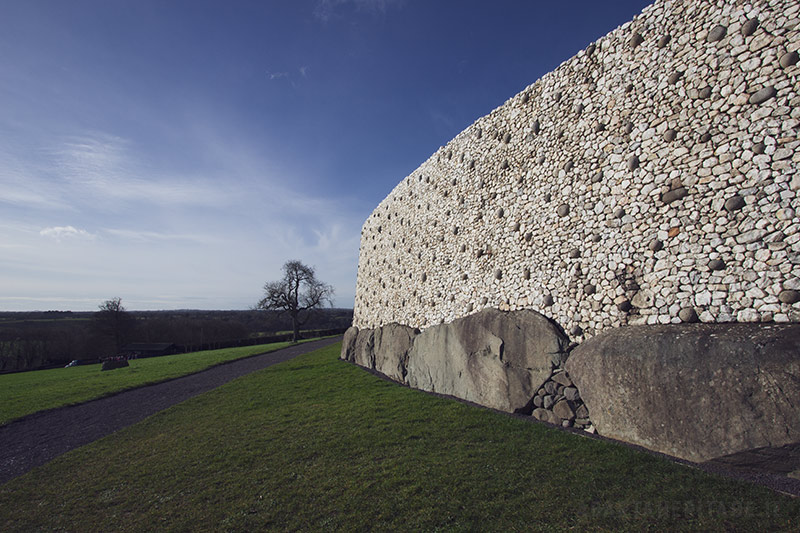
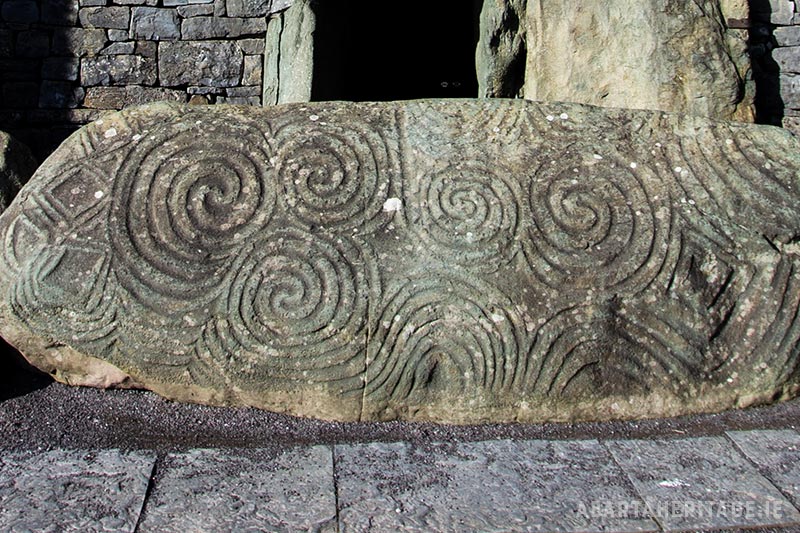
AMPLIFY ARCHAEOLOGY PODCAST
AMPLIFY ARCHAEOLOGY PODCAST
Title: A Newgrange Solstice
Duration: 55 mins.
Summary:
In this special archival edition we hear all about the Newgrange Solstice from the people who know the site best
The Winter Solstice at Newgrange Podcast Miniseries by Amplify Archaeology
This episode features snippets from the five part series on Newgrange and the Winter Solstice.
- Professor Muiris O’Sullivan featured in Part 1.
- Dr. Jessica Smyth featured in Part 2.
- Clare Tuffy featured in Part 3.
- Dr. Robert Hensey featured in Part 4.
- Professor Gabriel Cooney featured in Part 5.
So do be sure to catch those when you can. I’d just like to thank Gabriel, Jessica, Clare, Robert and Muiris for taking the time to talk with me. I’d also like to thank my colleague Ruth Fitzpatrick for editing this podcast. And I especially want to thank all of you for joining me on Amplify Archaeology Podcast. We have some brilliant guests already lined up for 2023, so do make sure you’re subscribed and if the Christmas spirit is upon you, please do leave us a review on Apple Podcasts and Spotify in particular. It really helps us to be found.
If you fancy getting yourself a nice Christmas present, consider joining our membership service Tuatha! Our members enjoy exclusive articles and itineraries to help them to explore, online courses events and much more – everything that anyone interested in Irish archaeology could want! We have monthly and annual options, you can learn more and sign up here.
- The beautiful image of light entering the chamber used as the header and in the gallery of this page is courtesy of Brian Morrison, Fáilte Ireland
- The Winter Solstice at Newgrange was live streamed back in 2020 (though there are sadly no plans to do so this year). You can watch 2020 back here (the first day was the best, though all three days were wonderful thanks to the narration of Clare Tuffy and Dr. Frank Prendergast).
- For details on the opening times and more information on the Visitor Centre at the Brú na Bóinne please see the OPW website.
Dig into more stories with Amplify Archaeology Podcast
The post A Newgrange Solstice – Amplify Archaeology Podcast appeared first on Abarta Heritage Home.
Moynagh Lough – Amplify Archaeology Podcast – Episode 34
Moynagh Lough
Dig into the Story of this incredible legacy project in Amplify Archaeology Podcast Episode 34 with Dr Michael Potterton
Moynagh Lough
Dig into the Story of this incredible legacy project in Amplify Archaeology Podcast Episode 34 with Dr Michael Potterton
Moynagh Lough is hidden away in a quiet hollow in the drumlin landscape near the village of Nobber in County Meath. From the late 19th century, hints began to emerge of it being a place of importance, but it wasn’t until the late 1970s, 80s and 90s, that the scale and complexity of Moynagh Lough came to light. Now a new project picks up the threads, to weave together the wealth of information that the site can tell us about Ireland’s past. Dr Michael Potterton joins us for a fascinating discussion about what it all might mean.
In this episode of the Amplify Archaeology Podcast, Neil had the opportunity to chat with Dr Michael Potterton of Maynooth University. Michael’s core field of research is the history and archaeology of medieval Ireland, with special reference to landscape and settlement. From 1996 to 1998 Michael was the Assistant Director on the excavations at Moynagh Lough.
Moynagh Lough is one of those sites that looms large in the mind of many in Irish archaeology. The first indications that it was a place of significance came in the late-19th century, when a local farmer, inspired by William Wood-Martin’s seminal writings on Lake Dwellings of Ireland, recognised some similar features in a small peninsula known locally as ‘The Island’, that was set in a little lake where he liked to fish. He recovered items like a grinding stone, a flint knife, a piece of a jet bracelet, and an ogham-inscribed piece of antler. He sent them to Wood-Martin, who identified the site as a crannóg. He was given a grant from the Royal Irish Academy to investigate the monument. However the project was short-lived and Moynagh Lough was forgotten again for nearly a century.
In the 1970s, it reemerged into the light, when a farmer who was seeking to level the small bumpy area at the edge of his field. As he spread the disturbed soil across the field, a large quantity of bone, quern stones and other clearly archaeological objects appeared. The local archaeologist, the late George Eogan, was called in and immediately identified it as a highly significant monument. As Professor Eogan was already excavating the great tomb at Knowth at the time, and as he believed the site to have been largely destroyed already, he had his assistant, a young archaeologist by the name of John Bradley, to lead what was expected to be a short rescue and recovery project. Much more of the crannóg had survived than was originally thought. Between 1980 and 1998, fourteen seasons of excavation confirmed that this was an exceptional multi-period site with rich artefactual assemblages from multiple levels and phases.
Over the years, John produced a number of reports and published several articles about the findings at Moynagh Lough, but the main excavation report remains incomplete and unpublished. When John moved to Maynooth University from UCD in 1996 the Moynagh archive moved with him. After John Bradley’s sudden passing in 2014, a collaborative project led by Michael was formed to review the archive and to take Moynagh Lough through to publication. This was especially fitting, as Michael was a volunteer, then a supervisor and finally Assistant Director of the excavations in the 1990s.
In this discussion Michael tells us of the incredible multi-phase archaeology of Moynagh Lough from the Late Mesolithic to the early medieval period, and how this collaborative project seeks to bring the equally multi-phase project to completion. It is an in-depth chat, that highlights the amazing legacy of John Bradley, George Eogan and Heather King, who all played such an important role at Moynagh Lough. It also reinforces the importance of reappraising past excavations and the wealth of information that are contained within archives, and how multi-disciplinary, collaborative efforts can bring new techniques to shed light on past projects. And more than anything else, the discussion asks the critical question:
What does it all mean?
AMPLIFY ARCHAEOLOGY PODCAST
AMPLIFY ARCHAEOLOGY PODCAST
Title: Moynagh Lough
Duration: 1 hour 15 mins.
Summary:
In this fascinating discussion with Dr Michael Potterton, we discuss the important legacy project of Moynagh Lough.
Moynagh Lough – Key Discussion Points
- Where and what is Moynagh Lough – 2 min 15 secs
- How Moynagh Lough was first discovered – 3 min 30 secs
- The rediscovery of Moynagh Lough – 6 min 35 secs
- The development of the project in the 1980s–1990s – 11 min 30 secs
- The legacy of John Bradley and Michael’s experience working at Moynagh Lough – 15 min 10 secs
- The chronology of the site – 23 min 25 secs
- A discussion on crannógs – 31 min 07 secs
- What sort of activity took place at the crannóg of Moynagh Lough – 36 min 32 secs
- Do historical sources point toward who may have been living at Moynagh Lough? – 41 min 20 secs
- The final excavation and how the new legacy project began – 43 mins 52 secs
- What sort of specialist analysis is involved in this phase? – 48 min 42 secs
- Does Michael have a particular favourite moment from his experience on the site? – 59 min 23 secs
- Based on the evidence so far, what can Moynagh Lough tell us about life in Early Medieval Ireland? – 1 hour 3 mins 00 secs
- What is the future for Moynagh Lough? – 1 hour 8 min 15 secs
- Could there ever be more excavations at Moynagh Lough? – 1 hour 11 min 10 secs
Show notes and links to further information
- You can see a fantastic illustrated talk by Michael for the Royal Society of Antiquaries here.
- Michael is a prolific writer on Ireland. I highly recommend his books like Uncovering Medieval Trim, and his co-edited chronological series with Christiaan Corlett that showcases what recent excavations can tell us about some of they key periods in Irish Archaeology. Like The Town in Medieval Ireland: In Light of Recent Archaeological Excavations. You can find a full list of his publications here
- Please do leave us a review if you can, or share the episode using the podcast #AmplifyArchaeology – it really does help us out so I’d be very grateful.
- If you’d like to dig deeper into the stories of Ireland you’ll love our membership service Tuatha. Tuatha connects people to the places, landscapes and stories of Ireland with exclusive content like our full catalogue of articles, courses and itineraries. With Tuatha, you’ll receive behind the scenes access to the latest in Irish archaeological and historical research. Find our more here.
- You can also sign up for our free email newsletter – Monument Monday! Every Monday we send out a mail featuring one of Ireland’s wonderful heritage sites. Guarantee yourself at least one nice mail every Monday morning by signing up here.
Dig into more stories with Amplify Archaeology Podcast
The post Moynagh Lough – Amplify Archaeology Podcast – Episode 34 appeared first on Abarta Heritage Home.
Farming Rathcroghan – Amplify Archaeology Podcast – Episode 33
Farming Rathcroghan
Discover this innovative project in Amplify Archaeology Podcast Episode 33
Farming Rathcroghan
Discover this innovative project in Amplify Archaeology Podcast Episode 33
In this episode, Neil travels to one of Ireland’s most significant archaeological landscapes, Rathcroghan, to discover an important and innovative project that is helping farmers to protect the archaeology on their land.
In this episode of the Amplify Archaeology Podcast, Neil had the opportunity to visit the great royal site of Rathcroghan in County Roscommon to chat with Dr Daniel Curley who tells us all about his experience managing Rathcroghan Visitor Centre and how they engage people with the complex story of Rathcroghan’s archaeological and mythological landscapes. We also discuss the important Farming Rathcroghan EIP project with Dr Petra Kock Appelgren. The project seeks to manage the Rathcroghan farming landscape in a sustainable way with a focus on the delivery of good archaeological condition. While local farmer and project participant Gerard Healy tells us of his experiences and how the project has been transformative for him.
The project is recorded in the shadow of the great mound at Rathcroghan, so there may be a little ambient noise from time to time. It’s not the wind, just the ghost of Queen Medb trying to get in for a chat. I hope you enjoy the episode!
AMPLIFY ARCHAEOLOGY PODCAST
AMPLIFY ARCHAEOLOGY PODCAST
Title: Farming Rathcroghan
Duration: 42 mins.
Summary:
In this fascinating discussion with Dr Daniel Curley, Dr Petra Kock Applegren and Gerard Healy we hear all about an important new project that encourages sustainable farming and heritage management
Farming Rathcroghan – Key Discussion Points
- Daniel introduces Rathcroghan and why it is such an important place – 0 min 52 secs
- Daniel tells us about the Rathcroghan Visitor Centre – 2 min 31 secs
- Daniel discusses the balance between archaeology and mythology at a place like Rathcroghan – 4 min 00 secs
- Daniel tells us about the Community Archaeology Conferences held at Rathcroghan – 6 min 57 secs
- Daniel explains how new research and discoveries are incorporated into the Visitor Centre – 9 min 37 secs
- Daniel discusses how COVID and the cost of living crisis has affected the Visitor Centre – 12 min 08 secs
- Daniel describes what he’d like to see for the future for Rathcroghan – 14 min 24 secs
- Daniel explains how visitors can enjoy Rathcroghan today – 16 min 34 secs
- Petra introduces the Farming Rathcroghan EIP Project – 19 min 38 secs
- Petra discusses the interest from farmers in the scheme – 23 mins 04 secs
- Petra outlines the benefits for the farmers – 23 min 57 secs
- Petra discusses the main challenges and threats posed to archaeology by farming – 26 min 09 secs
- Petra suggests what she’d like to see for the future of the project – 28 mins 16 secs
- Gerard describes his background and relationship to the land – 29 min 44 secs
- Gerard discusses the type of farming in the Rathcroghan landscape – 30 mins 20 secs
- Gerard tells us of the local stories about the monuments – 30 min 50 secs
- Gerard describes how the closure of local schools and the planning pressures have impacted people’s relationship with the landscape – 31 min 45 secs
- Gerard tells us about the conflict between archaeology and farming – 33 min 02 secs
- Gerard describes his experience with Farming Rathcroghan EIP and how it has led to better outcomes all round – 34 min 16 secs
- Gerard discusses the positivity brought by the project – 37 min 02 secs
Show notes and links to further information
- Farming Rathcroghan is a European Innovation Partnership (EIP) funded by the Department of Agriculture, Food, and the Marine (DAFM) under the Rural Development Programme 2014-2020. You can discover more about the Farming Rathcroghan EIP on their dedicated website here.
- If you’d like to explore Rathcroghan be sure to visit their website first here.
- You can find a virtual tour of the landscape there, it’s well worth exploring here!
- The Rathcroghan Community Archaeology Conference 2022: Above and Below is on in November. Book your ticket here.
- They also have a great shop full of very tempting books, with the proceeds going towards supporting the Visitor Centre. Shop here.
- If you enjoyed this episode you might also like the episode at Beaubec where we visited the ongoing excavations there, it included discussions with the landowners who also described their relationship with archaeology. You’ll find that here.
- Please do take a moment to rate or review us on your favourite podcast platforms, it helps us to be found and it lets me know that people enjoy the show.
- If you’d like to dig deeper into the stories of Ireland you’ll love our new membership service Tuatha. Online courses, places to visit, itineraries for great days out and more! Sign up here.
Dig into more stories with Amplify Archaeology Podcast
The post Farming Rathcroghan – Amplify Archaeology Podcast – Episode 33 appeared first on Abarta Heritage Home.
Archaeological Storytelling – Amplify Archaeology Podcast – Episode 32
Archaeological Storytelling
Let’s weave a story in Amplify Archaeology Podcast Episode 32 with Paul Duffy
Archaeological Storytelling
Let’s weave a story in Amplify Archaeology Podcast Episode 32 with Paul Duffy
Fadó fadó. Once upon a time…. all the best stories start like that. But how do you go about weaving together a compelling narrative with historical and archaeological evidence? In this episode Neil is joined by Paul Duffy to discuss archaeological storytelling.
One of the most important and rewarding aspects of our work at Abarta Heritage is to try to tell the story of Ireland’s past in accessible and exciting ways, and in this episode of Amplify Archaeology Podcast, I had the opportunity to talk with a real master at this – Paul Duffy.
Paul is an experienced archaeologist and has directed numerous landmark excavations in Dublin as well as leading projects in Australia, France and the United Kingdom. He has published and lectured widely on this work, and his books include From Carrickfergus to Carcassonne—the Epic Deeds of Hugh de Lacy
during the Cathar Crusade (2018) and Ireland and the Crusades (2021). Paul has brought all of his insights and understandings of medieval Ireland to bear in his compelling new book Run with the Hare, Hunt with the Hound.
The book begins on a remote Gaelic farmstead in medieval Ireland, when word reaches Alberic of conquering Norman knights arriving from England. Oppressed by the social order that enslaved his Norman father, he yearns for the reckoning he believes the invaders will bring—but his world is about to burn. Captured by the Norman knight Hugo de Lacy and installed at Dublin Castle as a translator, Alberic’s confused loyalties are tested at every turn. When de Lacy marches inland, Alberic is set on a collision course with his former masters amidst rumours of a great Gaelic army rising in the west. Can Alberic navigate safely through revenge, lust and betrayal to find his place amidst the birth of a kingdom in a land of war?
Paul and I have a wide-ranging discussion that flows from the latest archaeological discoveries in Dublin to how to develop a character-driven story that balances evidence and narrative. I hope you enjoy the episode!
* as usual, this episode was recorded over Zoom, so please forgive any little audio wobbles.
AMPLIFY ARCHAEOLOGY PODCAST
AMPLIFY ARCHAEOLOGY PODCAST
Title: Archaeological Storytelling
Duration: 45 mins.
Summary:
In this fascinating discussion with Paul Duffy, we discuss how to combine archaeological evidence with storytelling to illustrate life in the past.
Archaeological Storytelling – Key Discussion Points
- Paul’s view of Dublin based on his experience excavating around the city – 1 min 18 secs
- How has our perspective of Dublin’s medieval past changed through the recent excavations? – 3 min 12 secs
- Pre-Viking Dublin and the early settlement – 9 min 00 secs
- Using archaeological and historical evidence to inform a fictional narrative – 12 min 24 secs
- Why did Paul choose to set his story in the late 12th century? – 19 min 00 secs
- How much can you trust primary sources like Giraldus Cambrensis or draw influence from their style? – 21 min 48 secs
- Paul’s choice to centre his story on a slave rather than a warlord or elite member of society – 26 min 24 secs
- The balance and dance between complete accuracy and storytelling – 33 min 00 secs
- Will Alberic’s story continue? – 37 min 33 secs
- The importance of archaeological storytelling – 38 mins 51 secs
Show notes and links to further information
- You can find Paul’s website here.
- I can’t recommend his book Run with the Hare, Hunt with the Hound highly enough, it really helps you to picture what life was like in the tumultuous days of the Norman invasion. You can read a short review here.
- If you’re in the US you can preorder a copy direct from the publisher Cynren Press.
- If you’re in Ireland (or the UK or the rest of Europe) you can preorder from Book Depository.
- Paul also has another book out this month – as he is co-author of Ireland and the Crusades.
- Some of the images on this episode page feature the great Dave Swift of Claoimh. Check out Dave’s fantastic work here.
- At Abarta we’ve also tried our hand at writing fictional accounts based on archaeological evidence. Most relevant to this is our audiobook Meitheal, a series of interwoven tales from early medieval Ireland. You can hear that free here.
- Or our audiobook The Unsilent Stones where you can meet the residents of Athlone’s Abbey Graveyard. From 8th century kings to tavern keepers. You can find that here.
- Paul recently gave a great lecture as part of our Tuatha Talk webinar series. Our members can watch that back here.
- If you’d like to delve deeper into the stories of Ireland, with articles on places to visit, itineraries for days out, online courses and more – you might enjoy joining Tuatha. You can find us here.
Dig into more stories with Amplify Archaeology Podcast
The post Archaeological Storytelling – Amplify Archaeology Podcast – Episode 32 appeared first on Abarta Heritage Home.
A Bugs AfterLife Archaeological Insect Analysis – Amplify Archaeology Podcast – Episode 31
A Bug’s AfterLife – Archaeological Insect Analysis
Discover what insects can tell us about life in the past in Amplify Archaeology Podcast Episode 31 with Dr Steve Davis
A Bug’s AfterLife – Archaeological Insect Analysis
Discover what insects can tell us about life in the past in Amplify Archaeology Podcast Episode 31 with Dr Steve Davis
The archaeological study of insects, or archaeoentomology, can provide vital evidence about past environments, food, health and living conditions.
Though our homes today has become somewhat sanitised relative to the past, we still share our lives with other species, especially insects. Archaeoentomology is the study of insect remains on sites of archaeological interest. The analysis of insects from archaeological contexts can be an important lens with which to view the past. The can reveal big picture questions about the local environment. They can tell us about trade and agriculture. And reveal insights into hygiene both in the house and of the individuals themselves. They can also tell us about diet and health, and in some cases, funeral practices.
The study of insects is most powerful when combined with other forms of environmental analysis, and it can create a deeply intimate (perhaps too intimate) understanding of people in the past. In this episode of the Amplify Archaeology Podcast, Neil had a chat with Dr. Steve Davis of the School of Archaeology, University College Dublin. Steve tells us of what kind of evidence insect analysis can provide and the background to this expert sub-discipline. This is a fascinating discussion and I hope you enjoy the episode, but perhaps not one to listen to while you’re having your dinner!
AMPLIFY ARCHAEOLOGY PODCAST
AMPLIFY ARCHAEOLOGY PODCAST
Title: A Bug’s AfterLife – Archaeological Insect Analysis
Duration: 53 mins.
Summary:
In this fascinating discussion with Dr Steve Davis, we discuss insect analysis and how it can reveal key evidence about life in the past
A Bug’s AfterLife; Archaeological Insect Analysis – Key Discussion Points
- How do you find archaeological insects, do they preserve well? – 1 min 10 secs
- What are the ideal sort of contexts to find insects in? – 2 min 39 secs
- What sort of information can insects reveal about the past? – 5 min 30 secs
- What can insects reveal about big events like pandemics? – 9 min 43 secs
- Can insects tell us more about things like farming, industrial processes or trade? – 12 min 15 secs
- Living with insects – 15 min 10 secs
- What can insects tell us about the differences between living in an urban or rural setting – 16 min 15 secs
- The Joy of Cess – 21 min 52 secs
- Body lice and fleas – 22 mins 42 secs
- What species of insect does Steve love to discover when he is examining a sample – 24 min 15 secs
- Insects in the house – 26 min 55 secs
- The origins of archaeological insect studies and the work of Dr. Eileen Reilly – 28 mins 41 secs
- The challenges posed to archaeoentomology – 33 min 42 secs
- How did Steve get into the study of insects – 36 mins 35 secs
- How is Ireland faring with archaeological insect studies, is there more that can be done? – 39 min 38 secs
- Is there a danger of ‘period bias’ when it comes to what we sample and analyse – 43 min 39 secs
- Should archaeologists start sampling more for insect analysis? – 47 min 10 secs
Show notes and links to further information
- Thanks to Steve and Eva Kourela for kindly providing the images used on this page.
- Dr Eileen Reilly who sadly passed in 2018, has had an incredible legacy on environmental archaeology in Ireland and elsewhere. I was fortunate to work briefly with Eileen during the analysis of the Mill at Kilbegly back in 2007, and her insights were so important in developing our understanding. She was as wonderful a person as she was an archaeologist and researcher. Eileen’s work features prominently in the excellent recent publication Between the Meadows, that describes the excavation and analysis of a remarkable series of preserved trackways in the wetlands of Edercloon near Longford.
- Another important aspect of Eileen’s work was her research on Viking and Medieval Dublin. Encapsulated in this paper: The contribution of insect remains to an understanding of the environment of Viking-age and Medieval Dublin
- And this paper in Quaternary International: From Christchurch Place to Fishamble Street: Developments inarchaeoentomology in Dublin, Ireland, since 1981 (hosted on Academia.edu but there is no need to create an account, you can access the full article by scrolling down rather than trying to download).
- Part of Steve’s research was to examine what insects can reveal about prehistoric burnt mounds. You can read his paper here: The Environmental Context and Function of Burnt-Mounds: New Studies of Irish Fulachtaí Fiadh
- Deer Park Farms featured prominently in the discussion, and you can read about what the insect evidence reveals about that important site here: Environment, activity and living conditions at Deer Park Farms: evidence from plant and invertebrate remains. (Hosted on Academia.edu but there is no need to create an account, you can access the full article by scrolling down rather than trying to download).
- If you’d like to read the paper on that remarkably dedicated project by Prof. Peter Osborne you can do so here: An insect fauna from a modern cesspit and its comparison with probable cesspit assemblages from archaeological sites.
- And this was built on in this paper by Dr Katherine Grove: Discerning beetles, an entomo-archaeological study of coleopteran faunas in relation to place and time.
- Or Dr David Smith’s paper: Pondering Privies: Construction, Use, Reuse, and Other Speculations About Cesspits in the Archaeological Record.
- The importance of environmental archaeology was also discussed in the episode on Wetland Archaeology.
- Please do leave us a review if you can, or share the episode using the podcast #AmplifyArchaeology – it really does help us out so I’d be very grateful.
- If you’d like to dig deeper into the stories of Ireland you’ll love our new membership service Tuatha. Online courses, places to visit, itineraries for great days out and more! Sign up here.
Dig into more stories with Amplify Archaeology Podcast
The post A Bugs AfterLife Archaeological Insect Analysis – Amplify Archaeology Podcast – Episode 31 appeared first on Abarta Heritage Home.
Digging Dun Ailinne – Amplify Archaeology Podcast – Episode 30
Digging Dún Áilinne
Dig into the Story with Dr Susan Johnston, Prof. Pam Crabtree, Dr Zenobie Garrett & the excavation team
Digging Dún Áilinne
Dig into the Story with Dr Susan Johnston, Prof. Pam Crabtree, Dr Zenobie Garrett & the excavation team
Looming large over the plains of Kildare is a large tree-lined hill. This is Dún Áilinne, believed to be one of Ireland’s ancient ‘royal sites’, and a place of significance for millennia. In this episode of Amplify Archaeology Podcast, Dr. Sharon Greene climbed the storied slopes to meet the team of archaeologists who are seeking to discover Dún Ailline’s secrets.
Recent summers have seen teams of American archaeology students working around the summit of a large hill, close to Kilcullen in county Kildare. They are being trained by professional archaeologists from America and Ireland, in partnership with the Blackfriary Archaeological Field School, and the site they are working on is Dún Áilinne, one of the ancient royal sites of Ireland.
Although Dún Áilinne may not be as well known as Emain Macha (Navan Fort), Rathcroghan, or the Hill of Tara, excavations over the last 50 years have revealed the foundations of an impressive series of large circular timber structures constructed during the Iron Age. These are set in the vicinity of the hill summit, an area enclosed by a massive bank and ditch. The shape of the structures, the discovery of evidence for feasting and the early medieval documentary records of the site all point to a place of ritual and gathering.
In this podcast we will be talking to the site directors, Dr Susan Johnston of George Washington University and Professor Pam Crabtree of New York University (who first came to Dún Áilinne to excavate 50 years ago) as well as other involved in the field school to find out more about the archaeology of the site and the experience of uncovering this iconic site.
Dr Sharon Greene takes over the mic for this episode, and climbs the storied hill to discuss the project and this enigmatic monument with the excavation team. I hope you enjoy the episode!
AMPLIFY ARCHAEOLOGY PODCAST
AMPLIFY ARCHAEOLOGY PODCAST
Title: Digging Dún Áilinne
Duration: 60 mins.
Summary:
Climb the storied hill of Dún Áilinne to meet the excavation team who are trying to discover the site’s story.
We are very grateful to the landowners, the Thompson family, for allowing us to visit the excavations to record the podcast and to all the members of the excavation crew for making us so welcome. I’d like to thank all the contributors for kindly sharing their insights and time with us; Dr Susan Johnston, Prof. Pam Crabtree, Dr Zenobie Garrett, Paul Fingleton, Ava Thompson and Sydney Greene. I’m also really grateful to Dr Sharon Greene for doing such a fantastic job, and our brilliant sound engineer Declan Lonergan. Please note that Dún Áilinne is located on private farmland and visits are not possible without prior arrangement with the landowner.
Digging Dún Áilinne – Key Discussion Points
- What is Dún Áilinne (chat with Dr Susan Johnston) – 2 min 09 secs
- What are the key archaeological features of Dún Áilinne (chat with Dr Susan Johnston) – 5 min 07 secs
- The summit of the hill (chat with Dr Susan Johnston) – 11 min 06 secs
- Dún Áilinne as a place of gathering and its role in the past (chat with Dr Susan Johnston) – 14 min 52 secs
- The excavations at Dún Áilinne by Prof. Bernard Wailes between 1968–75 (chat with Dr Susan Johnston) – 16 min 31 secs
- What instigated the current programme of research and excavation (chat with Dr Susan Johnston) – 19 min 48 secs
- The results of the recent excavation (chat with Dr Susan Johnston) – 22 min 46 secs
- What was it about Dún Áilinne that attracted researchers from America, and what is the local involvement? (chat with Dr Susan Johnston) – 26 min 34 secs
- Where can people find out a bit more about the excavation (chat with Dr Susan Johnston) – 30 mins 35 secs
- What is the future of the project, and if money was no object what would you do next? (chat with Dr Susan Johnston) – 31 min 51 secs
- Pam describes her experience excavating at Dún Áilinne 50 years ago (chat with Prof. Pam Crabtree) – 34 mins 44 secs
- What has been the biggest changes in archaeology and our understanding of Dún Áilinne over the past 50 years (chat with Prof. Pam Crabtree) – 36 min 53 secs
- The animal bone assemblage (chat with Prof. Pam Crabtree) – 38 min 36 secs
- What Pam would like to see for the future research of the site (chat with Prof. Pam Crabtree) – 41 min 28 secs
- How does it feel for Pam to be back excavating at a site she first encountered 50 years ago (chat with Prof. Pam Crabtree) – 44 min 28 secs
- What was Zenobi’s experience like when she first arrived at Dún Áilline in 2007 (chat with Dr. Zenobie Garrett) – 45 min 18 secs
- The new technologies utilised at Dún Áilinne (chat with Dr. Zenobie Garrett) – 47 min 34 secs
- What does Zenobi see as the future of the site, and what she would like to see for future research (chat with Dr. Zenobie Garrett) – 50 min 28 secs
- How does a research dig compare with commercial (pre-construction) archaeology? (chat with Paul Fingleton) – 51 min 47 secs
- What was it like for Paul as a near-local, to work on such an important monument? (chat with Paul Fingleton) – 53 min 12 secs
- We meet students Sydney Greene and Ava Thompson (chat with Paul Fingleton) – 54 min 01 secs
Show notes and links to further information
- You can find out more about the excavations at Dun Áilinne on this excellent project Storymap
- Please do leave us a review if you can, or share the episode using the podcast #AmplifyArchaeology – it really does help us out so I’d be very grateful.
- If you’d like to dig deeper into the stories of Ireland you’ll love our new membership service Tuatha. Online courses, places to visit, itineraries for great days out and more! Sign up here.
Dig into more stories with Amplify Archaeology Podcast
The post Digging Dun Ailinne – Amplify Archaeology Podcast – Episode 30 appeared first on Abarta Heritage Home.
Viking Age Ireland – Amplify Archaeology Podcast – Episode 29
Viking Age Ireland
Dig into the Story of Viking Age Ireland in Amplify Archaeology Podcast Episode 29 with Dr Rebecca Boyd
Viking Age Ireland
Dig into the Story of Viking Age Ireland in Amplify Archaeology Podcast Episode 29 with Dr Rebecca Boyd
Have you ever wondered what life was like in Viking Age Ireland. In this fascinating discussion with Dr Rebecca Boyd, we walk the streets of Viking Dublin to discuss houses, towns and trade.
In the year AD 795, Ireland’s Viking Age begins with a bloody raid on our coastal monasteries. Over the centuries, the Vikings changed from raiders to traders, and developed our first true urban centres. Their legacy is all around us today, especially if you live in one of their towns – like Dublin, Cork, Waterford, Limerick or Wexford. In this episode of Amplify Archaeology Podcast, Neil had the opportunity to discuss life in Viking Age Ireland with Dr Rebecca Boyd.
Rebecca has been carrying fascinating research looking at the architectural evidence from the Viking excavations of Dublin, Cork and Waterford to tell a new story about the beginnings of urbanism in Ireland. The chat ranges from an overview of the Viking Age to the development of our towns, what a typical Viking house would have been like to life in 10th century Dublin. I hope you enjoy the episode!
AMPLIFY ARCHAEOLOGY PODCAST
AMPLIFY ARCHAEOLOGY PODCAST
Title: Viking Age Ireland
Duration: 1 hour 15 mins.
Summary:
In this fascinating discussion with Dr Rebecca Boyd, we discuss life in Viking Age Ireland.
Viking Age Ireland – Key Discussion Points
- Rebecca gives an overview of the story of the Vikings in Ireland – 1 min 20 secs
- What drew Rebecca to study the Viking Age? – 6 min 49 secs
- And what was it about the environmental and everyday life of Viking Ireland that Rebecca found compelling? – 10 min 04 secs
- If we were to walk down a street in Viking Dublin, what would we experience, see and smell? – 12 min 37 secs
- What would a typical Viking street be made of? – 17 min 01 secs
- Who was responsible for the upkeep of the streets in Viking Dublin? – 19 min 15 secs
- What was a typical Viking house like? How big, what were they made of, and what sort of privacy was there? – 21 min 15 secs
- Were the houses themselves just for sleeping and eating in? How was the space used? – 27 min 03 secs
- What was life like for the elite and the poor? How were their houses different? – 30 min 25 secs
- What was life like for a slave in Viking Age Ireland? – 34 min 15 secs
- What sorts of evidence do we have that inform us of life in the Viking Age? – 39 mins
- Wood Quay and its legacy – 42 mins
- How does the approach to Viking studies in Ireland compare with other countries that share similar heritage? – 47 min 35 secs
- The importance of archival focused research projects – 54 mins 15 secs
- The Vikings as a historical ‘brand’ – 58 min 10 secs
- Viking tourism in Ireland – how the public can interact with our Viking heritage. – 1 hour 01 mins 37 secs
- Rebecca tells us about her exciting forthcoming publication Exploring Ireland’s Viking-Age Towns: Houses and Homes – 1 hour 06 mins 51 secs
- What should people think differently about the Vikings? – 1 hour 08 mins 48 secs
Show notes and links to further information
- Be sure to subscribe to Rebecca’s podcast Viking Age Environments. It is available on various podcast platforms, but you can find the best information on her website here.
- Rebecca’s book is imminent and I cannot wait! It is called Exploring Ireland’s Viking-Age Towns: Houses and Homes and I’ll add a link as soon as it is available for purchase.
- There’s a fantastic Walking Tour and Activity Book on Viking Dublin, it’s by Rosalind Bonté, Eleanor Jackson, Maria Teresa Ramandi, Elizabeth Ashman Rowe, Rebecca Boyd and Erin Goeres. Guided by Aoife the Archaeologist, you can take a stroll around the streets of modern Dublin and learn about the Viking remains beneath your feet. You can download it for free here.
- Rebecca’s Academia profile and list of papers (including many on Viking Age Ireland) can be found here.
- Eat the Viking streets of Dublin: a blog post by Rebecca about the environment of Viking Dublin is available here.
- Did Ireland’s first Vikings really have black hair? Find out here.
- Find out how blood thirsty Vikings became the stars of Irish tourism in Rebecca’s article for RTÉ Brainstorm here.
- Also on Brainstorm, Rebecca discusses the far-reaching effects the Vikings had when they settled down. You can find that here.
- We have a free audiobook about the remarkable discovery of a Viking longphort at Woodstown in County Waterford. It’s on all podcast platforms, find it here.
- You can also find the Conservation Management Plan that we wrote for Woodstown here.
- Please do leave us a review if you can, or share the episode using the podcast #AmplifyArchaeology – it really does help us out so I’d be very grateful.
- If you’d like to dig deeper into the stories of Ireland you’ll love our new membership service Tuatha. Online courses, places to visit, itineraries for great days out and more! Sign up here.
Dig into more stories with Amplify Archaeology Podcast
The post Viking Age Ireland – Amplify Archaeology Podcast – Episode 29 appeared first on Abarta Heritage Home.
Knockroe Winter Solstice – Amplify Archaeology Podcast – Episode 28
Knockroe Winter Solstice
Dig into the Story of the Winter Solstice at Knockroe Passage Tomb in Amplify Archaeology Podcast Episode 28 with Prof. Muiris O’Sullivan
Knockroe Winter Solstice
Dig into the Story of the Winter Solstice at Knockroe Passage Tomb in Amplify Archaeology Podcast Episode 28 with Prof. Muiris O’Sullivan
The Knockroe Winter Solstice is one of the highlights of my year. This Neolithic passage tomb is aligned to both sunrise and sunset on the solstice. Professor Muiris O’Sullivan who excavated Knockroe joins us to discuss this wonderful site, Neolithic Ireland and meaning in episode 28 of Amplify Archaeology Podcast.
In this episode of the Amplify Archaeology Podcast, Neil had another great chat with Professor Muiris O’Sullivan, who you might remember from our Winter Solstice at Newgrange Miniseries. This time Muiris told us all about Knockroe Passage Tomb in the Lingaun Valley, on the borderlands between Kilkenny and Tipperary. Like Newgrange, Knockroe also has Winter Solstice alignments, but for both the sunrise and sunset. Making it a very rare example of a dual-aligned tomb.
Muiris discussed his excavations at Knockroe, the findings and megalithic art, and how an innovative experimental archaeology project by Tara Clarke (now a much-valued colleague at Abarta Heritage!) has revealed some fascinating insights into Neolithic Ireland. We also discussed folklore, borders and boundaries, and the incredibly rich and varied heritage of the Lingaun Valley. Many thanks again to Muiris for all his time and insights. If you’d like to explore this archaeological landscape for yourself do tune into the episode to find out how to get your free itinerary map!
AMPLIFY ARCHAEOLOGY PODCAST
AMPLIFY ARCHAEOLOGY PODCAST
Title: Knockroe Winter Solstice
Duration: 59 mins.
Summary:
In this fascinating discussion with Prof. Muiris O’Sullivan, we discuss the Winter Solstice at Knockroe Passage Tomb and more!
Knockroe Winter Solstice – Key Discussion Points
- The setting of Knockroe Passage Tomb – 2 min 26 secs
- How did Muiris first come to study Knockroe? – 3 min 08 secs
- The archaeological landscape of the Lingaun Valley – 4 min 30 secs
- Borderlands – 6 min 57 secs
- The importance of Slievenamon – 11 min 03 secs
- Folklore, Myths and Legends – 12 min
- The excavations at Knockroe – 12 min 30 secs
- The interesting geology and use of stone at Knockroe – 17 min 47 secs
- The two passageways of Knockroe – 23 min
- Human remains at Knockroe – 26 mins 09 secs
- The artefactual assemblage at Knockroe – 28 min 50 secs
- Experimental archaeology and bone pins – 29 min 56 secs
- Carrowkeel Bowls – 33 mins 30 secs
- The Megalithic Art at Knockroe – 36 min 30 secs
- How did the excavations at Knockroe change Muiris’s perception of passage tombs – 39 mins 19 secs
- The local folklore of Knockroe – 44 min 30 secs
- The Knockroe Winter Solstice and meaning in Neolithic Ireland – 48 min 04 secs
- The Winter Solstice at Knockroe today, spirituality, meaning and belief – 50 min 52 secs
Show notes and links to further information
- The Winter Solstice event at Knockroe is always a lovely experience. It is managed by the local community through Lingaun Valley Tourism. You can follow them on Facebook here.
- If you can’t make it there, I highly recommend watching the Winter Solstice at Newgrange live online. National Monuments and the OPW have it livestreamed here.
- Muiris featured in the opening episode of our Newgrange and Winter Solstice Miniseries. You can find that here.
- Muiris co-authored an excellent article on Knockroe in the latest edition of Archaeology Ireland Magazine. Give yourself a great Christmas gift by subscribing, to keep up with the latest news and research in Irish Archaeology. You can do so at the Wordwell Website.
- I highly recommend Muiris’s excellent Wordwell Publication Antiquities of Rural Ireland by Muiris and for a wonderful overview of all periods of Irish archaeology.
- You can also find out more about Knockroe in our article here.
- You can access the Lingaun Valley Itinerary Map by signing up for our mailing list in the box below.
- Or you can access it, along with a whole host of other itineraries, articles on places to visit, online courses and much more by subscribing to our new membership service: Tuatha.
- Please do leave Amplify Archaeology Podcast a review if you can, or share the episode on social media using the podcast #AmplifyArchaeology – it really does help us out so I’d be very grateful.
Dig into more stories with Amplify Archaeology Podcast
The post Knockroe Winter Solstice – Amplify Archaeology Podcast – Episode 28 appeared first on Abarta Heritage Home.
Green Heritage Relict Plants and Medieval Women – Amplify Archaeology Podcast – Episode 27
Green Heritage Relict Plants and Medieval Women
Dig into the Story of Relict Plants and Women & Gender in Medieval Ireland in Amplify Archaeology Podcast Episode 27 with Dr Karen Dempsey
Green Heritage Relict Plants and Medieval Women
Dig into the Story of Relict Plants and Women & Gender in Medieval Ireland in Amplify Archaeology Podcast Episode 27 with Dr Karen Dempsey
When we visit medieval castles, we inevitably focus on the grandeur and romance of the ruins of the stone fortresses, but stories bloom in quiet corners. In this fascinating discussion with Dr Karen Dempsey, we discuss green heritage, relict plants, and women in medieval Ireland.
In this episode of the Amplify Archaeology Podcast, Neil had the opportunity to chat with Dr. Karen Dempsey, a researcher with the Department of Archaeology at NUIG. Karen has been carrying fascinating research with the project ‘Sowing Seeds of Interdisciplinary Work’. The project, funded by the Castle Studies Trust, was a multidisciplinary way of looking at life at medieval castles by studying ‘relict plants’. These plants are the descendants of those introduced by the people who built and lived in the castles. They provide insights into so many aspects of medieval life, including diet, medicine, fashion and belief.
Four geographically diverse but culturally similar medieval castles were selected for botanical surveys: Adare. Co. Limerick, Castleroche, Co. Louth, Carbury, Co. Kildare and Castlecarra, Co. Mayo. Together with detailed analysis of archaeological, historical and architectural details of these castles, the study of the botany has enriched our understanding of the ‘green’ lives of people in the past but also showcased the life of castles – as medieval residences but also as romantic ruins in later landscapes.
This is a fascinating discussion that digs into the results of the project and the chat ranges from castles and conquests, women and gender to gardening, colonialism, spirituality and nature. I hope you enjoy the episode!
AMPLIFY ARCHAEOLOGY PODCAST
AMPLIFY ARCHAEOLOGY PODCAST
Title: Green Heritage, Relict Plants, and Medieval Women
Duration: 53 mins.
Summary:
In this fascinating discussion with Dr Karen Dempsey, we discuss green heritage, relict plants, and women in medieval Ireland.
Green Heritage, Relict Plants and Medieval Women – Key Discussion Points
- What drew Karen to study the medieval period? – 1 min 01 secs
- What are relict plants? – 3 min 06 secs
- Apart from food, what else were plants used for in medieval Ireland? – 4 min 35 secs
- Did the use of plants change after the arrival of the Normans? Can plants be colonial? – 6 min 49 secs
- The Relict Plants Projects – 8 min 25 secs
- Results at Castleroche – 12 min 50 secs
- Results at Adare Castle – 17 min 24 secs
- Results at Castle Carra – 20 min 07 secs
- Results at Carbury Castle – 22 min 43 secs
- The importance of hedgerows and ‘green heritage’ – 25 mins 29 secs
- Gardening, Meaning and Living Heritage – 26 min 12 secs
- Does the type of plant we choose to grow say something about society, today and in the past? – 30 min 26 secs
- Plants and spirituality – 34 mins 15 secs
- Women and medieval Ireland – 40 min 28 secs
- Medieval women in the historical record – 45 mins 20 secs
- Where can people learn more about the project – 46 min 57 secs
Show notes and links to further information
- You can discover more about the Sowing Seeds Project here.
- The fascinating results of the project are discussed here, and you can read the final reports here.
- You can find a brilliant talk by Karen for Heritage Week, along with all the site videos on YouTube.
- You can also see Karen addressing gender in archaeology in this video: Gendering the Narrative of Research Frameworks.
- The brilliant graphic novel that Karen mentioned on Gender and Archaeology can be found at Sidestone.
- Archaeology and Gender in Europe – a group within the community of the European Association of Archaeologists can be found here.
- Karen also has some brilliant articles if you’d like to dig deeper into some of these subjects. These include:
Dempsey, K. 2021. Tending the ‘Contested’ Castle Garden: Sowing Seeds of Feminist Thought. Cambridge Archaeological Journal, 1–15.
Dempsey, K. 2021. Herstory: exploring the material life of Gundrada de Warenne. In E. Bérat, R. Hardie and I. Dumitrescu (ed) Relations of Power: Women’s Networks in the Middle Ages. Studien zu Macht und Herrschaft. V&R unipress, University of Bonn Press. pp. 169-197
Dempsey, K., Gilchrist, R., Ashbee, J., Stones, S. & Sagrott, S. 2020. Beyond the martial façade: gender, heritage and medieval castles, International Journal of Heritage Studies, 26:4, pp. 352-369 - You can hear more on the origins and architecture of Irish Castles in Episode 3 of Amplify Archaeology Podcast with Professor Tadhg O’Keeffe.
- I highly recommend Braiding Sweetgrass by Robin Wall Kimmerer, it’s one of my favourite books of recent years. If you’re in Ireland you’ll find it at a good price and free post at Kennys.ie.
- And if you’re interested in exploring more on the connections between our spiritual and natural world you might enjoy Emergence Magazine Podcast. Always worth a listen.
- Please do leave us a review if you can, or share the episode using the podcast #AmplifyArchaeology – it really does help us out so I’d be very grateful.
- If you’d like to dig deeper into the stories of Ireland you’ll love our new membership service Tuatha. Online courses, places to visit, itineraries for great days out and more! Sign up here.
Dig into more stories with Amplify Archaeology Podcast
The post Green Heritage Relict Plants and Medieval Women – Amplify Archaeology Podcast – Episode 27 appeared first on Abarta Heritage Home.
Irish High Crosses – Amplify Archaeology Podcast – Episode 26
Irish High Crosses
Dig into the Story of Ireland’s iconic high crosses in Amplify Archaeology Podcast Episode 26 with Prof. Roger Stalley
Irish High Crosses
Dig into the Story of Ireland’s iconic high crosses in Amplify Archaeology Podcast Episode 26 with Prof. Roger Stalley
Irish high crosses are undoubtedly one of the great treasures of our nation, but what are their origins and how were they created? In this fascinating discussion with Prof. Roger Stalley we dig into the story
High crosses have become one of the most totemic images of our nation. The crosses have come to symbolise not only Irish Christianity, but Irish identity. Go to any graveyard today and you’ll see dozens of replicas, embellished with interlace and celtic-style art. But what are the origins of this symbol and is it completely unique to Ireland? I was so delighted to have the opportunity to discuss high crosses with Professor Roger Stalley of Trinity College Dublin. Roger’s new publication Early Irish Sculpture and the Art of the High Crosses is a landmark study that focuses on the remarkable Muiredach’s Cross at Monasterboice. Where previous studies of high crosses have focused on the iconography and religious depictions, Roger takes a broader view and examines just how these magnificent monuments were created, looking at who may have commissioned them, how were they quarried and what can we discover of the artists and sculptors.
This discussion takes a deep dive into some of these questions, you’ll find out what was in the toolkit of an early medieval sculptor, we discuss the political and religious impetus that led to their development, and we examine the threats that Ireland’s high crosses face today, and what exactly we can do about it. I hope you enjoy the episode.
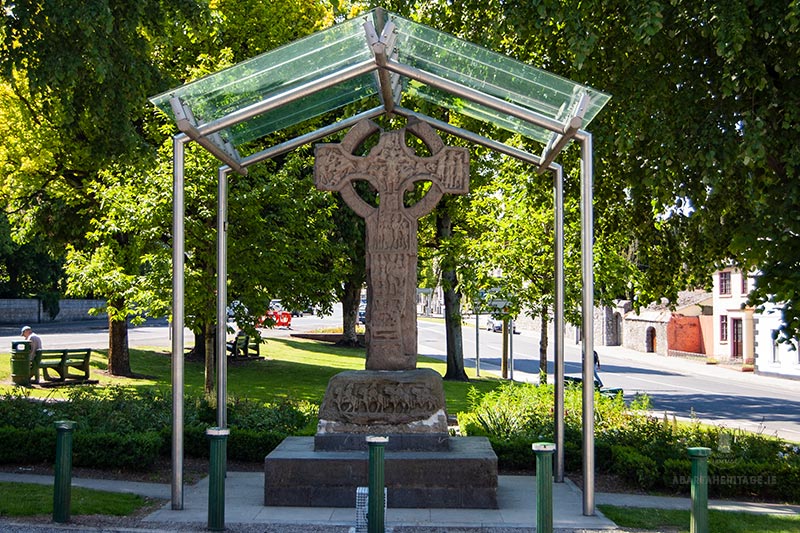
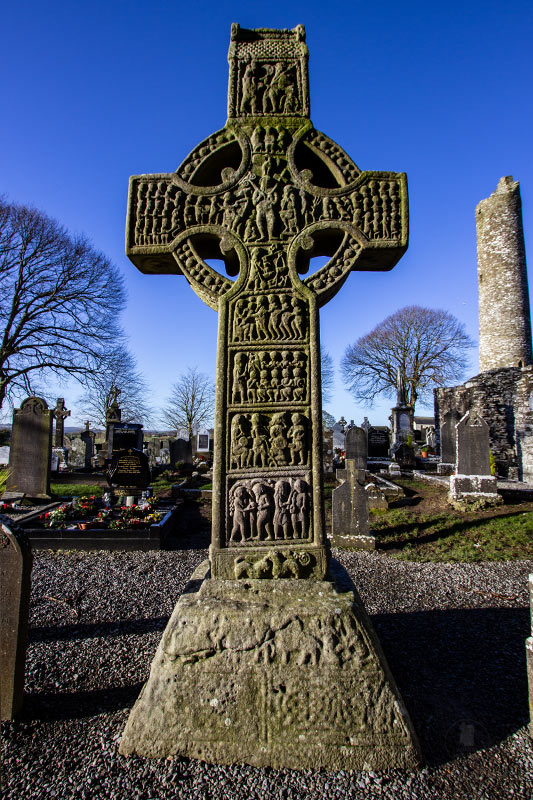

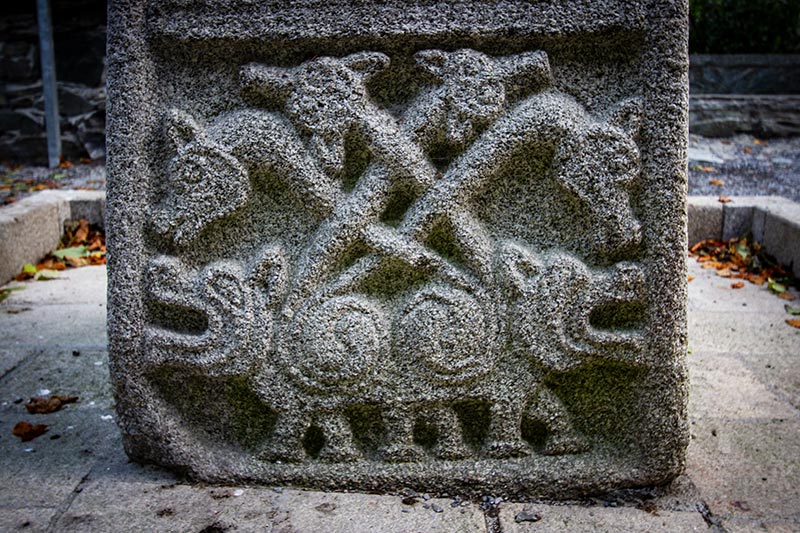

AMPLIFY ARCHAEOLOGY PODCAST
AMPLIFY ARCHAEOLOGY PODCAST
Title: Irish High Crosses
Duration: 1 hour 20 mins.
Summary:
Dig into the story of Ireland’s high crosses in this discussion with Professor Roger Stalley. We discuss the origins of Ireland’s high crosses, how they were made and who commissioned them.
Irish High Crosses – Key Discussion Points
- What are the origins of Ireland’s high crosses? – 1 min 02 secs
- Which of Ireland’s high crosses could be the earliest? – 6 min 50 secs
- The importance of regionality – 10 min 30 secs
- How were high crosses made and what stone was preferred? – 11 min 12 secs
- Who created the high crosses? Is there any evidence of an individual creating more than one high cross? – 16 min 15 secs
- Are high crosses a Columban innovation? – 21 min 05 secs
- What would be in the toolkit of a sculptor who created a high cross? – 23 min 45 secs
- Engineering ability in early medieval Ireland – 27 min 45 secs
- Who commissioned the creation of a high cross? – 30 min 00 secs
- Depictions on Irish high crosses – 35 mins 20 secs
- How much truth is there in the old cliché that crosses were created to communicate biblical stories for an illiterate population? – 40 min 30 secs
- Were Irish high crosses painted? – 45 min 35 secs
- What makes Muiredach’s Cross at Monasterboice so special? – 55 mins 15 secs
- What were the cats on the cross all about? – 59 min 02 secs
- Aside from Muiredach’s Cross, does Roger have any particular favourite crosses? – 1 hour 01 mins 01 secs
- The future for our high crosses – what threats do they face? – 1 hour 03 mins 25 secs
- The need for a collaborative solution to the threats to our high crosses – 1 hour 11 mins 27 secs
- The interconnectedness and multifaceted nature of Irish high crosses – 1 hour 17 mins 53 secs
Show notes and links to further information
- I honestly cannot recommend Roger’s new publication highly enough, it is one of the most beautifully illustrated and accessible publications I’ve read in recent years. You can find a copy from the publisher Yale University Press, or if you’re in Ireland you can find it at Kennys with free delivery (or your local bookshop).
- The high crosses of Monasterboice is something you really need to experience for yourself. They are just stunning! If you get a nice bright day, particularly in the autumn with low glancing light, you will see the work of a true master. If you’d like to make a day of it, there are a number of other incredible monuments nearby – all featuring on our free audio tour of the Boyne Valley.
- We may have discussed how the crosses were coloured – but we didn’t talk about which colours! You can choose yourself as we have a free printable colouring page of Muiredach’s Cross, beautifully illustrated by Sara. Download and print yours here.
- I hope you’re enjoying our podcast so far. If you have the time I’d love it if you’d consider leaving us a review. It really helps us, especially on Apple Podcasts.
- Do you want to dig even deeper into the stories of Ireland? Our membership service Tuatha could be for you! We have lots of information on places to visit, exclusive itineraries covering wonderful landscapes like the Dingle Peninsula, Causeway Coast and Connemara, online courses, exclusive tours and monthly talks, and so much more! We’d love it if you joined. You can find out more here.
Dig into more stories with Amplify Archaeology Podcast
The post Irish High Crosses – Amplify Archaeology Podcast – Episode 26 appeared first on Abarta Heritage Home.
Excavations at Beaubec – Amplify Archaeology Podcast – Episode 25
Excavations at Beaubec
Hear about the Excavations at Beaubec in Amplify Archaeology Podcast Episode 25
Excavations at Beaubec
Hear about the Excavations at Beaubec in Amplify Archaeology Podcast Episode 25
Home, home on the grange – in this episode of Amplify Archaeology Podcast we visit the fascinating excavation of a Cistercian grange at Beaubec in the Boyne Valley. We chat with the excavation directors, the landowners, the excavation team and specialists to discover the story of the dig.
I always love a good trench-side chat, so I was delighted to be invited to the very last day of Geraldine and Matthew Stout’s excavation of a Cistercian grange, or farm complex, at Beaubec near Drogheda. The site is highly significant, as it revealed a large stone barn giving us unparalleled insights into the workings of a medieval monastic grange. Being located in the Boyne Valley, the dig also inevitably revealed evidence of much earlier farmers, with Neolithic artefacts and a possible pit-circle.
During this episode I had the opportunity to discuss the excavation with Geraldine and Matthew who told us of the site’s significance, we also had a great chat with the McCullen family who own the land and who have played a key role in the excavation. We discuss their interest in the project, and what it’s like to be a landowner with such a significant monument on your land. We also chatted to the brilliant excavation team and specialists and John Sunderland the artist in residence.
I’m so grateful to Geraldine and Matthew, the excavation team and all the contributors, and most especially Grace and John McCullen for their warm hospitality and welcome. As it was the last day of the dig it was all go, so please do forgive any little audio wobbles!
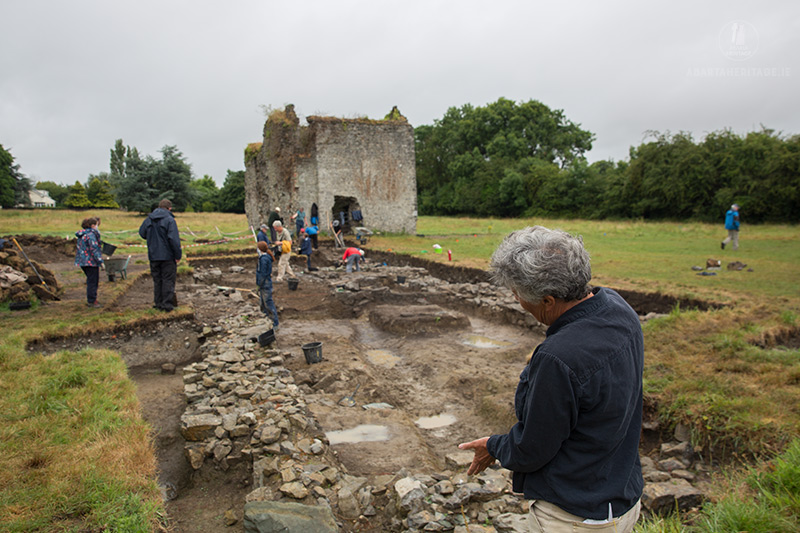
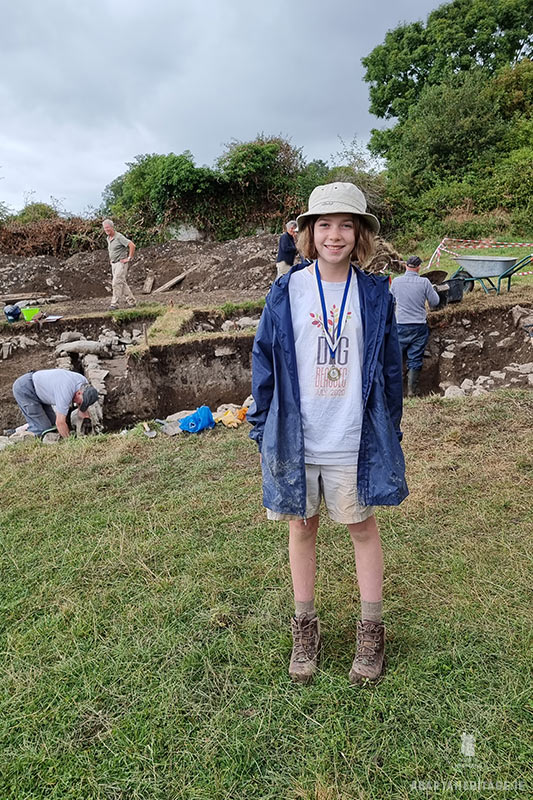
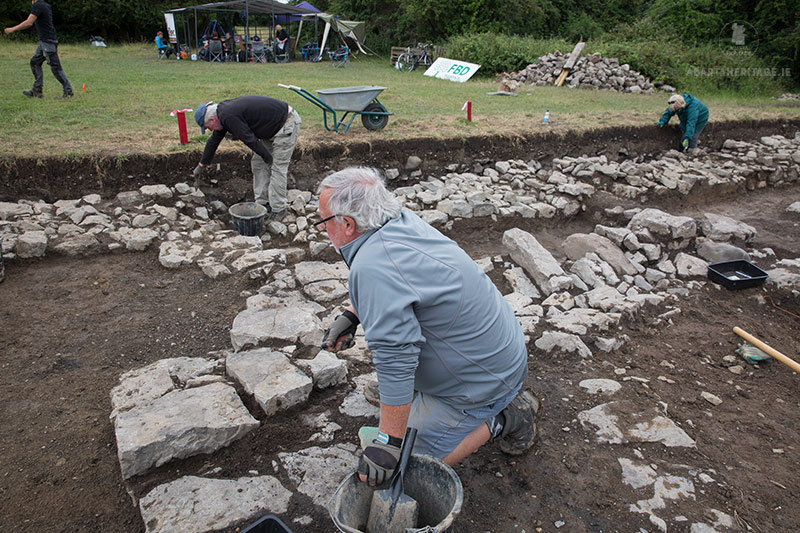
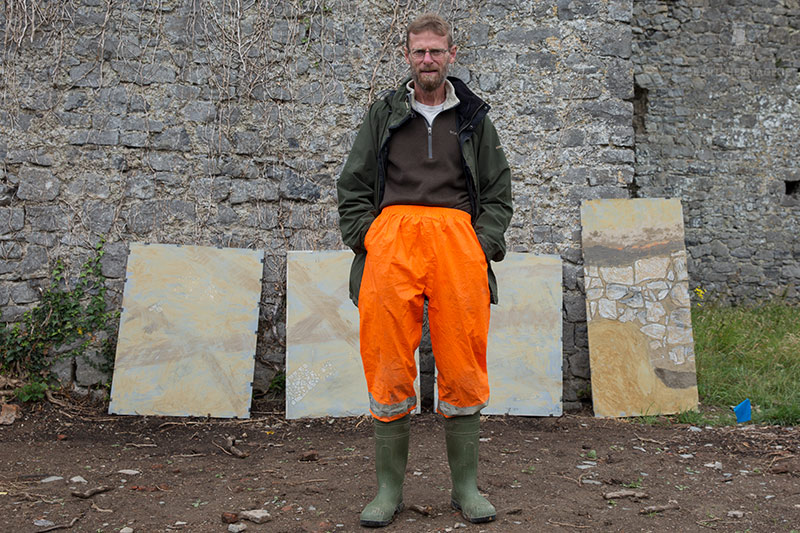
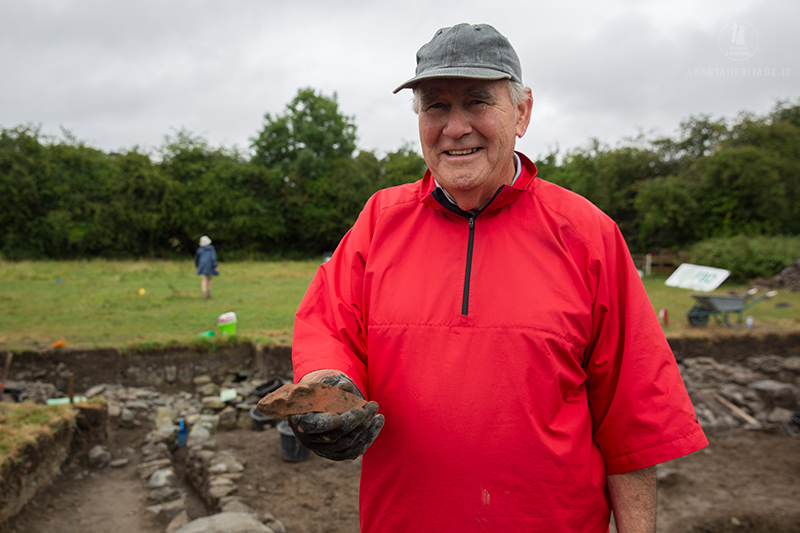
AMPLIFY ARCHAEOLOGY PODCAST
AMPLIFY ARCHAEOLOGY PODCAST
Title: Excavations at Beaubec
Duration: 1 hour 15 mins.
Summary:
Join us for a trench-side chat at the excavation of a Cistercian grange in County Meath. We hear from the excavation directors Geraldine and Matthew Stout, the landowners and the excavation team on this fascinating project
Excavations at Beaubec – Key Discussion Points and Contributors
- Geraldine Stout: project overview, aims, objectives and what was found – 01 min 18 secs
- Matthew Stout: the historical background, how the Cistercians came to farm at Beaubec – 2 min 45 secs
- Geraldine and Matthew: how did the Cistercians of Beaubec get on with those of Mellifont and Bective – 5 min 35 secs
- Geraldine and Matthew: the role of the De Lacy family in the foundations – 7 min 15 secs
- Geraldine and Matthew: how did Beaubec operate, how did the Cistercians manage the land? – 8 min 25 secs
- Geraldine and Matthew: the origins of this project – 12 min 47 secs
- Geraldine and Matthew: the importance of Beaubec – 14 min 25 secs
- Geraldine and Matthew: the discoveries, the barn, medieval discoveries, a prehistoric tomb and late Neolithic pit circle and more! – 15 min 39 secs
- Geraldine and Matthew: the future for the project – 16 min 30 secs
- Aidan Giblin, Mick Mongey and Anthony Neville of Resurrecting Monuments: on their experiences in archaeology and the Beaubec dig – 17 min 30 secs
- Bea McCullen: the youngest member of the team tells us of her experience on the excavation – 25 min 34 secs
- John McCullen: the landowner of Beaubec tells us of his interest in the site and its history – 28 mins
- John McCullen: what’s it like to have an important monument on your land, a blessing or a nuisance? – 29 mins 54 secs
- John McCullen: what would John like to see for the future of the site – 33 mins 17 secs
- John Sunderland: the artist in residence at Beaubec and the blend of heritage and art – 35 mins 49 secs
- Michala Nagyova, Bronagh James, Catherine Meehan and Molly O’Connell: on their experiences in archaeology and the Beaubec dig – 42 mins 24 secs
- Daniel Cummins and Elizabeth Gardner: on their experiences in archaeology and the Beaubec dig, and Elizabeth tells us about her engineering background – 45 mins 16 secs
- Anthony Murphy of Mythical Ireland: on drone photography and aerial discoveries in the Boyne Valley – 49 mins 47 secs
- Craig Downie: on excavating the service tower and latrine – 54 mins 40 secs
- Penny Johnston: environmental archaeology and what it can tell us about life in Beaubec – 57 mins 26 secs
- Caitríona Devane: the artefactual assemblage – 1 hour 3 mins 30 secs
- Roseanne Meehan: the pottery assemblage and what it can tell us about life at Beaubec – 1 hour 05 mins
- Grace McCullen: growing up at Beaubec, the experience of the excavation on the family land and the future for Beaubec – 1 hour 08 mins 25 secs
Show notes and links to further information
- You can discover more about the excavation on their fantastic website here.
- An article on the dig ‘Excavations in the time of Coronavirus’ also featured in the Winter 2020 edition of Archaeology Ireland Magazine.
- And a detailed account ‘Excavations at Beaubec, Beymore, Co.Meath (2019-20) – a preliminary report.’ by Geraldine Stout and Matthew Stout featured in Riocht na Midhe, Vol XXXII 2021.
- You can see a lovely timelapse video of aerial images showing the progress of the excavation on Anthony Murphy’s YouTube channel here.
- You can find more information on John Sunderland’s Touching Time art project on the excavation blog.
- If you’re interested in digging deeper into the stories of Ireland with online courses and lots of resources, and if you like exploring fantastic archaeology sites then you might enjoy our new Membership Service, Tuatha.
Dig into more stories with Amplify Archaeology Podcast
The post Excavations at Beaubec – Amplify Archaeology Podcast – Episode 25 appeared first on Abarta Heritage Home.
The Black Pig’s Dyke – Amplify Archaeology Podcast – Episode 24
The Black Pig’s Dyke. The Original Irish Border?
Dig into the Story of the Black Pig’s Dyke in Amplify Archaeology Podcast Episode 24
The Black Pig’s Dyke. The Original Irish Border?
Amplify Archaeology Podcast Episode 24
The Black Pig’s Dyke is an enormous series of earthworks that traverse nine counties from Donegal to Armagh. But why was it built and when? Was it really the original Irish border or is there another tale to tell? A new publication casts new light on this enigmatic monument, so join us in a chat with the authors and project team to discover the story.
A series of ancient and enigmatic linear earthworks contours the Irish landscape across nine counties, from Donegal to Armagh. The monumentality of these great earthworks has led to them being imbued with folklore and mythology, giving it evocative names like the Worm Ditch, the Dúncla and perhaps most famously, the The Black Pig’s Dyke. A name that derives from an old folk-tale of an enchanted boar that tore up the landscape with its tusks.
Perhaps the best stretch of the Black Pig’s Dyke is a 10km stretch in County Monaghan. It has been long believed to be an ancient boundary that separated Ulster from the rest of Ireland, but was it an Irish version of the Roman Antonine Wall? A new Wordwell publication offers a fresh perspective on the Black Pig’s Dyke and other great linear earthworks, based on Aidan Walsh’s excavations in the 1980s and a new series of investigations by Cóilín Ó Drisceoil through the Black Pig’s Dyke Regional Project. The project reassesses the chronology and interpretation of the monument, and it offers fascinating new insights into these enormous monuments and the role they played in prehistoric Ireland.
In this episode of the Amplify Archaeology Podcast, Neil was delighted to be joined by Cóilín Ó Drisceoil, Aidan Walsh and Shirley Clerkin. Due to the ongoing COVID-19 pandemic, this recording was carried out over Zoom, and there so there are a few audio wobbles. Please do bear with us though, it really is a fascinating discussion!
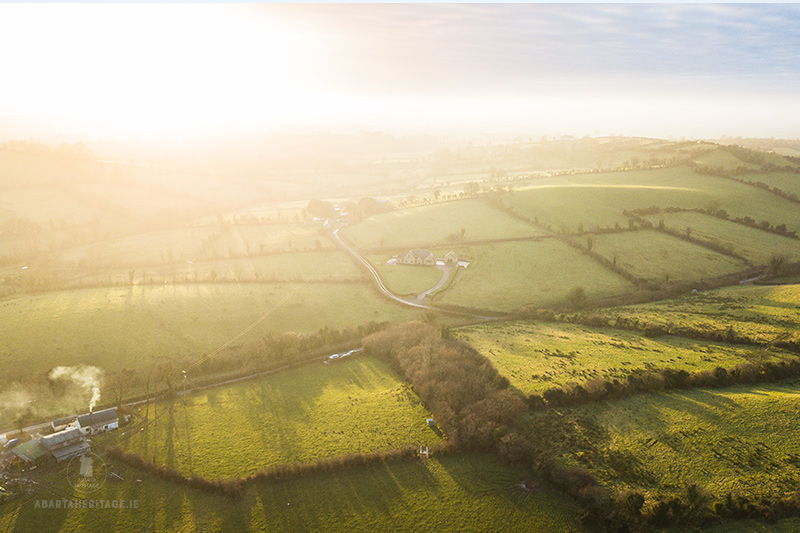
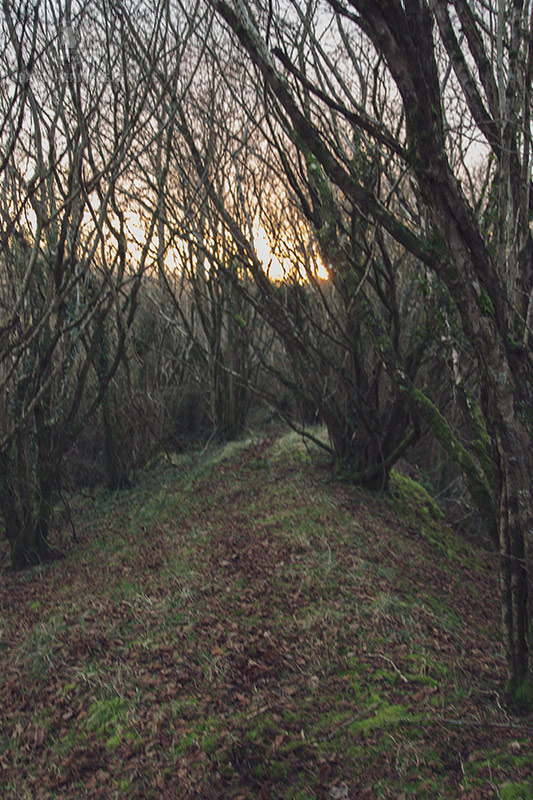
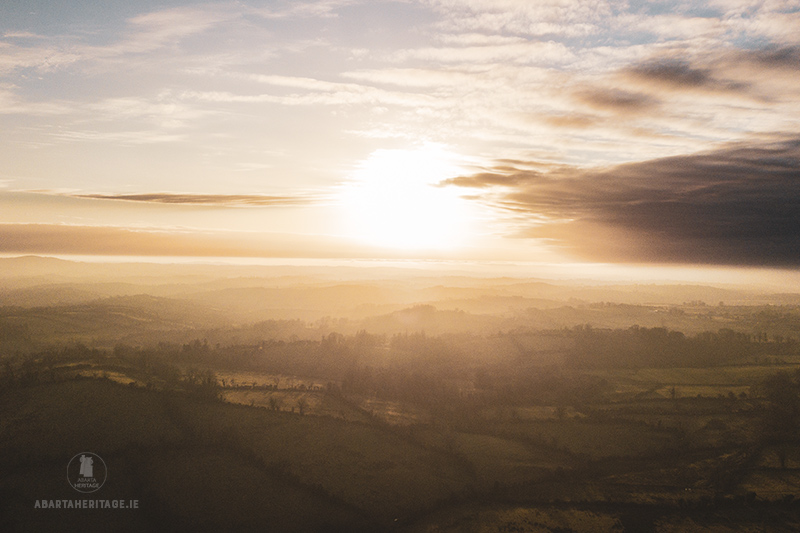
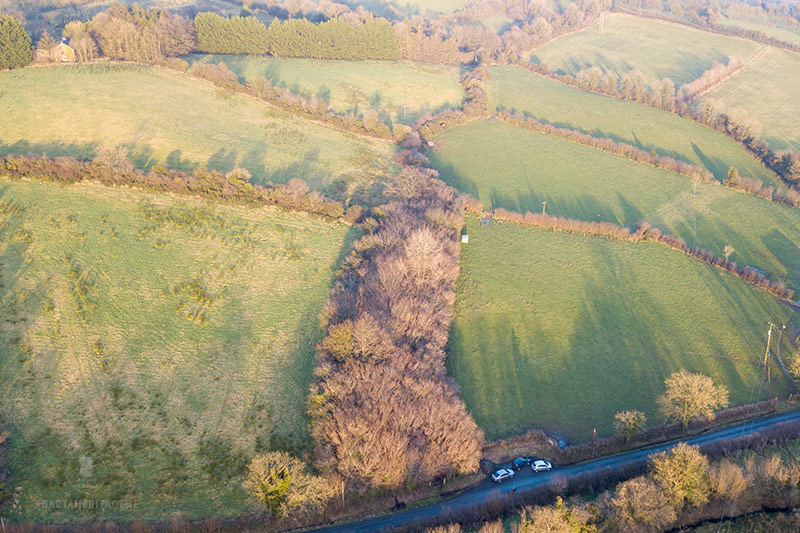
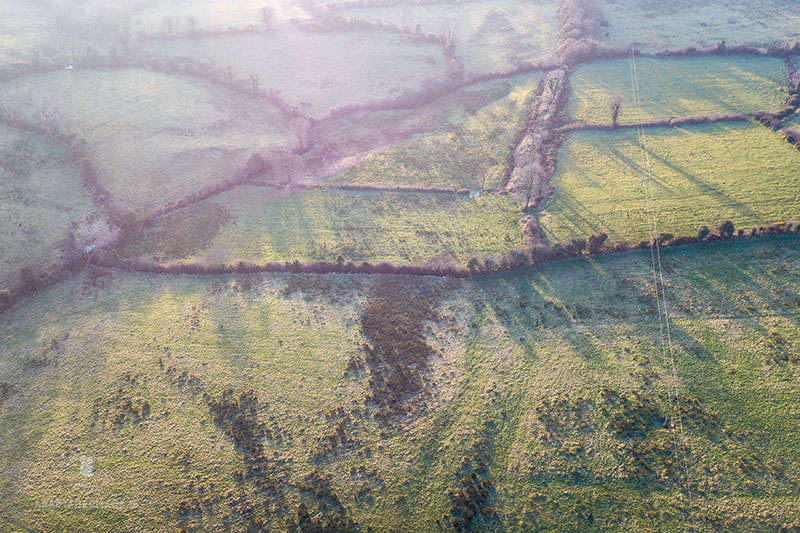
AMPLIFY ARCHAEOLOGY PODCAST
AMPLIFY ARCHAEOLOGY PODCAST
Title: The Black Pig’s Dyke
Duration: 1 hour 16 mins.
Summary:
Dig into the story of the Black Pig’s Dyke, an enigmatic series of prehistoric earthworks that traverse a number of Ulster counties.
The Black Pig’s Dyke – Key Discussion Points
- Where and what is the Black Pig’s Dyke? – 1 min 08 secs
- The Folklore and Mythology of the monument – 7 min 30 secs
- Are there other monuments like it in Ireland or overseas? – 10 min 15 secs
- The excavation of a section at Aghareagh West in 1982 – 16 min 10 secs
- How did the recent project come about? – 20 min 40 secs
- What was involved and how was the monument re-examined? – 26 min 00 secs
- What did the recent project reveal about the chronology of the monument – how old is the Black Pig’s Dyke? – 31 min 45 secs
- Has the new insights change the way you look at such a familiar monument? – 35 min 18 secs
- What do you think the Black Pig’s Dyke really was? Was it a defensive boundary or something else? – 38 min 45 secs
- When and why was it destroyed by fire? – 52 mins 30 secs
- A discussion on territorial oppida – 57 min 20 secs
- At a time when Ulster’s border is back in the news, what does the Black Pig’s Dyke tell us about territoriality and borderlands? – 1 hour 1 min 18 secs
- The importance of re-evaluation and asking questions about monuments that may feel very familiar to us – 1 hour 5 mins 25 secs
- The future of the Black Pig’s Dyke project, will the site ever be accessible to the public? – 1 hour 6 min 30 secs.
Show notes and links to further information
- The Wordwell publication Materialising Power, the Archaeology of the Black Pig’s Dyke really is brilliant. It’s very accessible and beautifully illustrated. You can order a copy here.
- You can also learn more about the project and the monument at blackpigsdyke.ie.
- You can discover more of the story of Monaghan at the fantastic Monaghan County Museum.
- Cóilín featured on a previous episode of Amplify Archaeology where he told us all about his fascinating excavation at Kilkenny Castle.
- At the end of the show I said our new service should be ready, but I’m really sorry to say it isn’t quite there! – we are still working hard to make sure it is a great user experience, so we invested a bit more time in a couple of features. Sorry for the delay! But we do have a brilliant special offer for the first 100 people to sign up, to be the first to find out when it goes live be sure to join our Tuatha Wait List.
Dig into more stories with Amplify Archaeology Podcast
The post The Black Pig’s Dyke – Amplify Archaeology Podcast – Episode 24 appeared first on Abarta Heritage Home.
Cave Archaeology – Amplify Archaeology Podcast – Episode 23
Cave Archaeology
Descend into the Dark in Amplify Archaeology Podcast Episode 23 with Dr. Marion Dowd
Cave Archaeology
Descend into the Dark in Amplify Archaeology Podcast Episode 23 with Dr. Marion Dowd
Throughout human history, caves have been places of shelter, ritual, burial and fear. Around the world, they have acted as time capsules, preserving ancient art and sacred spaces, but what do we know of the past use of Irish caves? Join us in the Underland for a discussion on Cave Archaeology with Dr. Marion Dowd.
This episode of Amplify Archaeology Podcast features a fascinating discussion with Dr. Marion Dowd. Marion is a Lecturer in Prehistoric Archaeology at IT Sligo, and Ireland’s foremost expert on cave archaeology. The dark depths of caves have loomed large in the human psyche since we evolved as a species. They have been places of shelter, inspiration, ritual and repository. They are places that unnerve us, and places that inspire us. In Europe, from at least the Upper Palaeolithic Period onwards, people ventured to the deepest and darkest parts of caves, far beyond the light of the entrance, as a place of ritual and ceremony. That’s where, in the likes of Lascaux, they created the incredible art, that utilises the contours and features of the cave to make the depictions of animals seem to come alive in the firelight.
Caves evoke our imaginations. Some of our earliest stories, like the Epic of Gilgamesh from around 1800 BC, tells the story of the hero who escaped the underworld. They feature strongly in Greek, Roman, Finnish, Inuit, Aztec and Hindu mythology. They also feature as a lair of wild beasts, or bandits like in the story of Ali Baba and the Forty Thieves. Archaeology also shows that caves have a very practical aspect, they offer shelter and a constant temperature, making them ideal for storage.
In this episode of the Amplify Archaeology Podcast, Marion tells us about the practice and practicalities of cave archaeology, and how caves have been used for different purposes through time in Ireland. From ongoing tradition in the Mesolithic, places of excarnation in the Neolithic, ritual in the Bronze Age and mass burial by the Vikings, by venturing into the dark depths of caves we can shine a light on Ireland’s past.
To go into the dark with a light, is to know the light
To know the dark, go dark. Go without sight,
And find the dark, too, blooms and sings,And is travelled by dark feet, and dark wings.
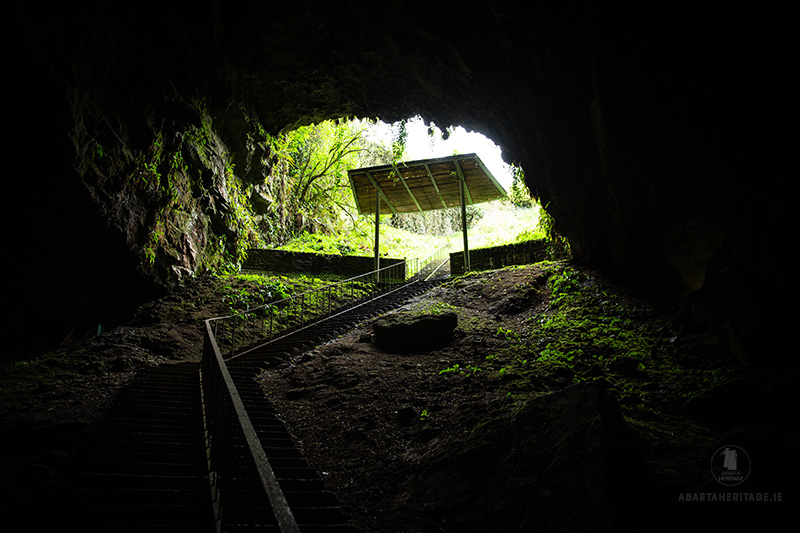
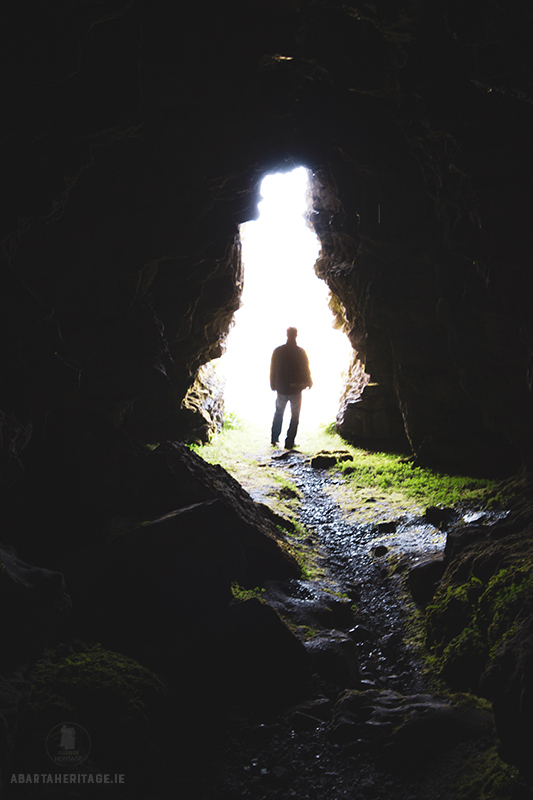
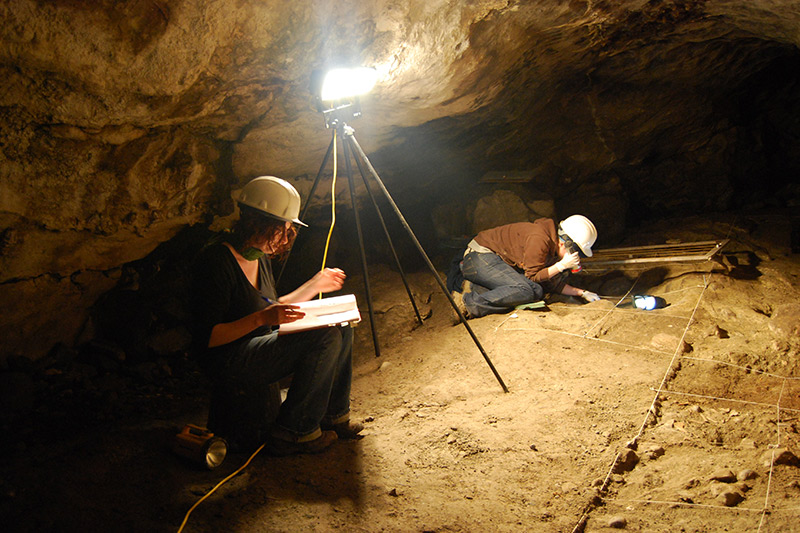
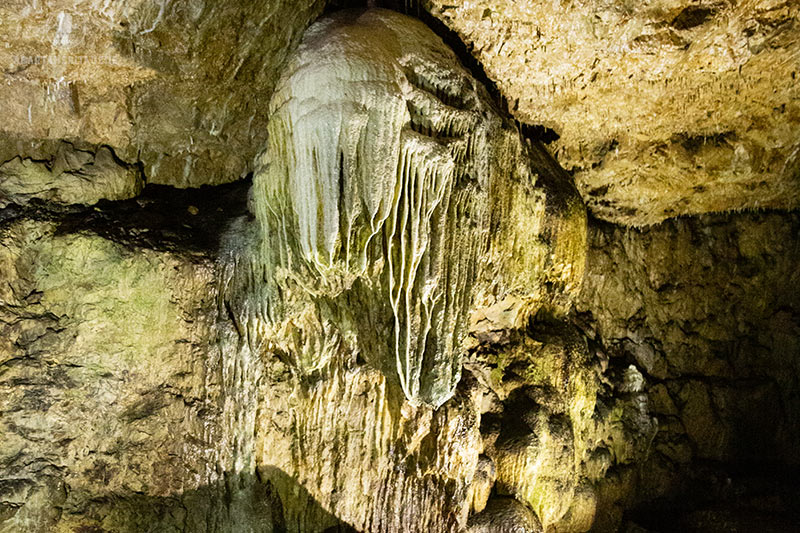

AMPLIFY ARCHAEOLOGY PODCAST
AMPLIFY ARCHAEOLOGY PODCAST
Title: Cave Archaeology
Duration: 1 hour 03 mins.
Summary:
Descend into the Dark as we discuss Cave Archaeology in Amplify Archaeology Podcast Episode 23 with Dr. Marion Dowd
Into the underland we have long placed
that which we fear and wish to lose,
and that which we love and wish to save…
Cave Archaeology – Key Discussion Points
- What is cave archaeology, and how is it different to the regular sort of surface archaeology? – 1 min
- Folklore and the physical & sensory experience in caves – 5 min 05 secs
- What inspired Marion to get into the archaeology of caves? – 7 min 55 secs
- What is the background to the archaeology of Ireland’s caves, what was the origin of the first investigations? – 9 min 44 secs
- Are new archaeological discoveries regularly being made in Irish caves? – 12 min 51 secs
- The changing use of caves, beginning with Killuragh Cave (Mesolithic) – 15 min
- Knocknarea Cave (Neolithic excarnation) – 19 min 30 secs
- Glencurran Cave (Bronze Age) – 24 min 33 secs
- Caves as places for inspiration or contemplation – 33 min
- Dunmore Cave (Vikings) – 39 mins 30 secs
- Moneen Cave (16/17th century) – 46 min
- The multiperiod nature of cave archaeology – 50 min 50 secs
- Caves in the Irish War of Independence – 52 min 34 secs
- Caves and Placenames – 55 mins 20 secs
- What caves can people experience and visit today? – 56 min 19 secs
- Caves as ‘Time Capsules’ – 57 min 40 secs
Show notes and links to further information
- PDFs of all of Marion’s groundbreaking publications and papers can be found here.
- If you wish to purchase a copy of the award-winning Archaeology of Caves in Ireland you can find a copy at O’Mahonys, or if you’re in the UK the publisher is Oxbow Books.
- I also highly recommend the Archaeology of Darkness edited by Marion with Dr. Robert Hensey who has appeared in previous episodes of Amplify Archaeology on Carrowkeel, and Newgrange. You can find it here.
- Marion did a great talk on the Archaeology of Sligo’s Caves for The Sligo Community Archaeology Project. You can see the video here.
- And here’s another really interesting presentation on Bronze Age cave use in the Burren for Burrenbeo, you can see the video here.
- There’s a great virtual tour of the incredible Lascaux Caves here.
- Dunmore Cave is a great place to visit with a fascinating story. It’s located near Castlecomer in County Kilkenny. You find information here.
- Back in January 2020 I was delighted to be a guest on Fin Dwyer’s fantastic Irish History Podcast where we visited Dunmore to talk about its story.
- There are other great show caves to visit, like Aillwee in the Burren, Mitchelstown Caves not far from us in County Tipperary, the Marble March Caves in Fermanagh, Crag Cave in Kerry, and the beautiful Caves of Keash outside Sligo.
- Another superb book on humanities experience with caves is Underland by Robert MacFarlane. It pulls the ‘deep time’ nature of caves into focus.
- As I mentioned at the end of the episode, we are very nearly ready with the new service from Abarta Heritage. Do sign up to our mailing list (at the bottom of this page) to make sure you’re one of the first to see it. If you sign up you won’t get spammed at all I promise, we’ll just send info on great places to visit, news, new audioguides and insights along with special offers and a lot more too. So please do sign up for free below!
Dig into more stories with Amplify Archaeology Podcast
The post Cave Archaeology – Amplify Archaeology Podcast – Episode 23 appeared first on Abarta Heritage Home.
Prehistoric Gold – Amplify Archaeology Podcast – Episode 22
Ireland’s Prehistoric Gold
Find all that glitters in Amplify Archaeology Podcast Episode 22 with Mary Cahill
Ireland’s Prehistoric Gold
Amplify Archaeology Podcast Episode 22 with Mary Cahill
Ireland’s first Golden Age – discover the story of Ireland’s prehistoric gold and the remarkable Mooghaun Hoard in this fascinating discussion with Mary Cahill.
In around 2500 BC, the first metal objects began to be produced in Ireland. Though the periods may be known as the Copper Age and the Bronze Age, another metal takes prominence in our understanding of the culture of the period – gold. Ireland is renowned for the quantity and quality of prehistoric gold objects. And every time I visit the National Museum of Ireland’s Ór exhibition, it is a reminder of the artistry of these early metalworkers.
But beyond being a symbol of wealth and status, these stunning golden collars, bracelets and ear-spools also give us insights into the societies that created them. They can inform us about art, meaning, belief and spirituality. The earliest golden objects were often thin sheets of hammered gold, that formed stunning golden collars known as lunulae, and golden disks that may hint at solar worship. As the period progressed, the scale of the golden objects vastly increased, from thin sheet metal to elaborate gorgets, dress-fasteners, neck rings and thick gold collars. Some of these objects were hidden together in hoards, such as the famous Mooghaun Hoard that was found during railway construction in the mid-19th century.
I was delighted to have the opportunity to talk about all that glitters with Mary Cahill this week. Mary is an Adjunct Professor NUI Galway; and the former Keeper of Irish Antiquities National Museum of Ireland. Mary is an expert in prehistoric gold, and she told me all about when gold first appeared in Ireland, what those early objects tell us of the societies that created them, and the discovery of that spectacular hoard at Mooghaun. This is a wide-ranging and fascinating discussion, I hope you enjoy it!
The usual disclaimer, that due to covid, this recording was carried out over Zoom so please do forgive any little audio wobbles that might occur.
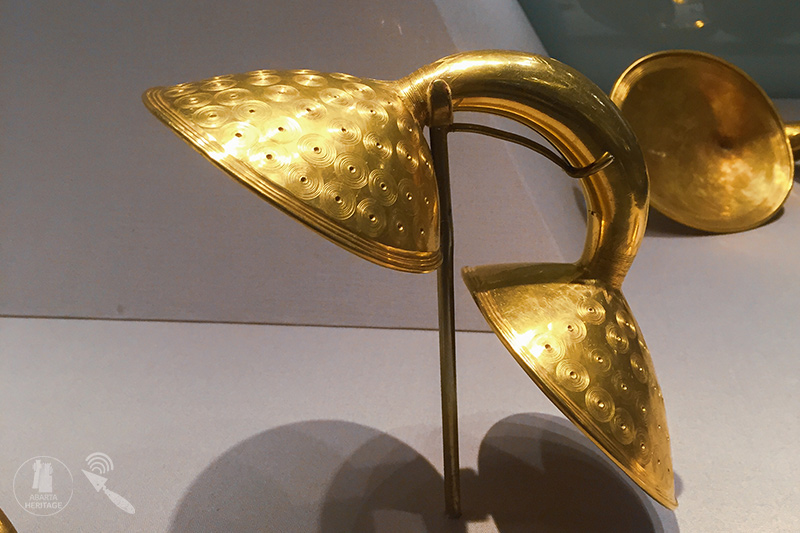
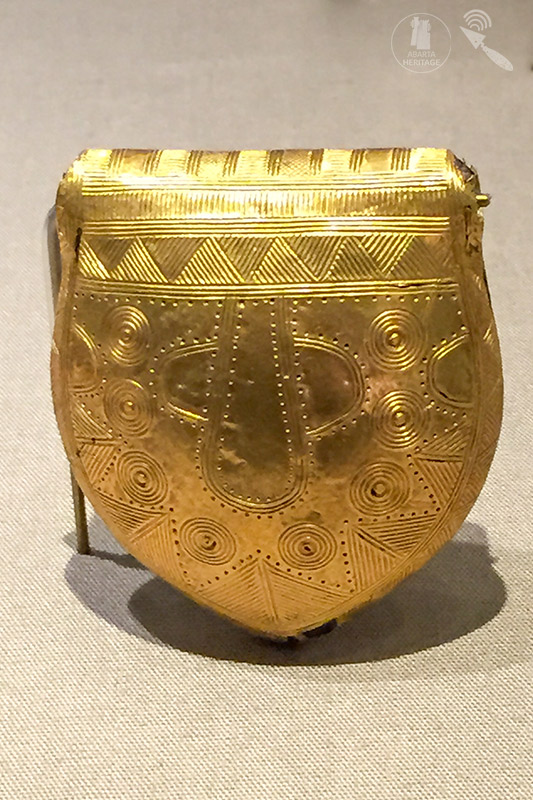

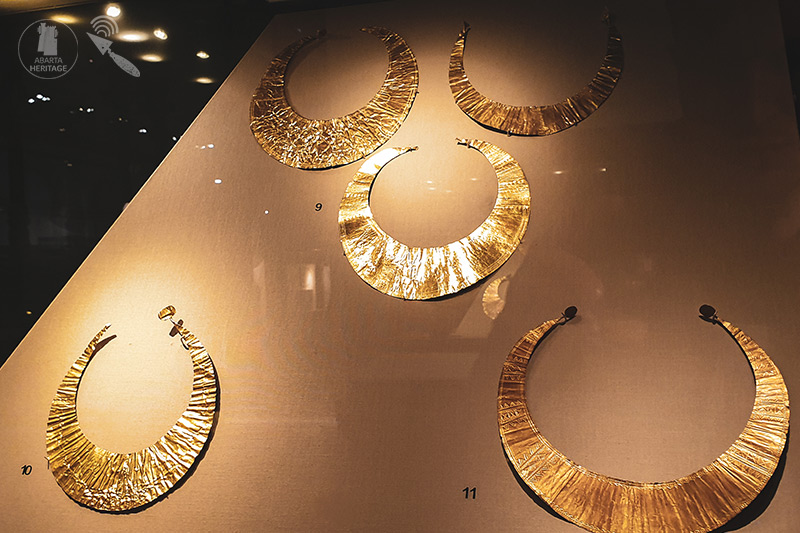

AMPLIFY ARCHAEOLOGY PODCAST
AMPLIFY ARCHAEOLOGY PODCAST
Title: Prehistoric Gold
Duration: 1 hour 11 mins.
Summary:
Hear about Ireland’s prehistoric gold in this discussion with Mary Cahill. Mary tells us about when gold first appeared in Ireland, the likely sources for Irish gold, what the objects can tell us about the societies that created them, and the astounding tale of the Mooghaun Hoard
Ireland’s Prehistoric Gold – Key Discussion Points
- Have you found any gold? – 45 secs
- What is the earliest known international evidence of gold being worked? (discussion on Varna, Bulgaria) – 5 min 42 secs
- Do we know the source of Ireland’s prehistoric gold – 13 mins
- Does Ireland stand out for the quantity and quality of gold? – 20 min 44 secs
- The reuse of gold – 22 mins 45 secs
- The Mooghaun Hoard – 28 mins 54 secs
- The Australian connection to the Mooghaun Hoard – 39 mins 30 secs
- What can the golden objects tell us about the societies that created them? – 47 mins 24 secs
- If someone was lucky enough to find a golden artefact, what should they do? – 1 hour 02 mins 30 secs
- The importance and accessibility of the National Museum’s collections – 1 hour 05 mins 30 secs
Show notes and links to further information
- You can find a collection of Mary’s writings on archaeology and Prehistoric Gold here.
- The National Museum of Ireland have information on Ireland’s prehistoric gold here.
- There’s an interesting article with lots of images about the early site at Varna, Bulgaria, here.
- You can see examples of the golden discs that Mary described here.
- The Coggalbeg Gold Hoard features on the 100 Objects website here.
- You can also see more about the incredible Mooghaun Hoard in the 100 Objects website.
- You can also see part of the Mooghaun Hoard in the British Museum website.
- Dr. Greer Ramsey also has a great overview of Bronze Age gold on the National Museums of Northern Ireland website.
- If you are fortunate enough to find something please call the National Museum of Ireland and ask to speak to the Duty Officer. Details here.
- As I mentioned at the end of the episode, we have something very, very, very exciting in the works that should be launched before the end of May. Do sign up to our mailing list (at the bottom of this page) to make sure you’re one of the first to see it. You will also receive our Monument Monday mails, where we highlight one of our favourite ‘hidden gems’ each week, so if you’re looking for a bit of Ireland in your inbox you might enjoy it!
Dig into more stories with Amplify Archaeology Podcast
The post Prehistoric Gold – Amplify Archaeology Podcast – Episode 22 appeared first on Abarta Heritage Home.
Archaeological Landscapes of St Patrick – Amplify Archaeology Podcast – Episode 21
The Archaeological Landscapes of St Patrick
Dig into the Story of St Patrick in Amplify Archaeology Podcast Episode 21 with Terry O’Hagan
The Archaeological Landscapes of St Patrick
Amplify Archaeology Podcast Episode 21 with Terry O’Hagan
Who was St Patrick? Why is he such an important figure in Irish history? What was 5th century Ireland like? Join us for a deep dive into the archaeology of Ireland’s patron saint in this fascinating discussion with Terry O’Hagan
As St Patrick’s Day is upon us, I thought this would be a fantastic opportunity to discuss the man himself with the famous Vox Hiberionacum, Terry O’Hagan. Terry is a researcher focusing on Early Irish Christianity and Early Medieval Ireland, with a particular interest in St. Patrick. In this discussion we look at the evidence that such a figure existed, what the Ireland of the 5th century might have been like, and the evidence for pre-Christian belief. We look at the contemporary landscapes, discuss where the famous saint might actually have been, and how he escaped from captivity, only to return again to Ireland. We also discuss what those earliest days of Christianity might have been like, and how he became transformed into the super saint of legend that we all know and celebrate today.
This is a really fascinating deep dive into the subject, with some fascinating tangents on landscape archaeology, belief, hagiography and early medieval Irish politics. Thanks so much to Terry for all of his time and insights. This recording was carried out over Zoom so please do forgive any little audio wobbles that might occur.
Although this St Patrick’s Day is still shadowed by the ongoing pandemic, we want to take this opportunity to wish all of you a very happy and safe day – Lá Fhéile Pádraig Sona Daoibh!
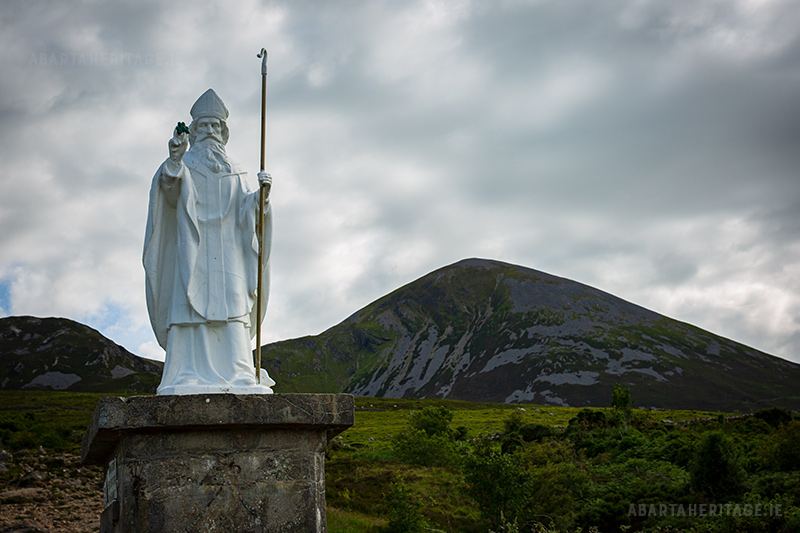
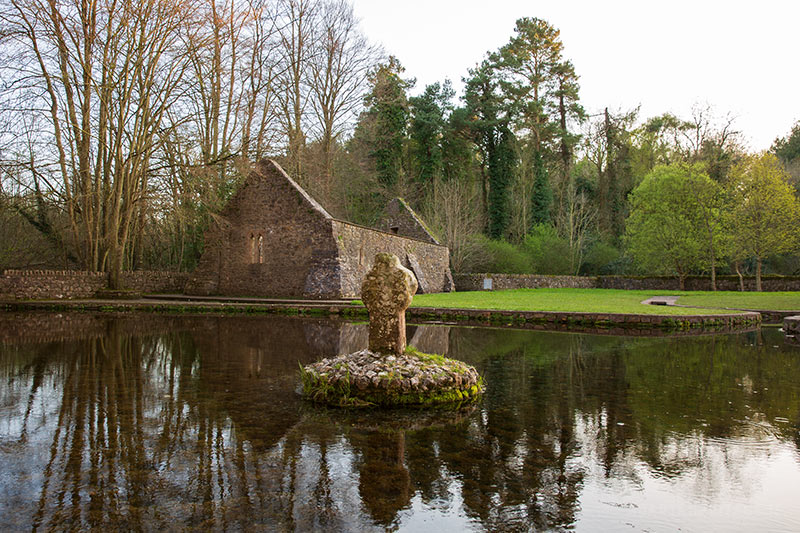
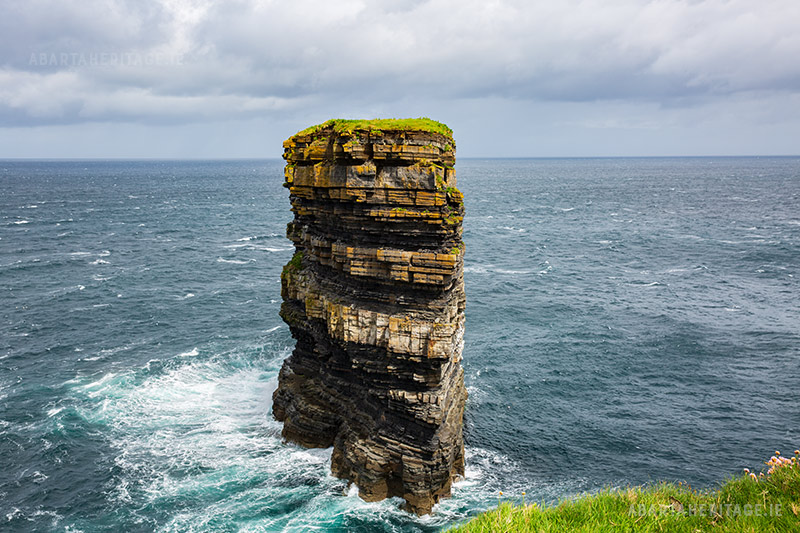
AMPLIFY ARCHAEOLOGY PODCAST
AMPLIFY ARCHAEOLOGY PODCAST
Title: The Archaeological Landscapes of St Patrick
Duration: 1 hour 11 mins.
Summary:
Dig into the story of St Patrick in this deep-dive discussion with Terry O’Hagan. We discuss what evidence we have of St. Patrick, the Ireland of the 5th century, and what his writings can tell us about the earliest days of Christianity in Ireland
The Archaeological Landscapes of St Patrick – Key Discussion Points
- What evidence do we have that St Patrick really existed? – 1 min 18 secs
- What was his background, who was he and where did he come from? – 5 min 40 secs
- St Patrick was captured by a raid as a young man, do we know who was doing the raiding at the time? – 8 min 19 secs
- What was Ireland like at the time he was captured, what do we know archaeologically about that period between the Iron Age and the early medieval period, how did people live? – 10 min 25 secs
- What do we know about what people believed before Christianity arrived in Ireland – 16 min 57 secs
- Christianisation of ‘pagan’ sites – 20 min 52 secs
- Did he really mind sheep on a Mayo mountain? – 24 min 26 secs
- How did he escape Ireland, and where did he leave from? – 30 min 24 secs
- Why and when did St Patrick return to Ireland? – 37 min 05 secs
- What do we know about the early Christian communities in Ireland? – 41 mins 42 secs
- Would there have been anything archaeologically recognisable about these early communities, did they have churches at this time? – 44 min 12 secs
- Do we know who these early Christians were, what strata of society etc? – 47 min 38 secs
- Patrick’s potential ‘strategy’ – 50 mins 07 secs
- Who was Palladius, and what was his impact on Ireland? – 50 min 25 secs
- How did it end for St Patrick? – 53 mins
- The transformation of the historical Patrick into ‘St Patrick’ – 54 min 44 secs
- How much did it help that Patrick was an ‘outsider’ – 58 min 11 secs
- What do you think the real Patrick would have made of the image we have of him today? (includes chat on St Patrick and the apocalypse). – 1 hour 59 secs
- The real story of St Patrick being more dramatic than the legend – 1 hour 04 mins 2 secs
- Where you can find further information on St Patrick – 1 hour 07 mins 20 secs
Show notes and links to further information
- You can find Terry’s brilliant blog here: voxhib.com
- The Royal Irish Academy have a wonderful resource on Patrick and his writings at confessio.ie.
- Terry wrote a fantastic audiobook that digs deeper into the story of St Patrick that is brought to life by Gerry O’Brien. You can purchase a copy for just €4 here.
- As I mentioned at the end of the episode, we have something very, very, very exciting in the works that should be launched before May. Do sign up to our mailing list (at the bottom of this page) to make sure you’re one of the first to see it. We’re going to be making our mailing list a weekly thing, with info on great places to visit, news, new audioguides and insights along with special offers and a lot more too. So please do sign up for free below!
Dig into more stories with Amplify Archaeology Podcast
The post Archaeological Landscapes of St Patrick – Amplify Archaeology Podcast – Episode 21 appeared first on Abarta Heritage Home.
Wetland Archaeology – Amplify Archaeology Podcast – Episode 20
Wetland Archaeology
Cathy Moore & Dr Ben Gearey discuss Ireland’s wetland archaeology in Amplify Archaeology Podcast Episode 20
Wetland Archaeology
Cathy Moore & Dr Ben Gearey discuss Ireland’s wetland archaeology in Amplify Archaeology Podcast Episode 20
From ancient trackways to enigmatic bog bodies, the archaeology of Ireland’s bogs is truly remarkable. But as the industrial peat harvesters fall silent, a new threat appears. Is time finally running out for Ireland’s iconic wetland archaeology? Amplify Archaeology Podcast Episode 20
Bogs and wetlands are one of the most iconic, and characteristically Irish, landscapes. Almost 1/6th of the country is covered by bog, and it is particularly significant in the midlands. Bogs have long served a variety of functions to past and present societies, from places to gather resources like fuel, rushes and reeds or to hunt. They also have a liminal aspect, forming boundaries and dangerous places that were, and often still sadly are, treacherous to the unwary and unfortunate. They are also places of community effort, meitheal, with real intangible cultural heritage all of their own. They have inspired artists, writers and poets for centuries.
Archaeological sites in wetlands vary from wooden trackways, platforms and bridges, to fish traps and fulachta fiadh. One of the defining characteristics of wetland sites is the high quality preservation of organic remains, including human remains as we see so poignantly in the case of ‘bog bodies’. In a sense, the bogs also act as environmental time capsules, as they preserve important palaeoenvironmental material such as botanical and animal remains, and microfossils like pollen. The process of wetland archaeology allows us to investigate and reconstruct past people’s landscapes, culture, and lives in sometimes astonishing detail.
Since the mid-20th century, the increasing industrialisation of peat harvesting has created employment and prosperity for many communities, though it has led to the loss of innumerable archaeological monuments, and the bogs themselves drained and scoured into great brown deserts. Now the immense harvesters are beginning to be silenced and stilled, the bogs are to be transformed once more, some will be ‘rehabilitated’ or ‘rewetted’, others will be planted with windfarms to generate another form of power. These changes will pose more challenges to what is left of the important archaeological and cultural heritage, and it is no exaggeration to say this may be our last chance to identify, record and understand many of these wetland archaeology sites.
In this episode of Amplify Archaeology Podcast, Neil was joined for a Zoom chat with Cathy Moore and Dr. Ben Gearey. Cathy is a highly experienced wetland archaeologist and wooden finds specialist who has excavated remarkable sites such as the trackway complex Edercloon in County Longford, and Drumclay Crannog in County Fermanagh, as well as numerous others including co-directing the excavation of a beautifully preserved watermill at Kilbegly in County Roscommon with Neil. Ben is a Lecturer in Environmental Archaeology, in the Department of Archaeology at University College Cork, Ireland. He has a range of research interests, with a particular focus on the archaeological and palaeoenvironmental records of peatlands.
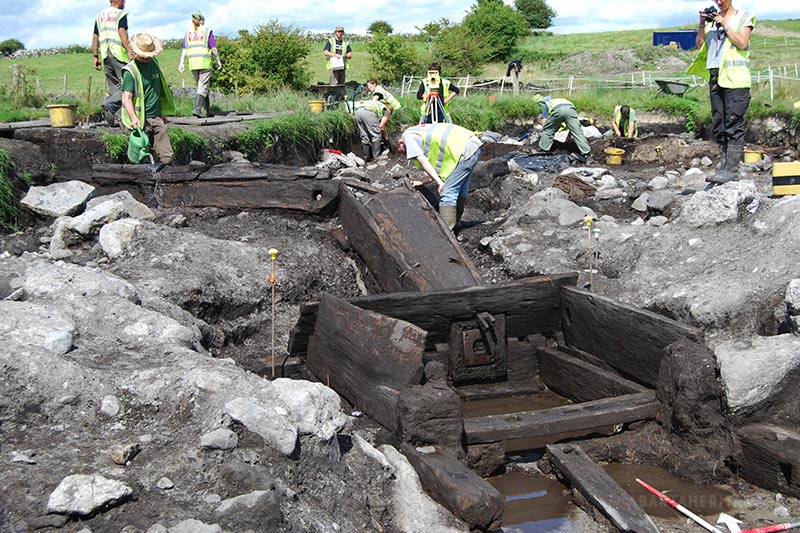
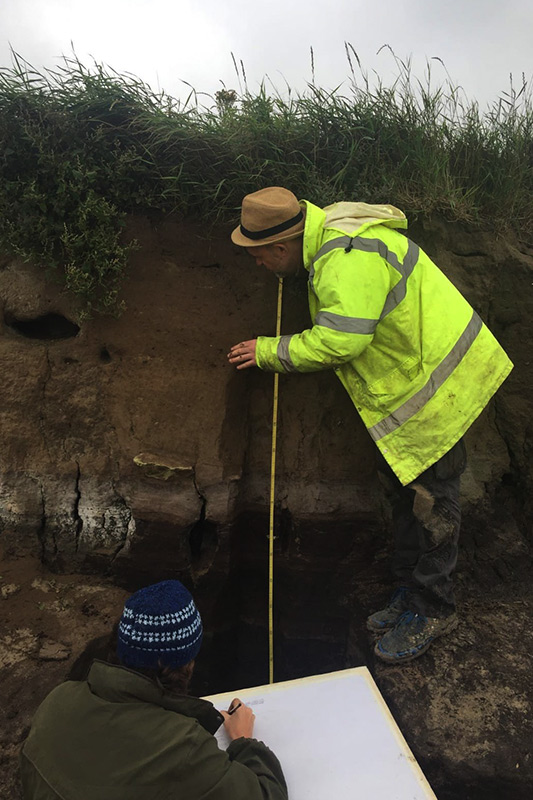
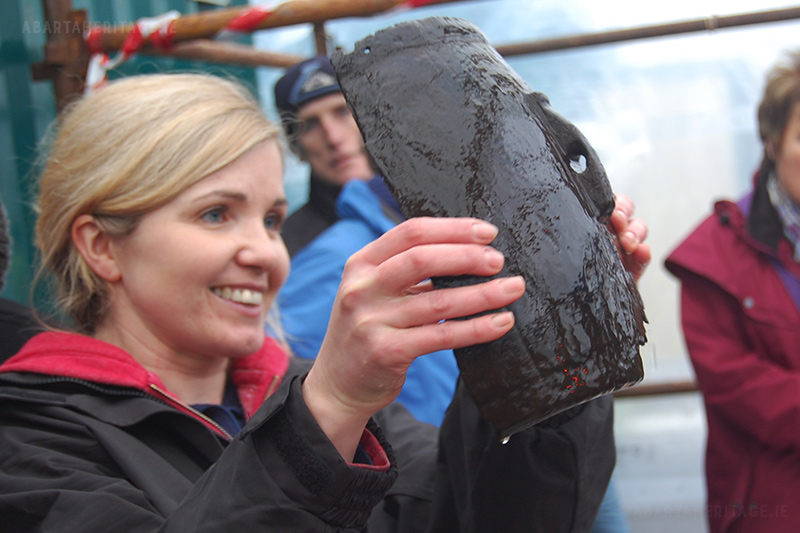
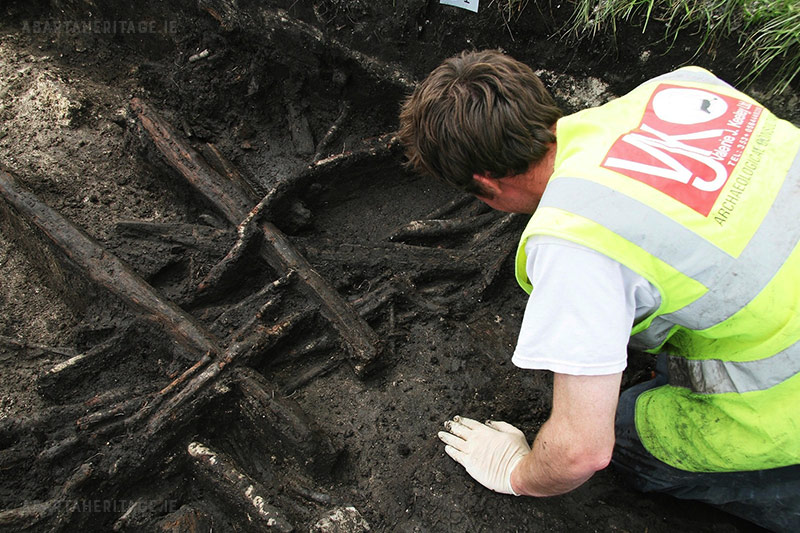
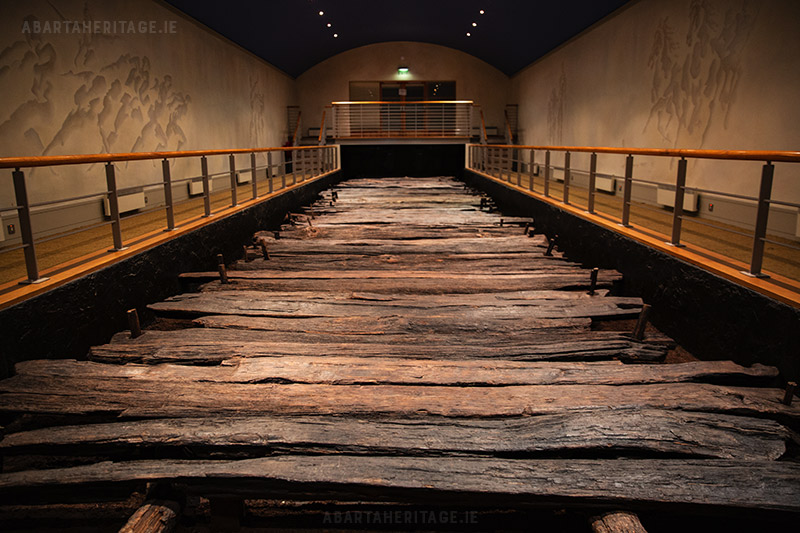
AMPLIFY ARCHAEOLOGY PODCAST
AMPLIFY ARCHAEOLOGY PODCAST
Title: Wetland Archaeology
Duration: 54 mins.
Summary:
From bog bodies to ancient trackways, the archaeology of Ireland’s bogs is truly remarkable and famous around the world. But it has faced dire threat from peat extraction. Now the harvesters fall silent, another challenge looms. Is time running out for our wetland archaeology?
Episode 20 Wetland Archaeology – Show Notes
- Ben is part of the WetFutures Project – a transdisciplinary approach to wetland heritage in the Netherlands, United Kingdom and Ireland. You can find out more on the project website.
- Both Ben and Cathy are involved in the exciting Pallasboy Project, that seeks to explore the creative process involved in the crafting of prehistoric wooden artefacts beginning with the ‘Pallasboy Vessel’, an Iron Age wooden artefact discovered in Toar Bog, Westmeath. You can find out more on the project website.
- You can read about Bord na Móna’s decision to end peat harvesting in the Green News.
- You can also read more about their policy to ‘rehabilitate’ or ‘rewet’ the bogs on the Bord na Móna website.
- It was an early medieval penannular brooch (rather than a ringpin) that was discovered in the ashes of a fire, by a couple in 2010 in County Kerry. You can read the account in The Irish Times, also in the Irish Examiner.
- You can find out more about the Kingship and Sacrifice exhibition on the National Museum of Ireland website (please note, the webpage has images of human remains).
- The National Museum of Ireland also has an overview of their Bog Bodies Research Project (please note, the webpage has images of human remains).
- Wherever possible I try to link to Irish bookshops rather than the online giants, but as both Cathy and Ben indicated there aren’t many recent publications on Irish wetland archaeology and those that there were are either out of print, or down to the last copy or two. There appears to be a rare copy of the Bog Body of Tumbeagh available from Mayo Books.
- I’ve only managed to find one copy of The Mill at Kilbegly by myself (Neil Jackman) with Cathy Moore and Colin Rynne. It’s listed as available in Alan Hanna’s bookshop, Dublin.
- However thanks to Transport Infrastructure Ireland an overview of the excavation at Kilbegly has been made available free to download on the Digital Repository of Ireland.
- You can also find an overview of Cathy’s remarkable excavations at the trackway complex at Edercloon on the Digital Repository of Ireland.
- The important report: ‘A Review of Archaeological Survey and Mitigation Policy Relating to Bord na Móna Peatlands Since 1990′ prepared by Dr Benjamin Gearey, Dr Nóra Bermingham, Caitríona Moore and Professor Robert Van de Noort is available on the National Monuments Service website.
- You can hear more from Cathy in this great interview on the Broad Leaf Podcast.
- Fin Dwyer of the excellent Irish History Podcast has a really interesting miniseries on one of the most remarkable bog bodies – hear the Road to Old Croghan here.
- Finally, you can hear the story of a community that was originally founded on Bord na Móna works at Lough Boora in County Offaly, with our free Kilcormac Heritage Trail audio guide.
Amplify Archaeology Podcast
During this podcast series we will meet some of Ireland’s archaeologists to discuss the key periods, places and people that tell the story of Ireland, and we’ll gain new insights into the practice and techniques of modern Irish archaeology. This is the twentieth instalment of Amplify Archaeology, previous episodes have featured a miniseries on Newgrange and the Winter Solstice, discussions on excavations at Kilkenny Castle, the Rock of Cashel and Glendalough. We’ve also looked at Ogham, Digital Heritage, Conflict Archaeology, Living History, the Beaker People, History of Food, Passage Tombs, Castles, Mesolithic Ireland and more!
I’d love some feedback, so please do leave a comment below – and if you have any questions about Irish archaeology please do let me know, we can try to answer them in forthcoming episodes. Finally if you enjoyed this podcast I’d be really grateful if you could leave us a review on iTunes, or please share it and tell your friends.
The podcast is an Abarta Heritage production. Due to the ongoing COVID pandemic it was recorded over Zoom with Neil Jackman (the interviewer) Cathy Moore and Dr. Ben Gearey. We are really grateful to Cathy and Ben for their generosity and insights.
….’Our pioneers keep striking
Inwards and downwards,
Every layer they strip
Seems camped on before.
The bogholes might be Atlantic seepage.
The wet centre is bottomless.’
Dig into more stories with Amplify Archaeology Podcast
The post Wetland Archaeology – Amplify Archaeology Podcast – Episode 20 appeared first on Abarta Heritage Home.
Newgrange Winter Solstice with Gabriel Cooney – Amplify Archaeology Podcast
Newgrange and the Landscapes of Neolithic Ireland
Prof. Gabriel Cooney joins us for Part 5 of our miniseries on Newgrange and the Winter Solstice
Newgrange and the Landscapes of Neolithic Ireland
Prof. Gabriel Cooney joins us for Part 5 of our miniseries on Newgrange and the Winter Solstice
Join us for Part 5 of our miniseries on Newgrange, the Winter Solstice and the Landscapes of Neolithic Ireland with Professor Gabriel Cooney
The great passage tomb of Newgrange in the Boyne Valley of County Meath, is one of Ireland’s most iconic monuments. Today it is a World Heritage Site, and (on a normal year) it is one of our most visited monuments, with people from all over the world travelling to see this marvel of Neolithic engineering and belief. As the Winter Solstice is upon us, Newgrange takes on even more meaning, as it is aligned with the midwinter solstice. On a clear dawn on the 20th, 21st and 22nd December, a beam of light from the rising sun travels up the passageway to illuminate the chamber. Each year people gather in great numbers around the monument to celebrate this phenomenon, and lucky lottery winners get the ultimate prize of being inside the chamber to witness it first hand. However, this year, if it shines the light will pass unseen by human eyes. The pandemic that has taken so much, has also meant that the gathering for 2020 has been cancelled.
I thought this would be a good opportunity to discuss Newgrange with some of the experts who know the site intimately. As a way of casting another kind of light on our iconic monument. This is the final episode of a miniseries focusing on Newgrange. In this edition Neil was joined by Professor Gabriel Cooney, one of Ireland’s foremost experts on the Neolithic and chairperson of the Research Committee of the Bru na Boinne World Heritage Site. In the podcast we discuss many aspects of Newgrange and the winter solstice, along with its landscape context, Neolithic society in Ireland and what Newgrange can tell us about the connections between Ireland and Europe.
Winter Solstice at Newgrange Podcast Miniseries by Amplify Archaeology
This is the final episode of a five part series on Newgrange and the Winter Solstice.
- Professor Muiris O’Sullivan featured in Part 1.
- Dr. Jessica Smyth featured in Part 2.
- Clare Tuffy featured in Part 3.
- Dr. Robert Hensey featured in Part 4.
So do be sure to catch those when you can. I’d just like to thank Gabriel, Jessica, Clare, Robert and Muiris for taking the time to talk with me. They’ve given me so much to think about. And I want to thank all of you for joining me on the journey so far, we’re nearly there with this long and difficult year. So let’s take the last step together as we search for light at the end of the tunnel, at Newgrange.
AMPLIFY ARCHAEOLOGY PODCAST
AMPLIFY ARCHAEOLOGY PODCAST
Title: Winter Solstice at Newgrange Podcast Miniseries Part 5
Duration: 53 mins.
Summary:
Professor Gabriel Cooney joins us for Part 5 of our podcast miniseries on Newgrange and the Winter Solstice, to discuss the Landscapes of Neolithic Ireland
Newgrange, the Winter Solstice and the Landscapes of Neolithic Ireland Part 5 – Show Notes
- The beautiful image of light entering the chamber used as the header and in the gallery of this page is courtesy of Brian Morrison, Fáilte Ireland
- Professor Cooney has written extensively on the Neolithic and Irish prehistory. You can find a list of all his works here.
- Gabriel recently co-edited the fascinating Cultures of Stone for Sidestone Press that establishes a rich cross-disciplinary dialogue about the significance of stone in society across time and space.
- His publication Landscapes of Neolithic Ireland may be a few years old now, but it’s still one of the most comprehensive and accessible accounts into this fascinating period.
- You may also be interested in the latest Wordwell Publication: Pathways to the Cosmos: The Alignment of Megalithic Tombs in Ireland, Britain and Atlantic Europe.
- Professor Muiris O’Sullivan featured in Part 1 of our miniseries on Newgrange.
- Dr. Jessica Smyth featured in Part 2.
- Clare Tuffy featured in Part 3.
- Dr. Robert Hensey featured in Part 4.
- The Winter Solstice at Newgrange was live streamed and you can watch it back here (the first day was the best, though all three days were wonderful thanks to the narration of Clare Tuffy and Dr. Frank Prendergast).
- For details on the opening times and more information on the Visitor Centre at the Brú na Bóinne please see the OPW website.
Amplify Archaeology Podcast
This is the final part of a five episode miniseries focusing on Newgrange, the Winter Solstice and Neolithic Ireland. Please subscribe to Amplify Archaeology Podcast on your favourite platform. If you leave us a review it can really help us to be found, so we’d be very grateful if you’d consider sharing the podcast.
Dig into more stories with Amplify Archaeology Podcast
The post Newgrange Winter Solstice with Gabriel Cooney – Amplify Archaeology Podcast appeared first on Abarta Heritage Home.
First Light at Newgrange with Robert Hensey – Amplify Archaeology Podcast
Winter Solstice First Light at Newgrange
Dr. Robert Hensey joins us for Part 4 of our miniseries on Newgrange and the Winter Solstice
Winter Solstice First Light at Newgrange
Dr. Robert Hensey joins us for Part 4 of our miniseries on Newgrange and the Winter Solstice
The metaphorical darkness begins to lift as we see the first light of the Winter Solstice at Newgrange, in Part 4 of our miniseries on Newgrange we meet Dr. Robert Hensey for a wide-ranging discussion on the motivations of the builders and communication across time and space.
The great passage tomb of Newgrange in the Boyne Valley of County Meath, is one of Ireland’s most iconic monuments. Today it is a World Heritage Site, and (on a normal year) it is one of our most visited monuments, with people from all over the world travelling to see this marvel of Neolithic engineering and belief. As the Winter Solstice is upon us, Newgrange takes on even more meaning, as it is aligned with the midwinter solstice. On a clear dawn on the 20th, 21st and 22nd December, a beam of light from the rising sun travels up the passageway to illuminate the chamber. Each year people gather in great numbers around the monument to celebrate this phenomenon, and lucky lottery winners get the ultimate prize of being inside the chamber to witness it first hand. However, this year, if it shines the light will pass unseen by human eyes. The pandemic that has taken so much, has also meant that the gathering for 2020 has been cancelled.
I thought this would be a good opportunity to discuss Newgrange with some of the experts who know the site intimately. As a way of casting another kind of light on our iconic monument. In this fourth episode of our miniseries focusing on Newgrange, I was joined by Dr. Robert Hensey, author of the excellent book: First Light: The Origins of Newgrange. We had a wide ranging discussion about the concept of time, the process of understanding, megalithic art, light and darkness, communication across time and space and what the celebrations at Newgrange might have been like.
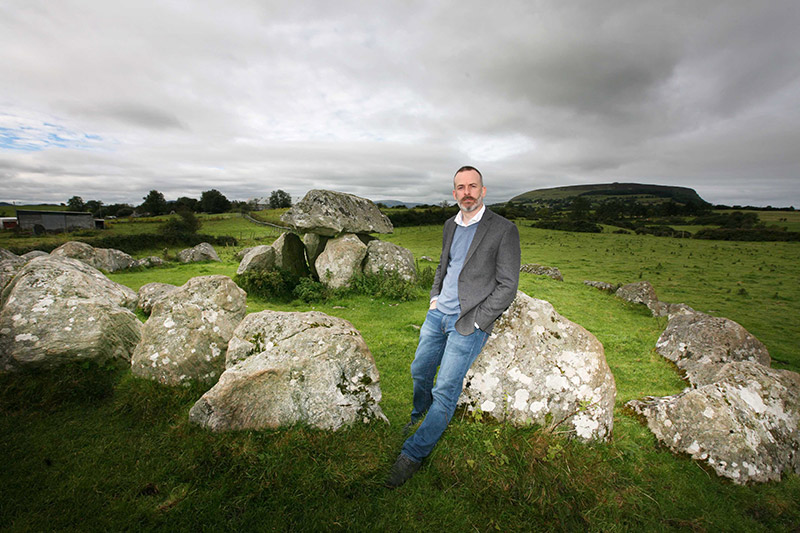
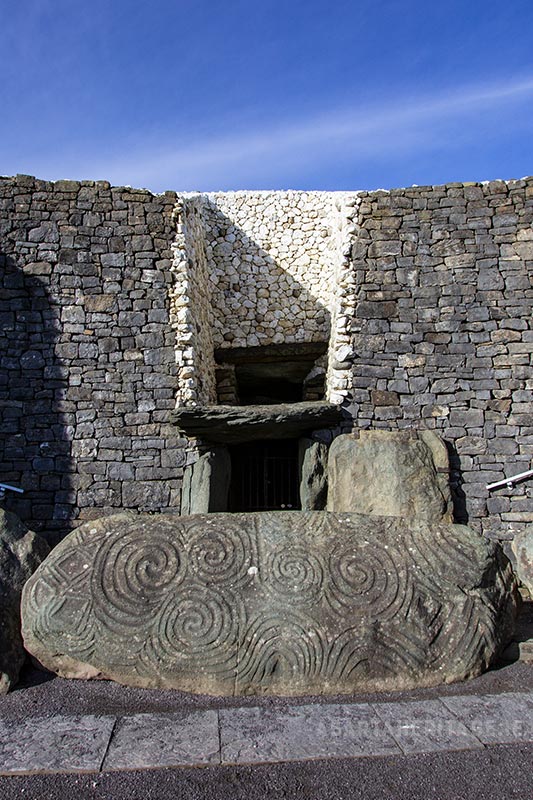



AMPLIFY ARCHAEOLOGY PODCAST
AMPLIFY ARCHAEOLOGY PODCAST
Title: Winter Solstice at Newgrange Podcast Miniseries Part 4
Duration: 38 mins.
Summary:
Dr. Robert Hensey joins us for Part 4 of our podcast miniseries on Newgrange and the Winter Solstice, to discuss motivations, beliefs, communication and time in Neolithic Ireland
First Light at Newgrange at the Winter Solstice Part 4 – Show Notes
- You can find Dr Robert Hensey’s author page here.
- Robert is the author of First Light: The Origins of Newgrange. A deeply thoughtful, but highly accessible, discussion on Newgrange and Ireland’s passage tomb tradition. I highly recommend it!
- Robert is also involved in Sligo Neolithic Landscapes a group that seeks to better understand and protect the remarkable Neolithic landscapes and monuments in County Sligo. I highly recommend giving them a follow on Twitter.
- You can hear Robert in a remarkable discussion on Carrowkeel in Episode 7 of Amplify Archaeology.
- Part 1 of our Newgrange and the Winter Solstice featured Professor Muiris O’Sullivan.
- Part 2 of our Newgrange and the Winter Solstice featured Dr. Jessica Smyth.
- Part 3 of our Newgrange and the Winter Solstice featured Clare Tuffy.
- Part 5 of our Newgrange and the Winter Solstice featured Professor Gabriel Cooney.
- The Winter Solstice at Newgrange is being livestreamed this year, you can watch it here.
- For details on the opening times and more information on the Visitor Centre at the Brú na Bóinne please see the OPW website.
Amplify Archaeology Podcast
This is the fourth part of a five episode miniseries focusing on Newgrange, the Winter Solstice and Neolithic Ireland. Please subscribe to Amplify Archaeology Podcast on your favourite platform to ensure you don’t miss a thing. If you leave us a review it can really help us to be found, so we’d be very grateful if you’d consider sharing the podcast.
Dig into more stories with Amplify Archaeology Podcast
The post First Light at Newgrange with Robert Hensey – Amplify Archaeology Podcast appeared first on Abarta Heritage Home.
Winter Solstice at Newgrange with Clare Tuffy – Amplify Archaeology Podcast
Winter Solstice at Newgrange
Clare Tuffy joins us for Part 3 of our miniseries on Newgrange and the Winter Solstice
Winter Solstice at Newgrange
Clare Tuffy joins us for Part 3 of our miniseries on Newgrange and the Winter Solstice
In Part 3 of our miniseries on Newgrange we meet Dr. Clare Tuffy who describes her 30 years at the Brú na Bóinne, and the experience of the Winter Solstice at Newgrange.
The great passage tomb of Newgrange in the Boyne Valley of County Meath, is one of Ireland’s most iconic monuments. Today it is a World Heritage Site, and (on a normal year) it is one of our most visited monuments, with people from all over the world travelling to see this marvel of Neolithic engineering and belief. As the Winter Solstice is upon us, Newgrange takes on even more meaning, as it is aligned with the midwinter solstice. On a clear dawn on the 20th, 21st and 22nd December, a beam of light from the rising sun travels up the passageway to illuminate the chamber. Each year people gather in great numbers around the monument to celebrate this phenomenon, and lucky lottery winners get the ultimate prize of being inside the chamber to witness it first hand. However, this year, if it shines the light will pass unseen by human eyes. The pandemic that has taken so much, has also meant that the gathering for 2020 has been cancelled.
I thought this would be a good opportunity to discuss Newgrange with some of the experts who know the site intimately. As a way of casting another kind of light on our iconic monument. This is the third episode of a miniseries focusing on Newgrange. In this edition Neil was joined by Dr. Clare Tuffy of the Office of Public Works. Clare has worked at Newgrange for over 30 years, and we discuss her incredible experience at the site and how Newgrange has changed over the years, what it’s like to manage a World Heritage Site, and the magic of the Winter Solstice at Newgrange.
AMPLIFY ARCHAEOLOGY PODCAST
AMPLIFY ARCHAEOLOGY PODCAST
Title: Winter Solstice at Newgrange Podcast Miniseries Part 3
Duration: 30 mins.
Summary:
Clare Tuffy of the OPW joins us for Part 3 of our podcast miniseries on Newgrange and the Winter Solstice, to discuss her 30 years experience at Newgrange and what it’s like, when the light first appears at the Winter Solstice
The Winter Solstice at Newgrange Part 3 – Show Notes
- The Winter Solstice at Newgrange is being livestreamed this year, you can watch it here.
- For details on the opening times and more information on the Visitor Centre at the Brú na Bóinne please see the OPW website.
- You can hear Part 1 with Professor Muiris O’Sullivan here.
- You can hear Part 2 with Dr. Jessica Smyth here.
- You can hear Part 4 with Dr. Robert Hensey here.
- You can hear Part 5 with Professor Gabriel Cooney here.
Amplify Archaeology Podcast
This is the third part of a five episode miniseries focusing on Newgrange, the Winter Solstice and Neolithic Ireland. Please subscribe to Amplify Archaeology Podcast on your favourite platform to ensure you don’t miss a thing. If you leave us a review it can really help us to be found, so we’d be very grateful if you’d consider sharing the podcast.
Dig into more stories with Amplify Archaeology Podcast
The post Winter Solstice at Newgrange with Clare Tuffy – Amplify Archaeology Podcast appeared first on Abarta Heritage Home.
Newgrange & Neolithic Ireland with Jessica Smyth – Amplify Archaeology Podcast
Newgrange and Neolithic Ireland
Dr. Jessica Smyth joins us for Part 2 of our miniseries on Newgrange and the Winter Solstice
Newgrange and Neolithic Ireland
Dr. Jessica Smyth joins us for Part 2 of our miniseries on Newgrange and the Winter Solstice
In Part 2 of our miniseries we’re joined by Dr. Jessica Smyth who casts more light on Newgrange and Neolithic Ireland
The great passage tomb of Newgrange in the Boyne Valley of County Meath, is one of Ireland’s most iconic monuments. Today it is a World Heritage Site, and (on a normal year) it is one of our most visited monuments, with people from all over the world travelling to see this marvel of Neolithic engineering and belief. As the Winter Solstice is upon us, Newgrange takes on even more meaning, as it is aligned with the midwinter solstice. On a clear dawn on the 20th, 21st and 22nd December, a beam of light from the rising sun travels up the passageway to illuminate the chamber. Each year people gather in great numbers around the monument to celebrate this phenomenon, and lucky lottery winners get the ultimate prize of being inside the chamber to witness it first hand. However, this year, if it shines the light will pass unseen by human eyes. The pandemic that has taken so much, has also meant that the gathering for 2020 has been cancelled.
I thought this would be a good opportunity to discuss Newgrange with some of the experts who know the site intimately, as a way of casting another kind of light on our iconic monument. This is the second episode of a miniseries focusing on Newgrange. In this edition I was joined by Dr Jessica Smyth of UCD School of Archaeology. We discussed Jessica’s exciting project Passage Tomb People, her first impressions of Newgrange and how that has changed over the years, daily life in Neolithic Ireland, prehistoric landscapes and the value of archives.
Given the restrictions we recorded the discussion over Zoom, so please forgive the audio quality if it is a bit off. This is the second part of a five part miniseries. But for now, join us, as we try to see the light at the end of the tunnel at Newgrange.



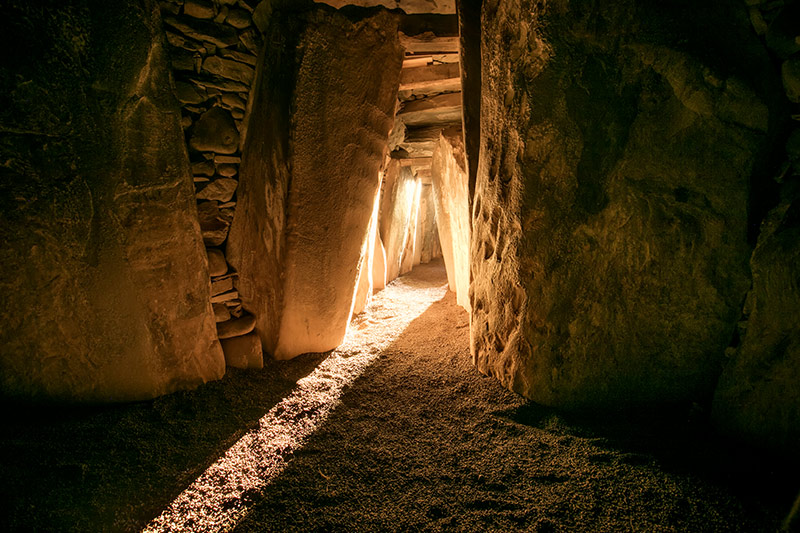
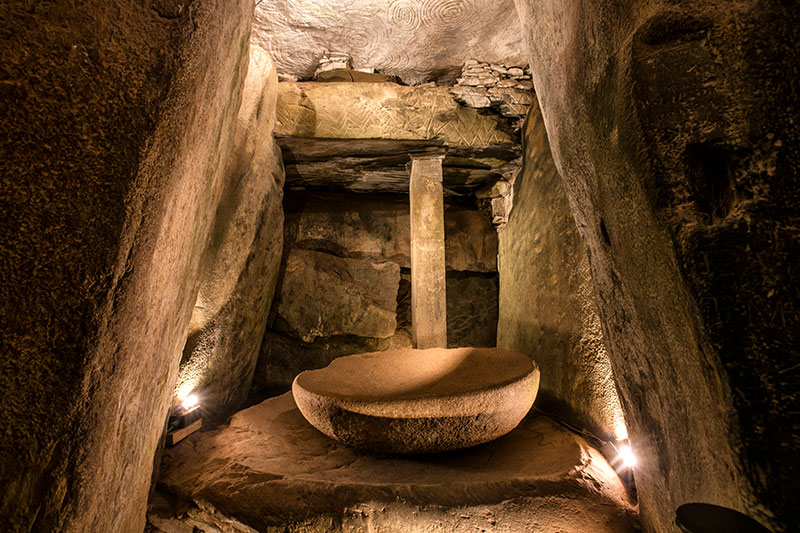
AMPLIFY ARCHAEOLOGY PODCAST
AMPLIFY ARCHAEOLOGY PODCAST
Title: Winter Solstice at Newgrange Podcast Miniseries Part 2
Duration: 28 mins.
Summary:
Dr. Jessica Smyth joins us for Part 2 of our podcast miniseries on Newgrange and the Winter Solstice, to discuss Newgrange and life in Neolithic Ireland
Neolithic Ireland, Newgrange and the Winter Solstice Part 2 – Show Notes
- The beautiful image of light entering the chamber and the large stone bowl in the gallery of this page is courtesy of Brian Morrison, Fáilte Ireland
- Don’t forget to catch the first episode of the Newgrange Winter Solstice series here.
- You can hear Part 3 of our Newgrange and the Winter Solstice Series with Clare Tuffy here.
- Part 4 of our Newgrange and the Winter Solstice Series featured Dr. Robert Hensey, and you can hear that here.
- Part 5 of our Newgrange series featured Professor Gabriel Cooney and you can hear that here.
- You can hear more from Jessica on the previous Amplify Archaeology episode on Passage Tombs here.
- You can find out more about Jessica’s fascinating project on the Passage Tomb People Website.
- The Winter Solstice at Newgrange is being livestreamed this year, you can watch it here.
- For details on the opening times and more information on the Visitor Centre at the Brú na Bóinne please see the OPW website.
Amplify Archaeology Podcast
This is the second part of a five episode miniseries focusing on Newgrange, the Winter Solstice and Neolithic Ireland. Please subscribe to Amplify Archaeology Podcast on your favourite platform to ensure you don’t miss a thing. If you leave us a review it can really help us to be found, so we’d be very grateful if you’d consider sharing the podcast.
Dig into more stories with Amplify Archaeology Podcast
The post Newgrange & Neolithic Ireland with Jessica Smyth – Amplify Archaeology Podcast appeared first on Abarta Heritage Home.
Newgrange Light at the End of the Tunnel with Muiris O Sullivan – Amplify Archaeology Podcast
From Darkness into Light – The Winter Solstice at Newgrange
Prof. Muiris O’Sullivan joins us for Part 1 of our miniseries on Newgrange and the Winter Solstice
From Darkness into Light – The Winter Solstice at Newgrange
Prof. Muiris O’Sullivan joins us for Part 1 of our miniseries on Newgrange and the Winter Solstice
In the first part of a miniseries focusing on the Winter Solstice at Newgrange, Neil is joined by Professor Muiris O’Sullivan, who discusses the landscapes of Neolithic Ireland, belief and meaning, art and darkness.
The great passage tomb of Newgrange in the Boyne Valley of County Meath, is one of Ireland’s most iconic monuments. Today it is a World Heritage Site, and (on a normal year) it is one of our most visited monuments, with people from all over the world travelling to see this marvel of Neolithic engineering and belief. As the Winter Solstice is upon us, Newgrange takes on even more meaning, as it is aligned with the mid-winter solstice. On a clear dawn on the 20th, 21st and 22nd December, a beam of light from the rising sun travels up the passageway to illuminate the chamber. Each year people gather in great numbers around the monument to celebrate this phenomenon, and lucky lottery winners get the ultimate prize of being inside the chamber to witness it first hand. However, this year, if it shines the light will pass unseen by human eyes. The pandemic that has taken so much, has also meant that the gathering for 2020 has been cancelled.
I thought this would be a good opportunity to discuss Newgrange with some of the experts who know the site intimately. As a way of casting another kind of light on our iconic monument. This is the first episode of a miniseries focusing on Newgrange. In this edition Neil was joined by Professor Muiris O’Sullivan, one of the legends of Irish archaeology. Muiris has spent a lifetime studying and writing about Irish archaeology. He has a particular interest in megalithic art, and in the podcast we discuss many aspects of Newgrange, the people who built it, and its meaning today. We also discuss Knockroe Passage Tomb in County Kilkenny, another monument that shares a mid-winter solstice alignment, and that Muiris excavated in the 1990s.
Given the restrictions we recorded the discussion over Zoom, so please forgive the audio quality if it is a bit off. I do hope you’ll stay with us as it’s a broad ranging discussion where we hear some fascinating personal reflections on megalithic tombs, darkness, art and meanings.
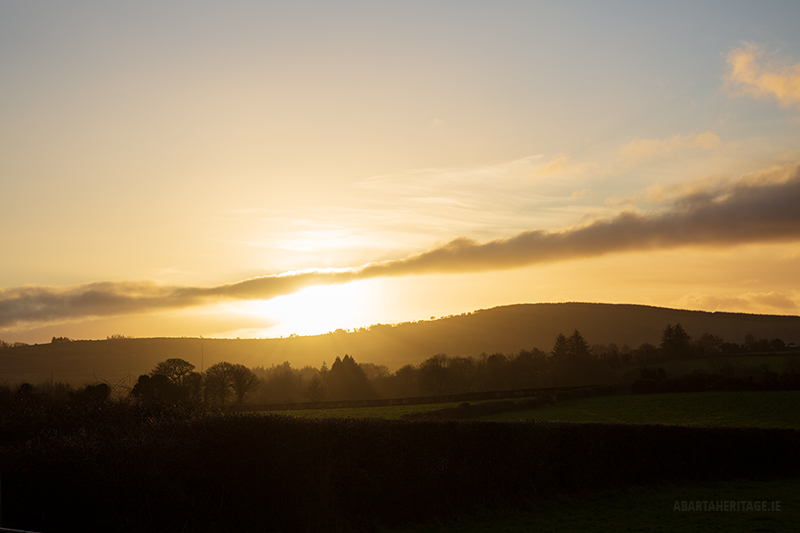
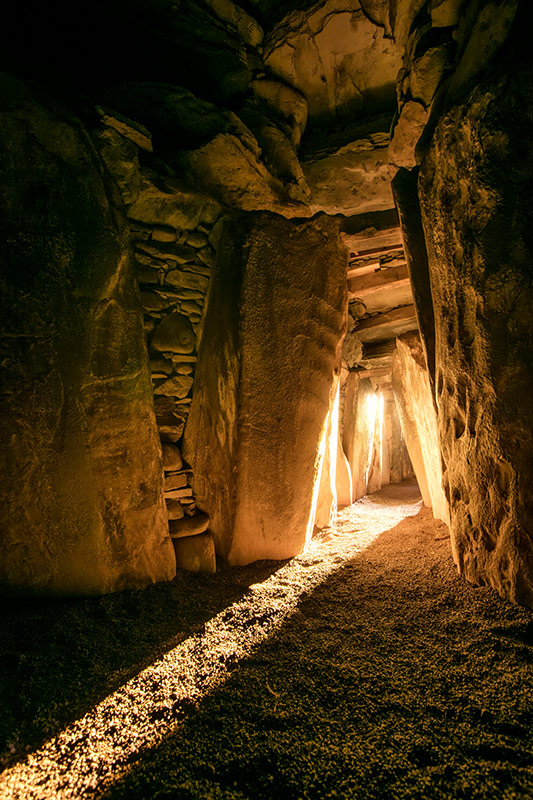

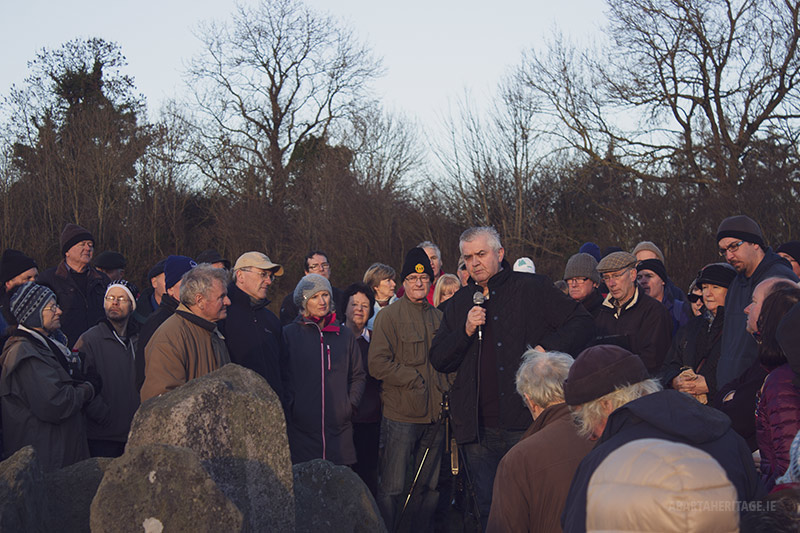
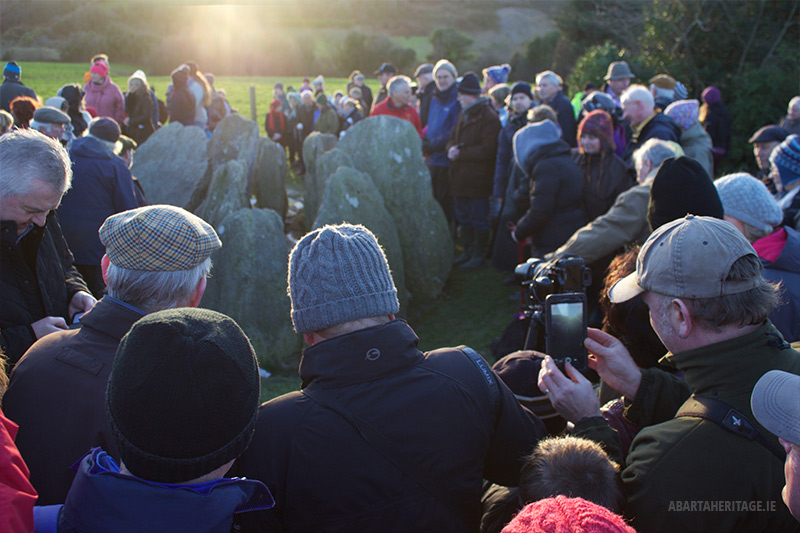
AMPLIFY ARCHAEOLOGY PODCAST
AMPLIFY ARCHAEOLOGY PODCAST
Title: Winter Solstice at Newgrange Podcast Miniseries Part 1
Duration: 45 mins.
Summary:
For the first part of our miniseries on the Winter Solstice at Newgrange, Prof. Muiris O’Sullivan joins us for a broad ranging discussion where we hear some fascinating personal reflections on megalithic tombs, darkness, art and meaning
Newgrange Winter Solstice Part 1 – Show Notes
- The beautiful image of light entering the chamber used as the header and in the gallery of this page is courtesy of Brian Morrison, Fáilte Ireland
- Professor Muiris O’Sullivan has written extensively on megalithic art, and a new publication is currently in the works. We’ll certainly share it here as soon as it is available so do check back soon!
- I highly recommend the excellent Wordwell Publication Antiquities of Rural Ireland for a wonderful overview of all periods of Irish archaeology.
- The Winter Solstice at Newgrange is being livestreamed this year, you can watch it here.
- For details on the opening times and more information on the Visitor Centre at the Brú na Bóinne please see the OPW website.
- Dr. Jessica Smyth features in Part 2 of our Newgrange and the Winter Solstice Series. You can hear that here.
- You can hear Part 3 of our Newgrange and the Winter Solstice Series with Clare Tuffy here.
- Part 4 of our Newgrange and the Winter Solstice Series featured Dr. Robert Hensey, and you can hear that here.
Amplify Archaeology Podcast
This is the first part of a five episode miniseries focusing on Newgrange, the Winter Solstice and Neolithic Ireland. Please subscribe to Amplify Archaeology Podcast on your favourite platform to ensure you don’t miss a thing. If you leave us a review it can really help us to be found, so we’d be very grateful if you’d consider sharing the podcast.
Dig into more stories with Amplify Archaeology Podcast
The post Newgrange Light at the End of the Tunnel with Muiris O Sullivan – Amplify Archaeology Podcast appeared first on Abarta Heritage Home.
National Museum of Ireland – Amplify Archaeology Podcast – Episode 14
The National Museum of Ireland
Maeve Sikora & Matt Seaver of the National Museum of Ireland join us for Amplify Archaeology Podcast Episode 14
The National Museum of Ireland
Maeve Sikora & Matt Seaver of the National Museum of Ireland join us for Amplify Archaeology Podcast Episode 14
In this episode of the Amplify Archaeology Podcast, Neil pays a visit to the National Museum of Ireland for a chat with the Keeper of Antiquities Maeve Sikora and Assistant Keeper Matt Seaver, to discuss the role of the museum and the new exhibition on Glendalough.
In this episode Neil visits the National Museum of Ireland for a conversation with the Keeper of Irish Antiquities Maeve Sikora and the Assistant Keeper of Irish Antiquities Matthew Seaver. We discuss the background to the National Museum, its role as a national institution and the key challenges that the museum faces. We examine some of the threats to our archaeological heritage, and find out what to do if you come across an archaeological object with a terrific example of what happened when a Donegal farmer discovered the gleam of gold while digging a drain. We also discuss the upcoming new exhibition on Glendalough, and the process of curation – how to choose what goes on display and what remains in storage. Thank you so much to Maeve and Matthew for these fantastic insights into one of Ireland’s most important cultural institutions.
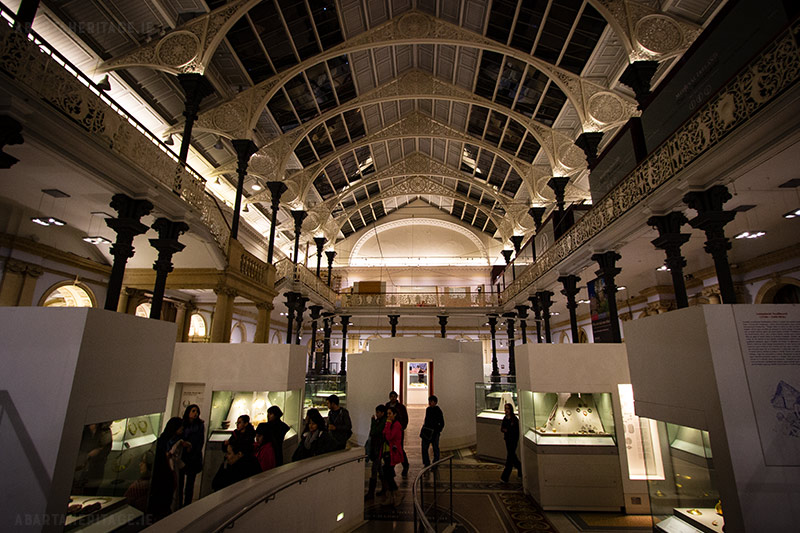
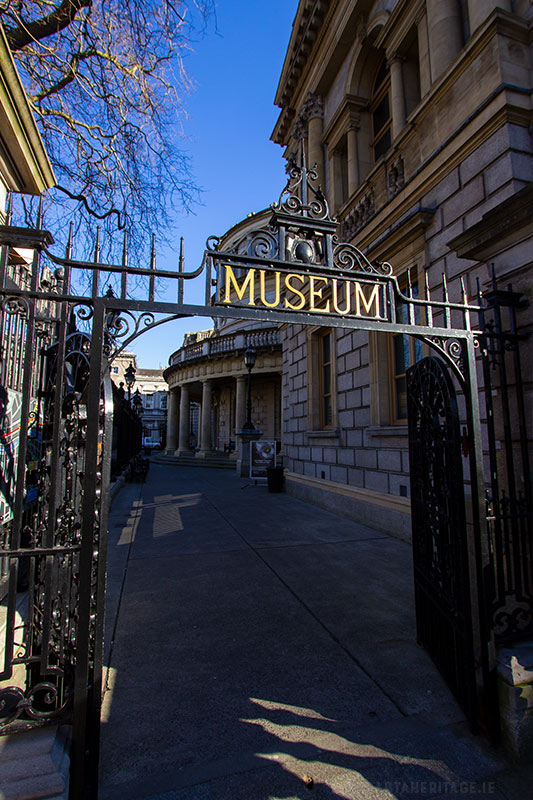
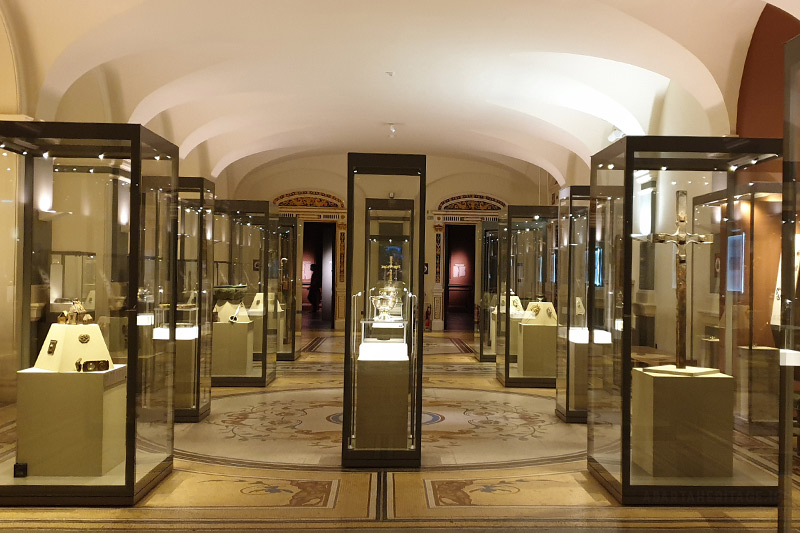
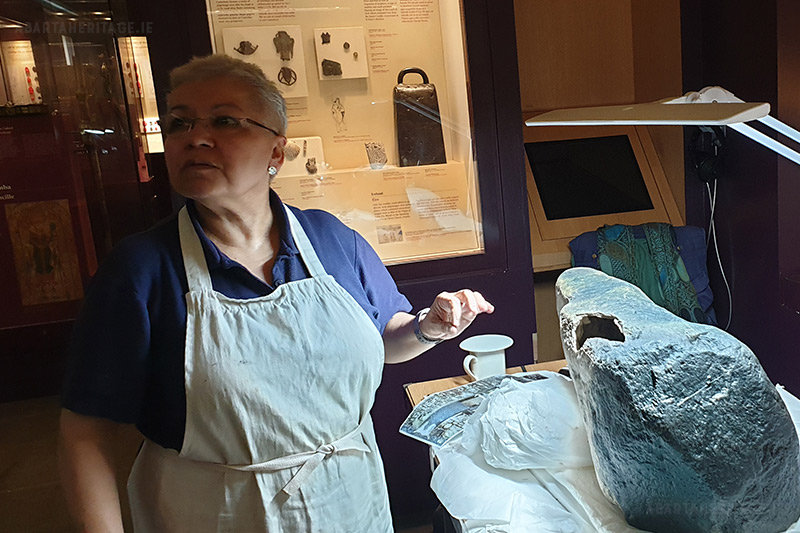
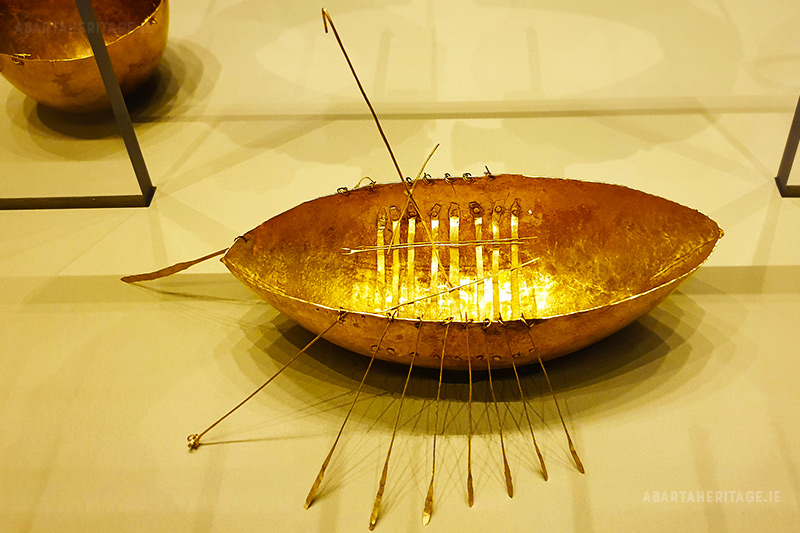
AMPLIFY ARCHAEOLOGY PODCAST
AMPLIFY ARCHAEOLOGY PODCAST
Title: The National Museum of Ireland
Duration: 46 mins.
Summary:
In this episode of Amplify Archaeology we take a trip to the National Museum of Ireland to hear about the Museum’s role in archaeology and the new exhibition on Glendalough
Episode 14 The National Museum of Ireland – Show Notes
- The National Museum of Ireland’s website can be found here.
- All branches of the National Museum of Ireland are free to enter. But with social distancing due to COVID-19 it is recommended to reserve your place ahead of visiting.
- For information and to book a ticket for the Archaeology branch on Kildare Street please see here.
- For information and to book a ticket for the Decorative Arts and History branch at Collins Barracks please see here.
- For information and to book a ticket for the Natural History Museum on Merrion Street please see here.
- For information and to book a ticket for the Museum of Country Life in Castlebar, County Mayo, please see here
- Information on the Law on Metal Detecting in Ireland can be found here.
- More information on metal detecting in Ireland can also be found in this handy pdf leaflet.
- The very first episode of Amplify Archaeology Podcast was recorded live from the trenches at Glendalough with Graeme, Conor and the excavation team. You can hear that here.
- You can now enjoy an interactive, virtual tour of the Treasury Exhibition and discover iconic objects like the Ardagh Chalice here.
- You can discover more information about the incredible Faddan More Psalter here.
Amplify Archaeology Podcast
During this podcast series we will meet some of Ireland’s archaeologists to discuss the key periods, places and people that tell the story of Ireland, and we’ll gain new insights into the practice and techniques of modern Irish archaeology. This is the seventh instalment of Amplify Archaeology, previous episodes have featured discussions on Ogham, Conflict Archaeology and Digital Heritage. We have also covered news from the trenches at excavations at Kilkenny Castle and the Rock of Cashel. And we’ve discussed Living History, the Beaker People, History of Food, Passage Tombs, Castles, Mesolithic Ireland and Glendalough.
I’d love some feedback, so please do leave a comment below – and if you have any questions about Irish archaeology please do let me know, we can try to answer them in forthcoming episodes. Finally if you enjoyed this podcast I’d be really grateful if you could leave us a review on iTunes, or please share it and tell your friends.
The podcast is an Abarta Heritage production. It was recorded in the National Museum of Ireland in Kildare Street with Neil Jackman (the interviewer) Maeve Sikora and Matthew Seaver. We are so grateful to Maeve and Matt for their generosity and insights.
Dig into more stories with Amplify Archaeology Podcast
The post National Museum of Ireland – Amplify Archaeology Podcast – Episode 14 appeared first on Abarta Heritage Home.
Ogham – Amplify Archaeology Podcast – Episode 13
Ogham Stones
Dig into the Story of Ogham Stones in Amplify Archaeology Podcast Episode 13 with Dr. Nora White
Ogham Stones
Dig into the Story of Ogham Stones in Amplify Archaeology Podcast Episode 13 with Dr. Nora White
Ogham Stones are some of the most iconic aspects of Irish archaeology, but how much do we know about ogham? In this episode Neil is joined by Dr. Nora White to decipher the story!
Ogham stones are some of the most iconic symbols of Ireland’s heritage. The stones bear inscriptions in the Irish Ogham alphabet, using a system of notches and horizontal or diagonal lines/scores to represent the sounds of an early form of the Irish language. The stones are often inscribed with the names of prominent people and sometimes tribal affiliation or geographical areas. These inscriptions constitute the earliest recorded form of Irish and, as our earliest written records dating back at least as far as the 5th century AD, are a significant resource for historians, as well as linguists and archaeologists.
In some ways, ogham is one of the more familiar features of our past – you can see it incorporated into modern artworks, tattoos, keepsakes and even a new ogham trail in County Wicklow – but what are the origins of ogham, where did it first appear and why is it more prevalent in some counties than others?
In this episode of the Amplify Archaeology Podcast, Neil had the opportunity to chat with Dr. Nora White about ogham and its origins. Dr Nora White is the Principal Investigator on the Ogham in 3D Project, a wonderful resource that seeks to catalogue, digitise and record as many as possible of the approximately four hundred surviving Ogham stones and to make the resulting 3D models freely accessible as part of a multi-disciplinary archive. Dr. White is also a researcher on the ChronHib Project in the Department of Early Irish at Maynooth University, as well as being a Heritage in Schools Panelist where she helps to engage pupils with the story of ogham.
A fair warning – there are gunshots going off randomly nearby during the discussion so brace your ears, archaeology is a dangerous job!
Also please note – I’m only joking Kilkenny, you’re one of my favourite counties.
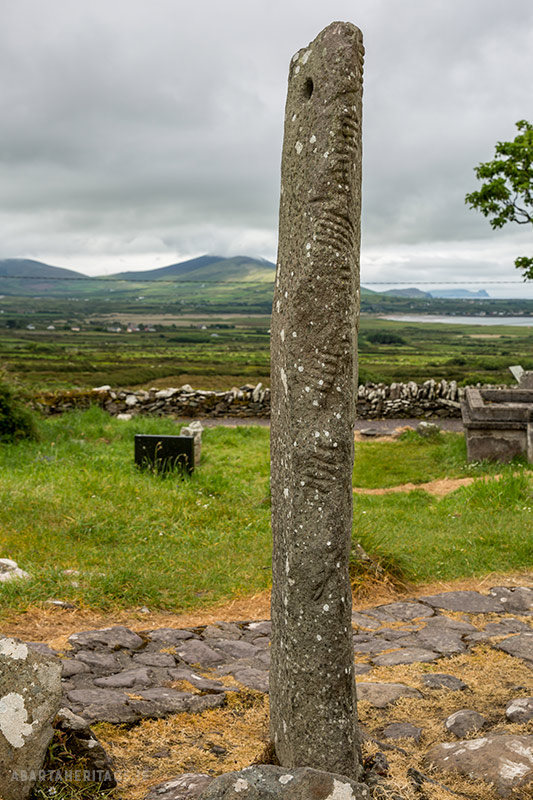

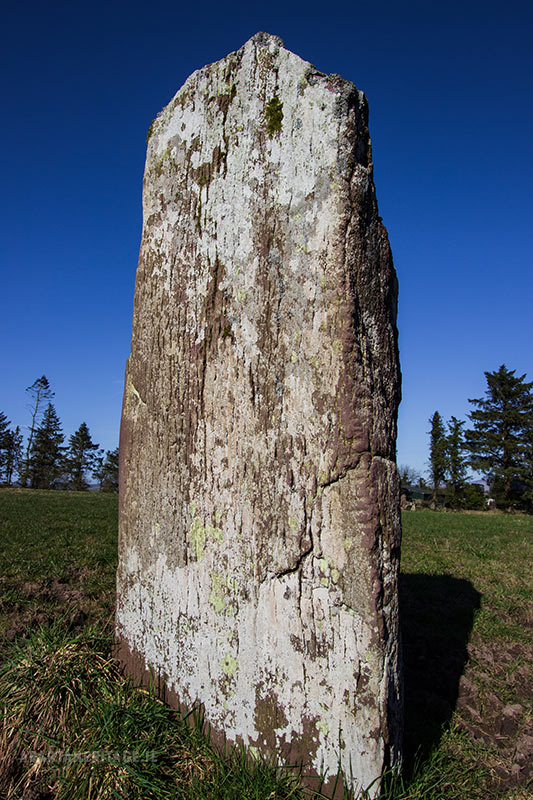

AMPLIFY ARCHAEOLOGY PODCAST
AMPLIFY ARCHAEOLOGY PODCAST
Title: Ogham Stones
Duration: 32 mins.
Summary:
In this episode Neil was joined by Dr. Nora White who helps us to understand Ireland’s iconic ogham stones
Episode 13 Ogham Stones with Dr Nora White – Show Notes
- You can find more on the Ogham in 3D Project on their website.
- You can also find the Ogham alphabet on there too.
- As Nora says, the Dingle Peninsula has a wealth of ogham stones. One of the best places to learn about them is in the Musaem Chorca Dhuibhne (West Kerry Museum).
- UCC has a remarkable collection of ogham stones, mainly accumulated by antiquarian collectors in the 19th century. You can find them in the aptly-named Stone Corridor.
- You can find out more about Knockboy Church and the communities efforts to conserve this fascinating site here.
Amplify Archaeology Podcast
During this podcast series we will meet some of Ireland’s archaeologists to discuss the key periods, places and people that tell the story of Ireland, and we’ll gain new insights into the practice and techniques of modern Irish archaeology. This is the thirteenth instalment of Amplify Archaeology, previous episodes have featured discussions on excavations at Kilkenny Castle and the Rock of Cashel, Living History, the Beaker People, History of Food, Passage Tombs, Castles, Mesolithic Ireland and Glendalough.
I’d love some feedback, so please do leave a comment below – and if you have any questions about Irish archaeology please do let me know, we can try to answer them in forthcoming episodes. Finally if you enjoyed this podcast I’d be really grateful if you could leave us a review on iTunes, or please share it and tell your friends.
The podcast is an Abarta Heritage production. It was recorded in the shadow of the high crosses at Ahenny on the Kilkenny/Tipperary border with Neil Jackman (the interviewer) and Dr. Nora White. We are so grateful to Nora for her generosity and insights. The audio was edited with the assistance of Declan Lonergan of Bluebird Studios, County Kildare.
Dig into more stories with Amplify Archaeology Podcast
The post Ogham – Amplify Archaeology Podcast – Episode 13 appeared first on Abarta Heritage Home.
Amplify Archaeology Podcast – Episode 12 – Conflict Archaeology
Battlefield & Conflict Archaeology
Hear about Ireland’s conflict archaeology in Episode 12 of Amplify Archaeology Podcast with Dr. Damian Shiels
Battlefield & Conflict Archaeology
Hear about Ireland’s conflict archaeology in Episode 12 of Amplify Archaeology Podcast with Dr. Damian Shiels
In this episode of the Amplify Archaeology Podcast, Neil was joined by Dr. Damian Shiels to discuss the importance and vulnerability of Ireland’s battlefield and conflict archaeology sites.
The story of Ireland is sadly often punctuated with violence. From medieval warfare to the twentieth century struggle for Independence, battles have shaped the country that we know today. But despite their significance, many of Ireland’s battlefields remain little understood and protected, and some face existential threats.
Battles such as Clontarf (1014), Kinsale (1601), the Boyne (1690), Aughrim (1691), Vinegar Hill (1798) and the Easter Rising (1916), have been crucial turning points in Irish history. But how much do we know about the physical locations where these conflicts took place? How can we understand the landscapes of conflict? And why are these places, so critical to the shaping of the nation, at real risk of being lost or destroyed? In this episode of the Amplify Archaeology Podcast we hear from Dr. Damian Shiels who discusses some of these important issues. Damian is an archaeologist and historian with a particular interest in conflict archaeology and the story of the Irish diaspora. Damian is also the author of the fantastic Irish in the American Civil War Website and the Forgotten Irish Podcast.
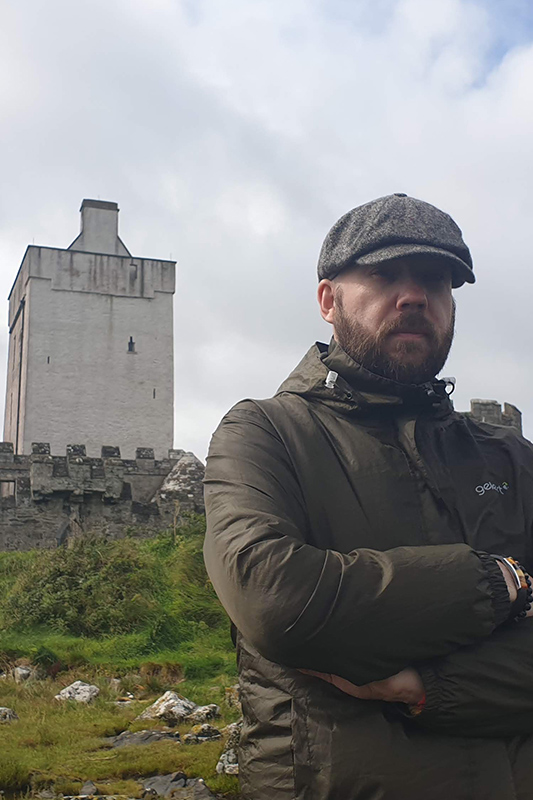
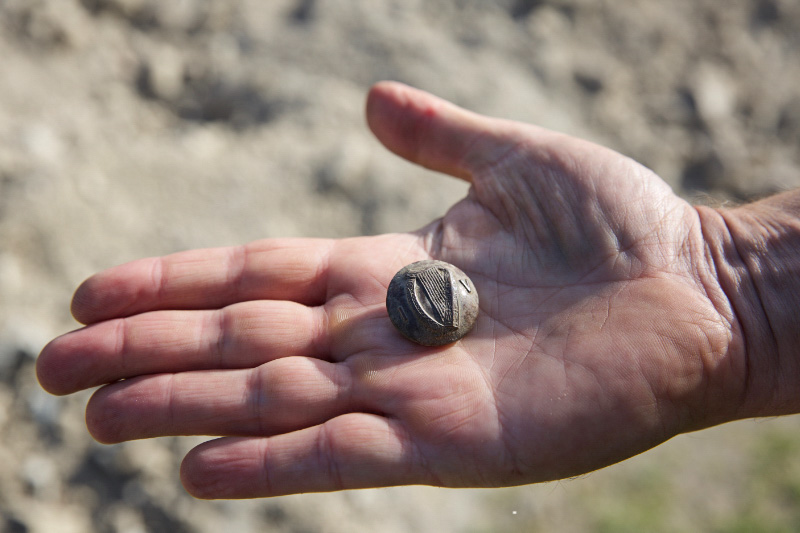
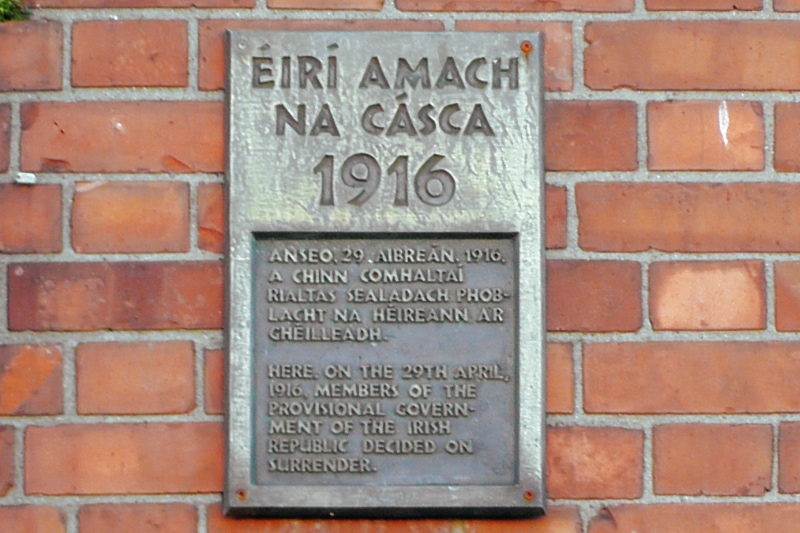
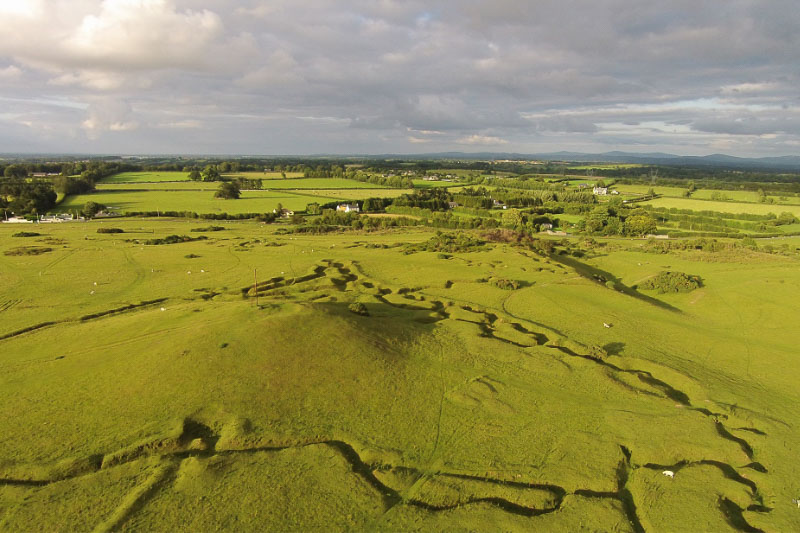
AMPLIFY ARCHAEOLOGY PODCAST
AMPLIFY ARCHAEOLOGY PODCAST
Title: Battlefield & Conflict Archaeology
Duration: 47 mins.
Summary:
In this episode of the Amplify Archaeology Podcast, Neil was joined by Dr. Damian Shiels to discuss the importance and vulnerability of Ireland’s battlefield and conflict archaeology sites.
Amplify Archaeology Podcast Episode 12 Conflict Archaeology – Show Notes
- Damian’s fantastic resource on the story of the Irish in the American Civil War can be explored here and do check out his excellent podcast The Forgotten Irish.
- For information on the Law on Metal Detecting in Ireland please see here.
- Damian’s Landscapes of Revolution website is well worth exploring. You can find it here.
- The Longest Day at Vinegar Hill Project was carried out to understand the archaeology of one of the most important battles of the 1798 Rebellion. The project was a partnership between Damian Shiels (then of Rubicon Heritage), Dr. James Bonsall of Sligo IT, Earthsound Geophysics and Cotswold Archaeology with the support of Wexford County Council. You can find Damian’s lecture on the project on YouTube.
- The Archaeology of 1916 Project was undertaken between Dublin City Council, UCD School of Archaeology and Archaeology and Built Heritage and examined the landscape of the 1916 Rising throughout the contemporary city. You can find more information on the project on their website here.
- There’s a really interesting study on the conflict archaeology of the Irish Civil War in Wexford by Catherine McLoughlin of Stafford McLoughlin Archaeology and Colm Moriarty of IrishArchaeology.ie and supported by Wexford County Council. For more information please see the project website here.
- You can read our Tuatha article on Vinegar Hill here.
- You can find out more on the Defence of Britain Project please see here.
- A description of the Home Front Legacy Project can be found here.
- For visitor information for the Battle of Aughrim Visitor Centre please visit here.
- For visitor information for the Battle of the Boyne Visitor Centre please visit here.
- Athlone Castle have a fantastic exhibition on the story of the sieges there. For information please see here.
- Information on the Soldiers and Chiefs Exhibition at the National Museum of Ireland, Collins Barracks can be found here.
- Members of Tuatha can watch Damien Shiels give a virtual tour of Vinegar Hill and have access to a recording of his Tuatha Talk webinar on the Irish in the American Civil War. Find out more about becoming a member on tuatha.ie.
Amplify Archaeology Podcast
During this podcast series we will meet some of Ireland’s archaeologists to discuss the key periods, places and people that tell the story of Ireland, and we’ll gain new insights into the practice and techniques of modern Irish archaeology. This is the twelfth instalment of Amplify Archaeology, previous episodes have featured discussions on Digital Archaeology, the excavations at Kilkenny Castle and the Rock of Cashel, Living History, the Beaker People, History of Food, Passage Tombs, Castles, Mesolithic Ireland and Glendalough.
I’d love some feedback, so please do leave a comment below – and if you have any questions about Irish archaeology please do let me know, we can try to answer them in forthcoming episodes. Finally if you enjoyed this podcast I’d be really grateful if you could leave us a review, or even better still please share it and tell your friends.
The podcast is an Abarta Heritage production. It was recorded in our offices in Clonmel, County Tipperary with Neil Jackman (the interviewer) and Dr. Damian Shiels. We are really grateful to Damian for his generosity with his time and insights.
Dig into more stories with Amplify Archaeology Podcast
The post Amplify Archaeology Podcast – Episode 12 – Conflict Archaeology appeared first on Abarta Heritage Home.
Amplify Archaeology Podcast – Episode 11 – Digital Heritage and Sheela na Gig 3D
Digital Heritage and the Sheela na Gig 3D Project
Dig into the Story of Ireland’s iconic Sheela na Gig sculptures and Digital Heritage in Episode 11
Digital Heritage and the Sheela na Gig 3D Project
Dig into the Story of Ireland’s iconic Sheela na Gig sculptures and Digital Heritage in Episode 11
Discover how new techniques in digital heritage recording are helping us to better understand and catalogue Ireland’s iconic sheela na gig sculptures in Episode 11 of the Amplify Archaeology Podcast.
New techniques in digital heritage recording are helping us to gain new insights into archaeological sites, features and artefacts. Digital Heritage is the process of digitally documenting heritage and culture. It focuses on finding the best best method of digitally recording a heritage site or artefact while presenting it to the public in an accessible way. In this episode of the Amplify Archaeology Podcast, Neil had the opportunity to chat with Orla-Peach Power and Gary Dempsey of Digital Heritage Age who are helping to pioneer these new methods in Ireland. Digital Heritage Age are a network of digital heritage professionals engaged in the promotion of digitising cultural heritage in Ireland. They seek to promote best practice in digital heritage projects and build links between professionals and local heritage groups, communities and societies.
Digital Heritage Age are inspired by the Irish word for a work team, gang, or party, ‘meitheal’, and their work helps to develop a platform for cooperation between groups and individuals sharing a common cause. Digital Heritage Age also strive to nurture a local ‘sense of place’ and ownership in local heritage, by engaging with local sites and artefacts and by helping to empower communities by giving them the skills and confidence to record their local heritage. The flagship project of Digital Heritage Age is the The Digital County Initiative a coming together of communities, to share workloads and skills for digital heritage. This project aims to create a locally curated ‘digital museum’ for every county in Ireland. The project aims to train both professionals and heritage communities with the skills to develop their own digital heritage projects.
In this episode Orla-Peach and Gary discuss the benefits and challenges of Digital Heritage and their work. We also chat about Ireland’s enigmatic Sheela na Gig and try to cast light on what they might mean and how attitudes to them have changed over time. With their values on community engagement and making heritage accessible to all, Gary and Orla-Peach are such an inspiration for us and it was terrific to get the opportunity to chat with them.
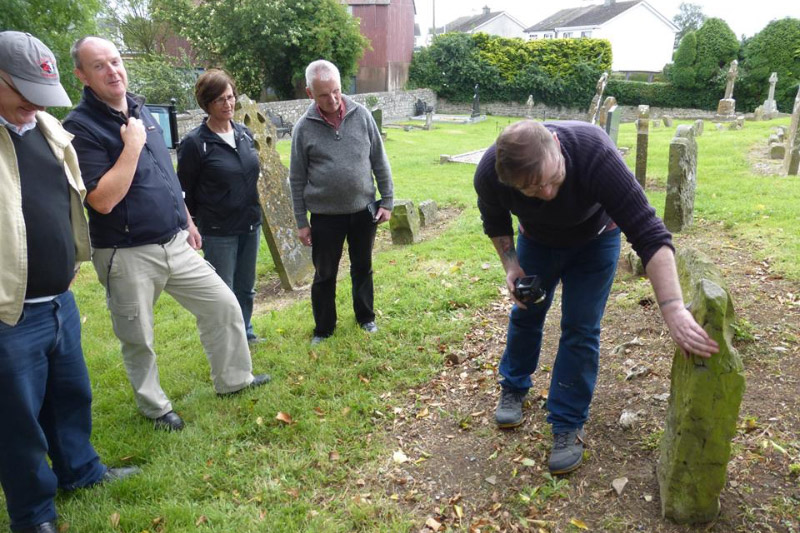
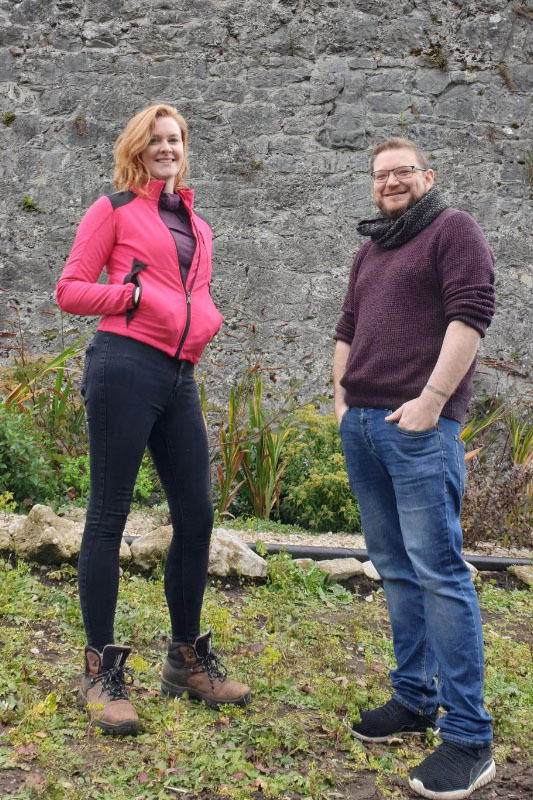
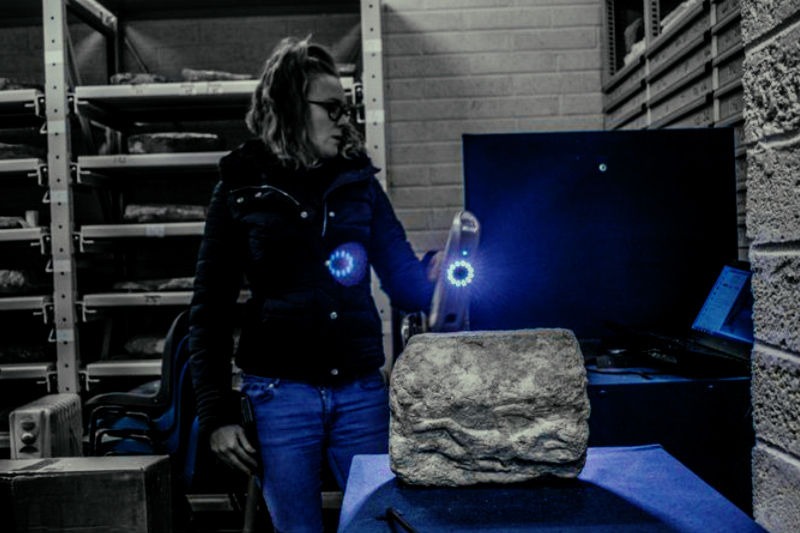

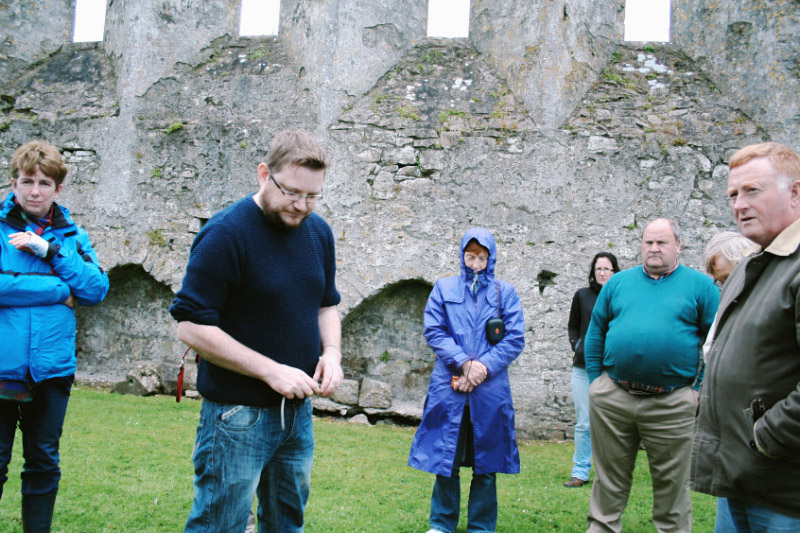
…’We look up to her,
her ring-fort eyes,
her little slippy shoulders,her nose incised and flat,
and feel light-headed in looking up.
She is twig-boned, saddle-sexed,grown-up, grown ordinary,
seeming to say,
‘Yes, look at me to your heart’s content
but look at every other thing.’
AMPLIFY ARCHAEOLOGY PODCAST
AMPLIFY ARCHAEOLOGY PODCAST
Title: Digital Heritage & the Sheela na Gig 3D Project
Duration: 53 mins.
Summary:
Discover how new techniques in digital heritage recording are helping us to better understand iconic features like Ireland’s sheela na gig sculptures in this chat with Orla-Peach Power & Gary Dempsey.
Episode 11 Digital Heritage and the Sheela na Gig 3D Project – Show Notes
- You can find more on Digital Heritage Age on their website.
- You can also discover a number of their models on Sketchfab.
- The full collection of the Sheela na Gig Project models can be explored here.
- Orla-Peach’s favourite recording – the beautiful 3D model of the Clonfert Madonna can be found here.
- Gary’s favourite recording – the tomb of Phelim O’Connor in Roscommon Abbey can be found here.
- You can also find more information and models of the Rathcroghan Project here.
- The Discovery Programme also have a remarkable collection of 3D digital models that you can explore here.
- The fantastic Ogham in 3D project website is here.
- A blog that details the remarkable excavations at Must Farm in the UK have a great blogpost on photogrammetry here.
Amplify Archaeology Podcast
During this podcast series we will meet some of Ireland’s archaeologists to discuss the key periods, places and people that tell the story of Ireland, and we’ll gain new insights into the practice and techniques of modern Irish archaeology. This is the eleventh instalment of Amplify Archaeology, previous episodes have featured discussions on excavations at Kilkenny Castle and the Rock of Cashel, Living History, the Beaker People, History of Food, Passage Tombs, Castles, Mesolithic Ireland and Glendalough.
I’d love some feedback, so please do leave a comment below – and if you have any questions about Irish archaeology please do let me know, we can try to answer them in forthcoming episodes. Finally if you enjoyed this podcast I’d be really grateful if you could leave us a review on Apple Podcasts, or please share it and tell your friends.
The podcast is an Abarta Heritage production. It was recorded in the shadow of a Sheela na Gig in Fethard County Tipperary with Neil Jackman (the interviewer) Orla-Peach Power and Gary Dempsey. We are really grateful to Orla-Peach and Gary for their generosity and insights. The audio was edited with the assistance of Declan Lonergan of Bluebird Studios, County Kildare.
Dig into more stories with Amplify Archaeology Podcast
The post Amplify Archaeology Podcast – Episode 11 – Digital Heritage and Sheela na Gig 3D appeared first on Abarta Heritage Home.
Amplify Archaeology Podcast – Episode 10 – The Lost Wing of Kilkenny Castle
Finding the Lost Wing of Kilkenny Castle
We join Cóilín Ó Drisceoil at Kilkenny Castle for a trench-side chat in Amplify Archaeology Podcast Episode 10
Finding the Lost Wing of Kilkenny Castle
We join Cóilín Ó Drisceoil at Kilkenny Castle for a trench-side chat in Amplify Archaeology Podcast Episode 10
Kilkenny Castle is one of our most visited monuments, and an iconic landmark in the city. But did you know that the shape of the castle was forever altered in the 19th century, when a whole wing was demolished? A new excavation by Cóilín Ó Drisceoil of Kilkenny Archaeology seeks to find and expose the missing wing of the castle. So we just had to go along to join Cóilín and his team for a trench-side chat.
Kilkenny Castle is surely one of the most familiar heritage sites in Ireland. The castle is visited by hundreds of thousands of tourists every year, who enjoy the beautiful parklands and the grandeur of this former home of the Butler family. However, the castle that we know so well today is largely the result of centuries of development and renovation as each generation sought to tailor Kilkenny Castle to suit their needs.
The story of Kilkenny Castle is thought to begin with a motte and bailey constructed by Strongbow (Richard de Clare, Lord of Pembroke, one of the leaders of the Normans when they first arrived in Ireland). A motte and bailey was a typical fortification in the early phases of the Norman arrival in Ireland, typically consisting of an earthen mound topped with a wooden tower (if you’re interested in castle development in Ireland you might enjoy our episode on Irish Castles with Professor Tadhg O’Keeffe). Later, William Marshal began the construction of a mighty four sided fortress, and it is this castle that forms the core of the building that we know today – with one key exception – today Kilkenny Castle only has three sides, so what happened to the fourth wing?
An exciting excavation led by Cóilín Ó Drisceoil, and his team from Kilkenny Archaeology, has uncovered the fourth wing of the castle allowing us new glimpses into the story of this iconic site. As well as a better understanding of the construction of the castle, Cóilín and his team have discovered wonderful range of artefacts, including medieval pottery and a medieval harp tuning peg. The story of conflict at the castle has also been revealed with a number of musket balls associated with Cromwell’s siege of the castle in 1650.
In this edition of the Amplify Archaeology Podcast Neil visited the excavations to have a trench-side chat with Cóilín, who told us all about the remarkable history of Kilkenny Castle and the new discoveries made during the dig.
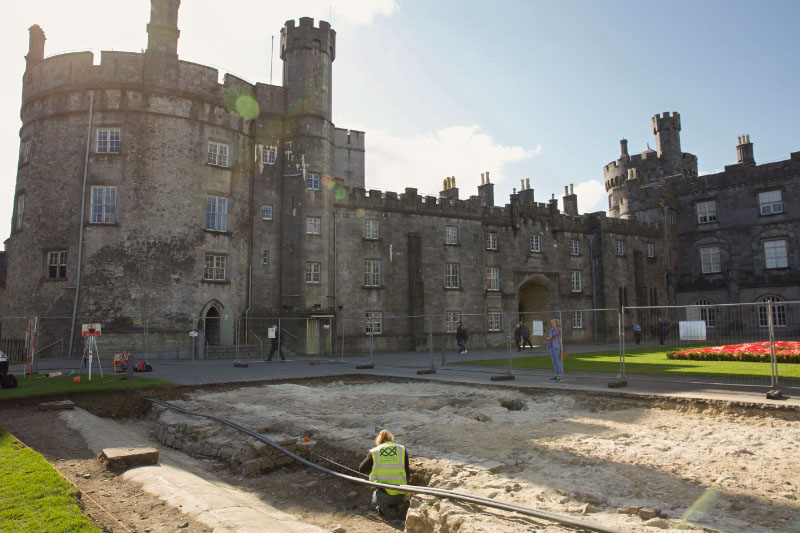
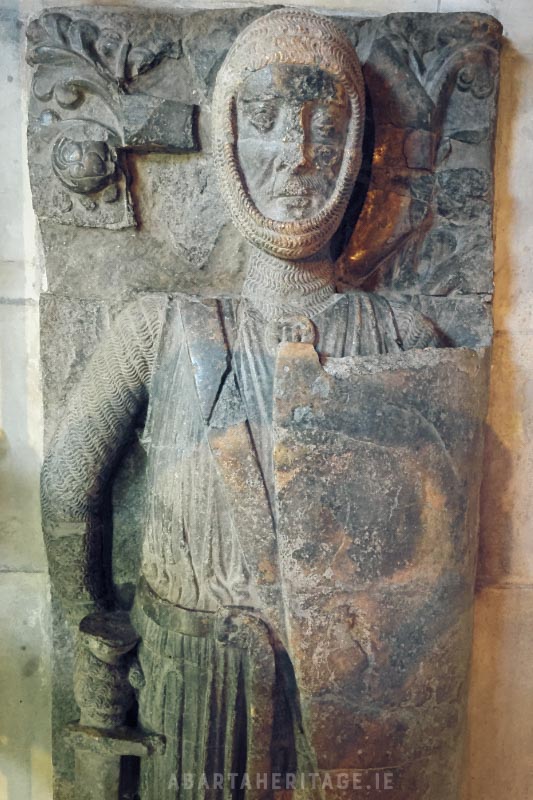
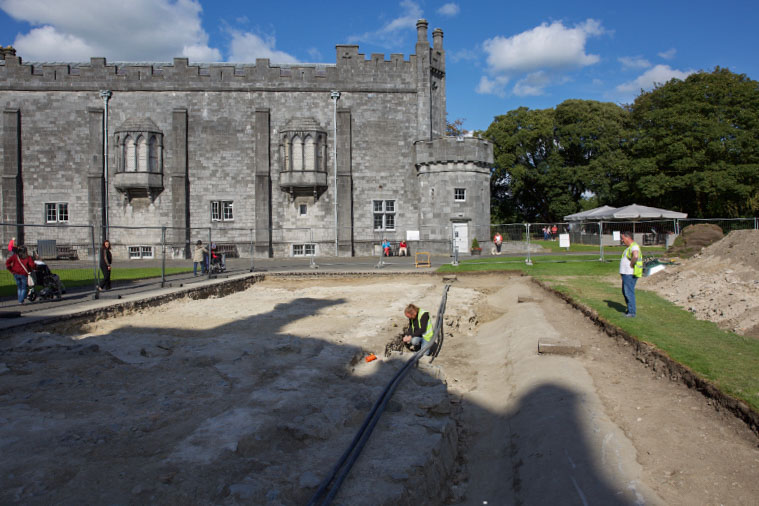
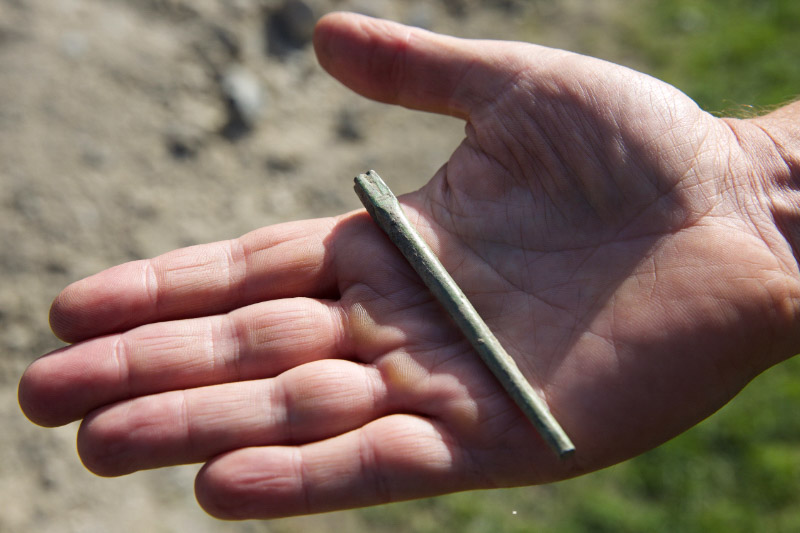

AMPLIFY ARCHAEOLOGY PODCAST
AMPLIFY ARCHAEOLOGY PODCAST
Title: The Lost Wing of Kilkenny Castle
Duration: 29 mins.
Summary:
In this episode of the Amplify Archaeology podcast we join Cóilín Ó Drisceoil for a trench-side chat at his exciting excavation at Kilkenny Castle
Episode 10 – The Lost Wing of Kilkenny Castle – Show Notes
- For more information and great images from the excavation please visit the Kilkenny Archaeology Facebook Page.
- You can also find more information on Kilkenny Archaeology on their website.
- For a discussion on the origins and development of castles in Ireland, please see the Castles episode of Amplify Archaeology.
- William Marshal (c.1146–1219) is one of the most significant figures in Irish (and British) history. Cóilín, along with Michael Potterton and the late John Bradley edited a superb volume on William Marshal and Ireland. Available from Four Courts Press.
- The excavations are now completed, but if you’d like to visit Kilkenny Castle you can find information on opening times and entry fees on the Office of Public Works Website.
- You can also find an overview of its history and how to visit in our article on Tuatha.ie here.
- The castle also features in Neil’s guidebook to Ireland’s Ancient East, along with 99 other wonderful heritage sites to explore. Available with free shipping from Kenny’s Bookshop.
Amplify Archaeology Podcast
During this podcast series we will meet some of Ireland’s archaeologists to discuss the key periods, places and people that tell the story of Ireland, and we’ll gain new insights into the practice and techniques of modern Irish archaeology. This is the tenth instalment of Amplify Archaeology, previous episodes have featured discussions on Living History, excavations at the Rock of Cashel, the Beaker People, History of Food, Passage Tombs, Castles, Mesolithic Ireland and Glendalough.
I’d love some feedback, so please do leave a comment below – and if you have any questions about Irish archaeology please do let me know, we can try to answer them in forthcoming episodes. Finally if you enjoyed this podcast I’d be really grateful if you could leave us a review on iTunes, or please share it and tell your friends.
The podcast is an Abarta Heritage production. It was recorded on site at Kilkenny Castle, with Neil Jackman (the interviewer), with Cóilín Ó Drisceoil and Kilkenny Archaeology. We are so grateful to Cóilín for his generosity with his time and insights during a busy dig.
Dig into more stories with Amplify Archaeology Podcast
The post Amplify Archaeology Podcast – Episode 10 – The Lost Wing of Kilkenny Castle appeared first on Abarta Heritage Home.
Amplify Archaeology Podcast – Episode 9 – Living in the Past
Living History
Amplify Archaeology Podcast Episode 9 with Déise Medieval
Living History
Amplify Archaeology Podcast Episode 9 with Déise Medieval
During the Woodstown Viking Festival Day in Heritage Week, 2019, Neil had the opportunity to chat with a number of Living History re-enactors. In this podcast we learn about their motivations, and how they communicate the story of the past through lived experience.
Historical re-enactments and living history are a popular way for engaging the public with the story of past cultures. Whether it is demonstrations of battles and warfare, food, costume or crafts, the process of living history can allow people to gain a real and tangible sense of what life was like in the past. Ireland is fortunate to have a number of living history societies and organisations. One of the largest, Déise Medieval, were integral to the Viking Heritage Day Heritage Week event at Woodstown, on the outskirts of Waterford City. We took the opportunity to chat with some of the re-enactors to discover how they got involved in living history and how it has shaped their view of the past.
In this edition of the Amplify Archaeology Podcast Neil was joined by Denise Colbert (Déise Medieval), Jessica de Burca (Montague Heritage Services), Dolores Kearney (UCD School of Archaeology), Kate Gwilliam (Vikings UK), Paul Kavanagh (Leix Vikings), Ayanna Raiha, Maria Kraing, Clare Horgan (Déise Medieval). Thank you so much to everyone who took the time to speak with me on a very busy day!
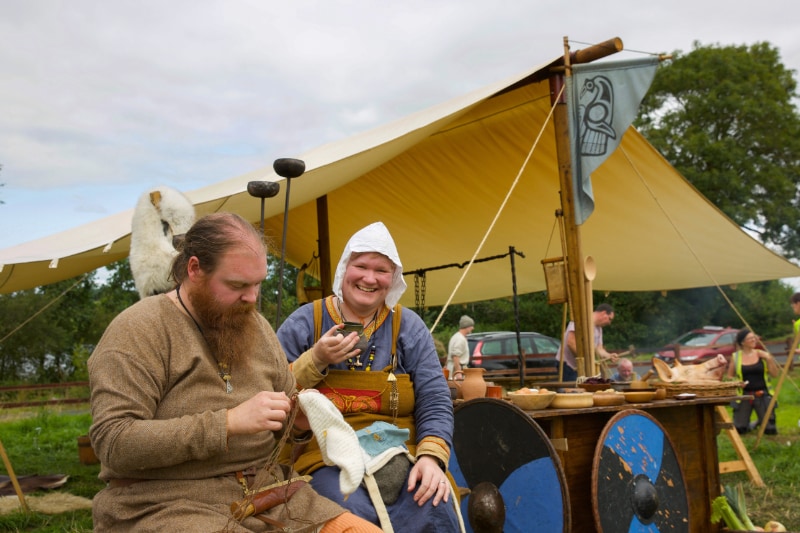
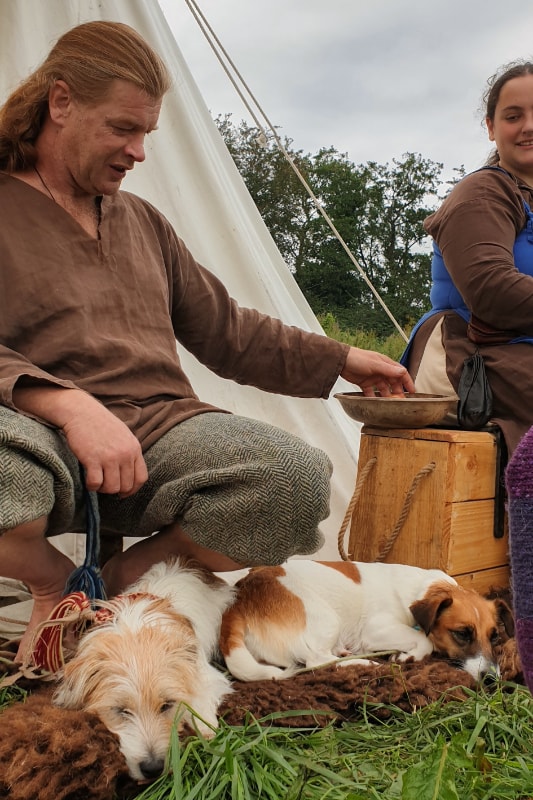
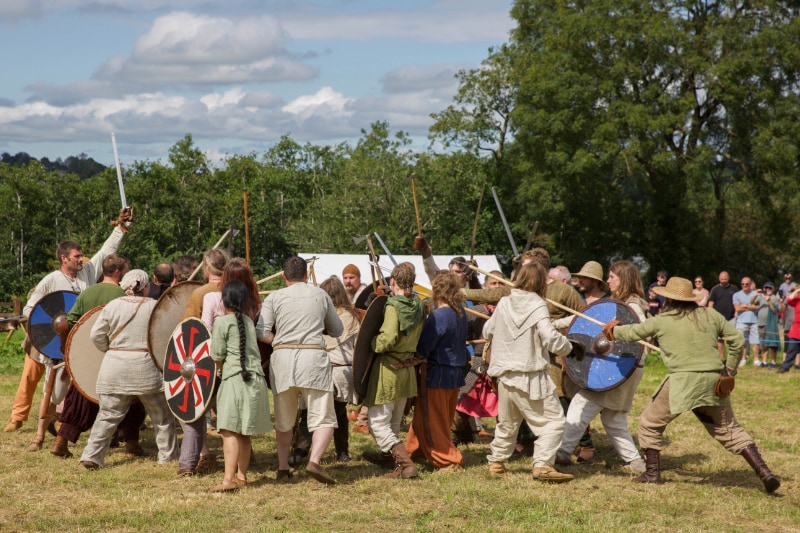

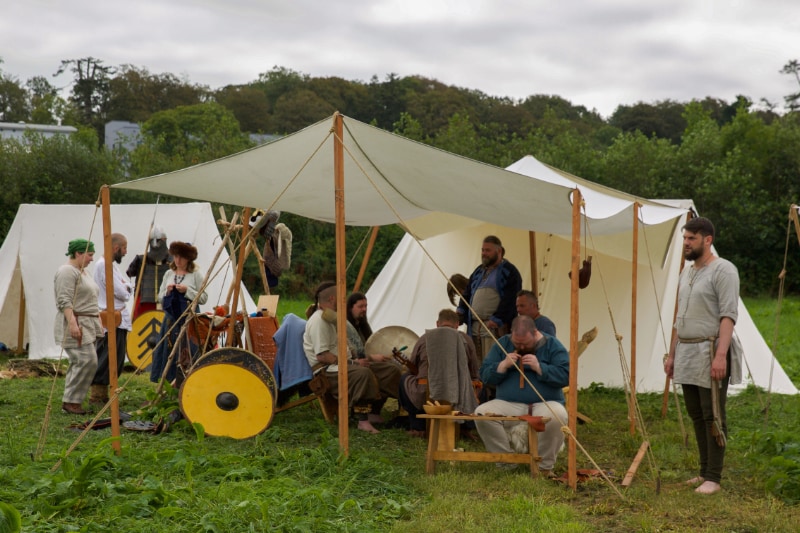
AMPLIFY ARCHAEOLOGY PODCAST
AMPLIFY ARCHAEOLOGY PODCAST
Title: Living History
Duration: 36 mins.
Summary:
In this episode of Amplify Archaeology Podcast, Neil chats with re-enactors to discover how living history can help us to understand the past
Amplify Archaeology Podcast Episode 9 Living in the Past – Show Notes
- This podcast was recorded live at the Viking Heritage Day at Woodstown on the Waterford Greenway, a wonderful Heritage Week event!
- You can find out more on the story of Viking Woodstown with our free audiobook – available from our website, and on Spotify, iTunes, Google Podcasts, Acast or wherever you like to get your podcasts.
- You can find Déise Medieval on Facebook.
- You’ll also hear fantastic music from Ulfhednar Hird Ireland who provided a blood pumping soundtrack for the battles!
- Here’s a link to Jessica de Burca’s Montague Heritage Services website.
- You can discover more about Dolores Kearney’s experimental archaeology project with textiles from her blog.
- Here’s a link to Viking’s UK.
- You can discover more about Ayanna Raiha’s work in Norse spirituality from her website.
- We’re currently working on a Conservation Management Plan for Viking Woodstown on behalf of Waterford City and County Council and we hope to share some of this work in the coming weeks.
Amplify Archaeology Podcast
During this podcast series we will meet some of Ireland’s archaeologists to discuss the key periods, places and people that tell the story of Ireland, and we’ll gain new insights into the practice and techniques of modern Irish archaeology. This is the seventh instalment of Amplify Archaeology, previous episodes have featured discussions on Kingship at Cashel, Beaker People, History of Food, Passage Tombs, Castles, Mesolithic Ireland and Glendalough.
I’d love some feedback, so please do leave a comment below – and if you have any questions about Irish archaeology please do let me know, we can try to answer them in forthcoming episodes. Finally if you enjoyed this podcast I’d be really grateful if you could leave us a review on iTunes, or please share it and tell your friends.
The podcast is an Abarta Heritage production. It was produced with the support of sound engineer Declan Lonergan in Bluebird Studios, County Kildare.
Dig into more stories with Amplify Archaeology Podcast
The post Amplify Archaeology Podcast – Episode 9 – Living in the Past appeared first on Abarta Heritage Home.
Amplify Archaeology Podcast – Episode 8 – Cashel of the Kings
Excavations at the Rock of Cashel
We join Dr. Patrick Gleeson at the Rock of Cashel for a trench-side chat in Amplify Archaeology Podcast Episode 8
Excavations at the Rock of Cashel
We join Dr. Patrick Gleeson at the Rock of Cashel for a trench-side chat in Amplify Archaeology Podcast Episode 8
Join us for a trench-side chat with Dr. Patrick Gleeson and his team at their exciting excavations at the Rock of Cashel to uncover the story of the early origins of this iconic site.
The Rock of Cashel is undoubtedly one of the most iconic heritage sites in Ireland. When you visit the site today, you can encounter Cormac’s Chapel, the Round Tower, the Cathedral and the High Cross that allow you to experience the might and splendour of medieval Irish Christianity. But the Rock of Cashel did not begin as an ecclesiastical site, it was once a royal site, the seat of the Eóganachta, who were Kings of Munster. They dominated the region from around the 6th or 7th century AD, but from around the 10th century, the Eóganachta were eclipsed by the Dál Cais, a dynasty whose eventual leader, the famous Brian Boru, was the first king to gain effective control of all of Ireland. It was a great-grandson of Brian Boru, Muirchertach Ua Briain, who donated the Rock of Cashel to the Church in 1101 AD. This wasn’t only an act of religious piety on the part of Muirchertach, but it was a shrewd political move – in one stroke he had denied the Eóganachta their ancestral seat of power.
An exciting project seeks to discover the regal roots of the Rock of Cashel, along with a number of other sites in Ireland and Britain. Comparative Kingship: the early medieval Kingdoms of Northern Britain and Ireland, is a collaborative project between the University of Aberdeen, Queens University Belfast and the University of Glasgow. The project aims to undertake a detailed study of three major polities: Pictland, Scotland; Dál Riata, Northern Ireland; and Munster, Ireland. The project will synthesize and compare the results of these case studies to help us better understand Northern Europe during the first millennium AD, as well as contribute to broader debates regarding this transformative period of history.
Dr Patrick Gleeson of Queens University Belfast and his team have been carrying out geophysical surveys at Cashel that have revealed an extensive series of unrecorded archaeological features indicative of a vast complex in the immediate vicinity of the Rock of Cashel. The character of these new features suggests the location developed from a major fortified site during the 5th and 6th century AD, and was later transformed into a major ceremonial seat of kingship and of the early Church.
In this edition of the Amplify Archaeology Podcast Neil visited the Rock of Cashel where he chatted with Patrick to learn more about this important project, and how the results of the excavation help us to better understand this iconic site. This podcast was recorded quite literally in the field, so there will be a bit of background noise – a little wind and a lot of heckling sheep!
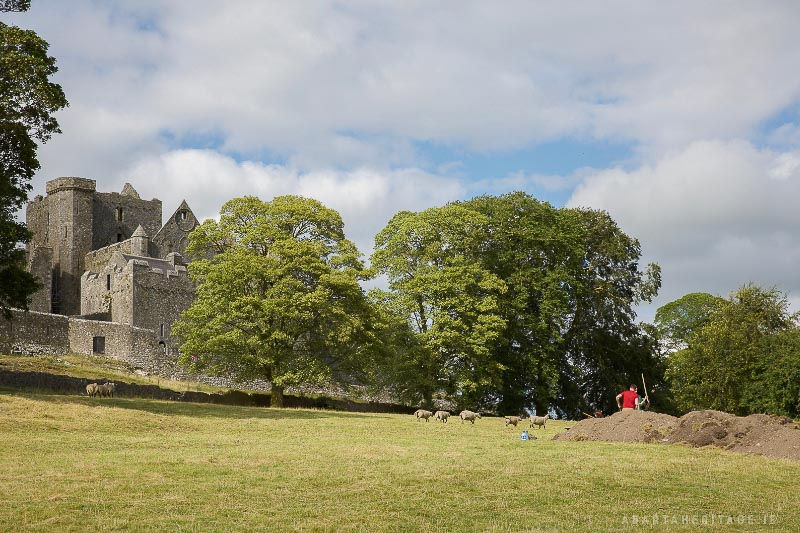


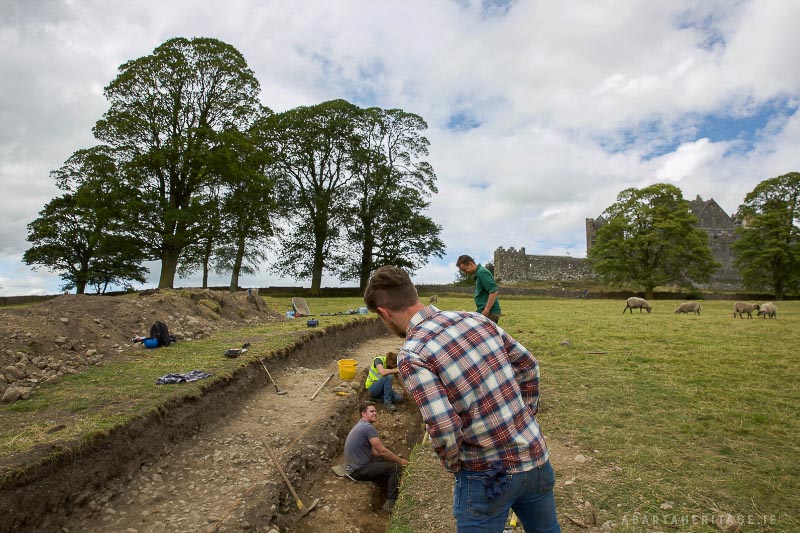
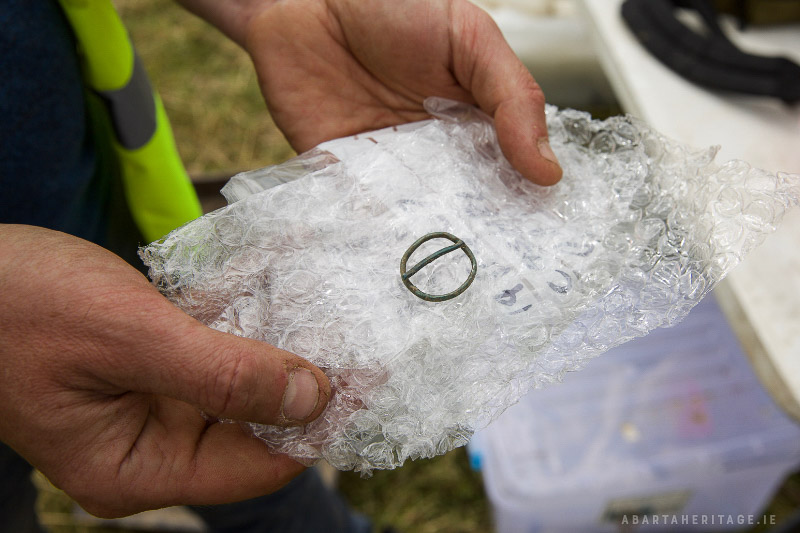
AMPLIFY ARCHAEOLOGY PODCAST
AMPLIFY ARCHAEOLOGY PODCAST
Title: Excavations at the Rock of Cashel
Duration: 30 mins.
Summary:
Join us for a trench-side chat with Dr. Patrick Gleeson and his team at their exciting excavations at the Rock of Cashel to uncover the story of the early origins of this iconic site.
Episode 8 Cashel of the Kings – Show Notes
- The excavation is part of the collaborative project: Comparative Kingship: the early medieval Kingdoms of Northern Britain and Ireland.
- If you’d like to visit the Rock of Cashel (and it is well worth the trip!) you can find information on opening times and entry fees here.
- You can find more information on the Northern Picts Project here.
- You can see a lovely video on the site at Rhynie, Aberdeenshire here.
- There’s a short piece in the Irish Times on the Discovery Programme’s Late Iron Age Roman Ireland project from 2012, unfortunately I can’t seem to find a copy of the excellent publication for sale online. It appears it may be out of print, though I am reliably informed that there may be some copies available in the ever-dependable Charlie Byrne’s Bookshop in Galway City.
Amplify Archaeology Podcast
During this podcast series we will meet some of Ireland’s archaeologists to discuss the key periods, places and people that tell the story of Ireland, and we’ll gain new insights into the practice and techniques of modern Irish archaeology. This is the eighth instalment of Amplify Archaeology, previous episodes have featured discussions on mortuary practice at Carrowkeel, Beaker People, History of Food, Passage Tombs, Castles, Mesolithic Ireland and Glendalough.
I’d love some feedback, so please do leave a comment below – and if you have any questions about Irish archaeology please do let me know, we can try to answer them in forthcoming episodes. Finally if you enjoyed this podcast I’d be really grateful if you could leave us a review on iTunes, or please share it and tell your friends.
The podcast is an Abarta Heritage production. It was recorded at the excavation at the Rock of Cashel, County Tipperary, with Neil Jackman (the interviewer), and Dr. Patrick Gleeson. We are really grateful to Patrick, Cóilín and the excavation team for taking time out of a busy excavation to talk with us.
Dig into more stories with Amplify Archaeology Podcast
The post Amplify Archaeology Podcast – Episode 8 – Cashel of the Kings appeared first on Abarta Heritage Home.
Amplify Archaeology Podcast – Episode 7 – Carrowkeel
Neolithic Mortuary Practice at Carrowkeel
Dig into the Story of the Way of Death at Carrowkeel in Amplify Archaeology Podcast Episode 7
Neolithic Mortuary Practice at Carrowkeel
Dig into the Story of the Way of Death at Carrowkeel in Amplify Archaeology Podcast Episode 7
A number of the tombs in the incredible passage tomb complex of Carrowkeel in County Sligo were excavated in 1911. Much of the evidence from those early digs lay quietly in boxes for decades, until a recent multidisciplinary project re-examined the evidence. What they found has provided remarkable insights into life and death in Neolithic Ireland.
The first detailed investigation of the human remains from the Carrowkeel passage tomb complex since their excavation in 1911 has revealed several new and important insights about life, death, and mortuary practice in Neolithic Ireland. This project was carried out by Doctors Thomas Kador, Lara Cassidy, Jonny Geber, Robert Hensey, Pádraig Meehan and Sam Moore in a multidisciplinary project that combined archaeology, osteoarchaeological examination of human remains and DNA analysis to gain new insights into Neolithic Ireland. In this edition of the Amplify Archaeology Podcast Neil was joined by Lara Cassidy, Pádraig Meehan, Robert Hensey, and Thomas Kador for a group discussion on the exciting results of the project, and how it sheds light onto life and death in Neolithic Ireland.
Some of the discussion includes the results of the osteological analysis of the human remains. This analysis provides the first conclusive proof for the occurrence of dismemberment of the dead at Irish passage tombs, practised contemporarily with cremation as one of a suite of funerary treatments. The research also highlights changes in burial tradition at the complex over the course of the Neolithic, and provides a chronology for these changes that allows them to be linked to wider trends in monument construction. Multi-isotope analysis hints at the presence of non-local individuals among the interred and the possible existence of different food sourcing areas at the onset of the later Neolithic period. Intriguingly, the preliminary results from ancient DNA sequencing of six individuals from Carrowkeel provides evidence for the genetic ancestry of Irish Neolithic populations, demonstrating their Anatolian origins and links along the Atlantic façade.
(please note, parts of the discussion about the mortuary practice is quite graphic in nature and may not be suitable for all audiences).
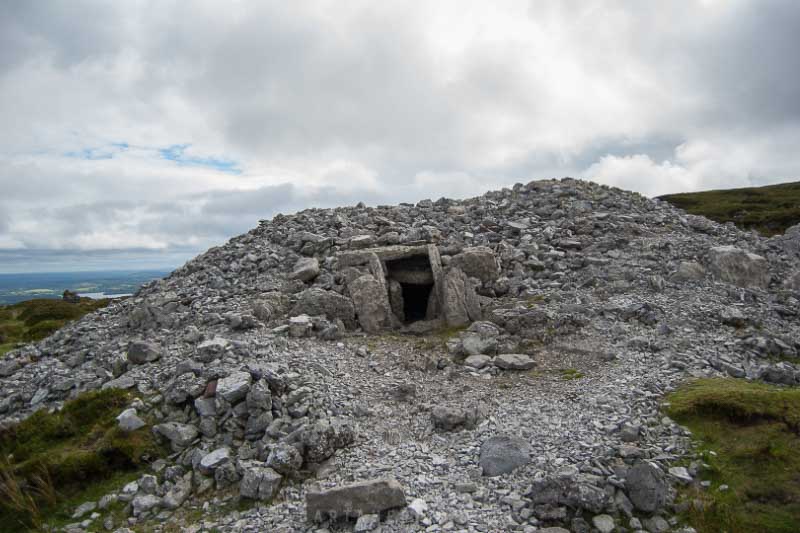
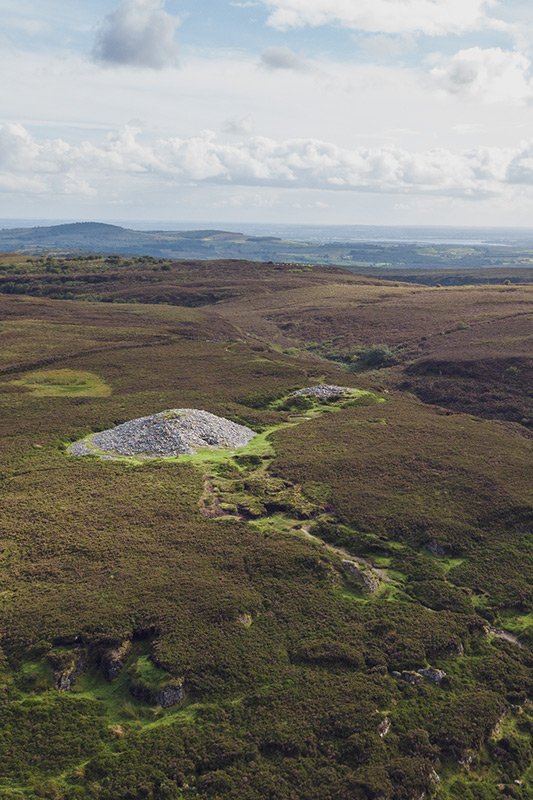
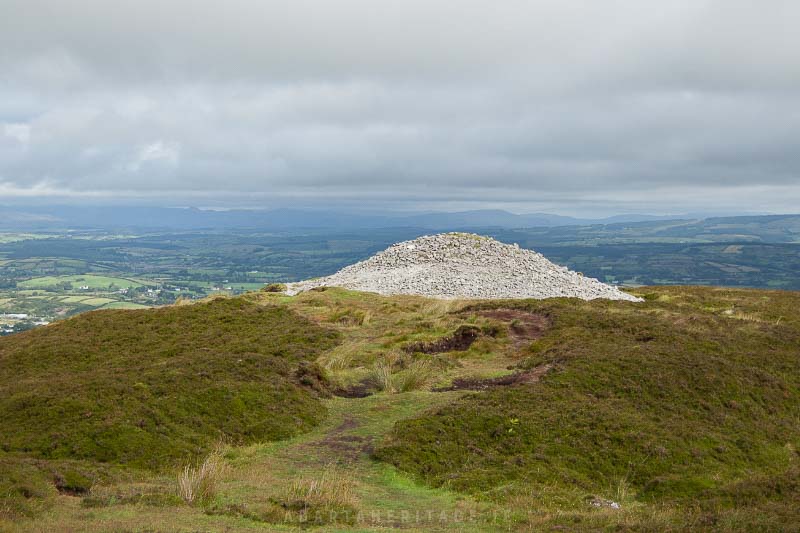
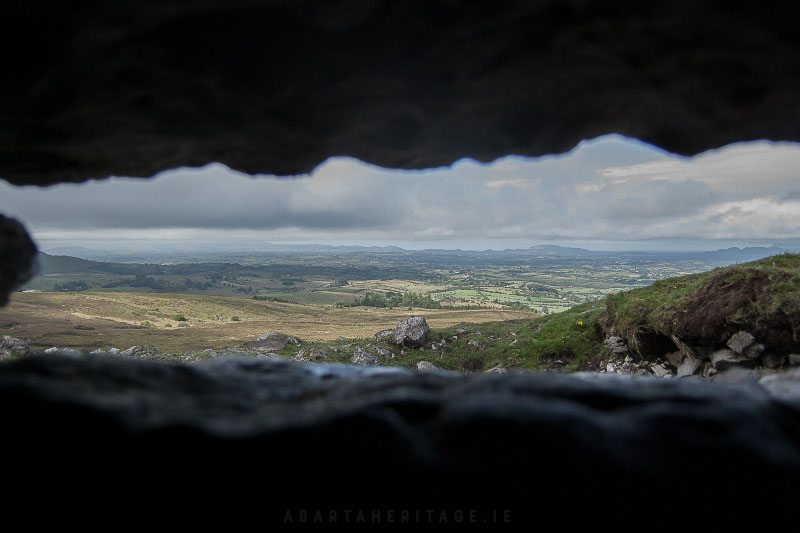

‘I lit three candles and stood awhile, to let my eyes accustom themselves to the dim light. There was everything just as the last Bronze Age man [sic] had left it, three to four thousand years before. A light brownish dust covered all…’
AMPLIFY ARCHAEOLOGY PODCAST
AMPLIFY ARCHAEOLOGY PODCAST
Title: The Archaeological Landscapes of St Patrick
Duration: 1 hour 20 mins.
Summary:
The reappraisal of human remains and artefacts that were first excavated from Carrowkeel in 1911 has revealed some astonishing new insights into the treatment of the dead in Neolithic Ireland. In this episode of Amplify Archaeology, Neil was joined by the multi-disciplinary project team, to talk about ancient DNA, belief, and the best way to carry a body up a mountain.
Episode 7 The Way of Death at Carrowkeel – Show Notes
- This podcast is based on the paper ‘Rites of Passage: Mortuary Practice, Population Dynamics, and Chronology at the Carrowkeel Passage Tomb Complex, Co. Sligo, Ireland’ first published in the Proceedings of the Prehistoric Society and also available from UCL Discovery.
- A detailed discussion of the postmortem treatment of the dead at Carrowkeel can be found in Bioarchaeology International. Also available through UCL Discovery.
- Further information can be found in the International Journal of Osteoarchaeology. Also available through UCL Discovery.
- It is also well worth digging into A century of archaeology—historical excavation and modern research at the Carrowkeel passage tombs, County Sligo, an article in the Proceedings of the Royal Irish Academy by Robert Hensey, Pádraig Meehan, Marion Dowd and Sam Moore.
- For an excellent and insightful overview into Ireland’s passage tombs we highly recommend First Light; the Origins of Newgrange by Robert Hensey. Published by Oxbow Books.
- The story of the discovery and ‘decoding’ of the bones in the Duckworth Institute is detailed in an article for the Proceedings of the Royal Irish Academy (€).
- If you’re around Sligo on the 30th July 2019 you can hear Robert and Pádraig at the Blue Raincoat Theatre. Tickets are available here.
- You can also hear more about Ireland’s passage tombs in Episode 4 of Amplify Archaeology, when Neil met Dr. Jessica Smyth to learn about Passage Tomb People.
- You can also find our miniseries on the Winter Solstice at Newgrange here, and Episode 4 featured Robert for a wide ranging discussion about Neolithic belief and meaning, art, time and communication.
Amplify Archaeology Podcast
During this podcast series we will meet some of Ireland’s archaeologists to discuss the key periods, places and people that tell the story of Ireland, and we’ll gain new insights into the practice and techniques of modern Irish archaeology. This is the seventh instalment of Amplify Archaeology, previous episodes have featured discussions on the Beaker People, History of Food, Passage Tombs, Castles, Mesolithic Ireland and Glendalough.
I’d love some feedback, so please do leave a comment below – and if you have any questions about Irish archaeology please do let me know, we can try to answer them in forthcoming episodes. Finally if you enjoyed this podcast I’d be really grateful if you could leave us a review on iTunes, or please share it and tell your friends.
The podcast is an Abarta Heritage production. It was recorded with sound engineer Declan Lonergan in Bluebird Studios, County Kildare, with Neil Jackman (the interviewer), with Lara Cassidy, Pádraig Meehan, Robert Hensey, and Thomas Kador. We are really grateful to them all for their generosity and insights.
Dig into more stories with Amplify Archaeology Podcast
The post Amplify Archaeology Podcast – Episode 7 – Carrowkeel appeared first on Abarta Heritage Home.
Amplify Archaeology Podcast – Episode 6 – Beaker People
Beaker People and the Chalcolithic Period
Dr. Neil Carlin introduces us to the Beaker People in Amplify Archaeology Podcast Episode 6
Beaker People and the Chalcolithic Period
Dr. Neil Carlin introduces us to the Beaker People in Amplify Archaeology Podcast Episode 6
Who were the Beaker People? And just how far does technology change culture? Join us for a fascinating discussion on the Beaker Period and Chalcolithic Ireland with Dr. Neil Carlin.
The first metal objects began to be made in Ireland from around the middle of the third millennium BC, from approximately 2500 BC onwards. This coincides with a particular sort of material culture, that includes evidence of archery and a particular sort of pottery vessel known as Beakers, as well as the first copper and gold objects. These artefacts are found elsewhere in Europe, and the prevalence and distinctive nature of the pottery has led to it being known as the Beaker Period or the Beaker Phenomenon. But are these objects evidence of people from outside moving into Ireland? If so, who were the Beaker People? And just how far does technology change culture?
In this episode of the Amplify Archaeology Podcast Neil had the opportunity to discuss this with Dr. Neil Carlin of UCD School of Archaeology, who has recently produced a superb publication on the Beaker Phenomenon for Sidestone Press. The book uses an innovative approach that reassesses some of the assumptions we have about this era, by interlinking the study of the famous Beaker pottery and other artefacts with the context of their discovery to better understand social practices within settlements, funerary monuments, ceremonial settings and natural places. It also places the Irish evidence of the Beaker period in its international context. The publication: ‘The Beaker Phenomenon? Understanding the Character and Context of Social Practices in Ireland 2500–2000 BC’ is available from Sidestone Press, and thanks to the generosity of Neil and Sidestone Press it can be read online for free from this link.
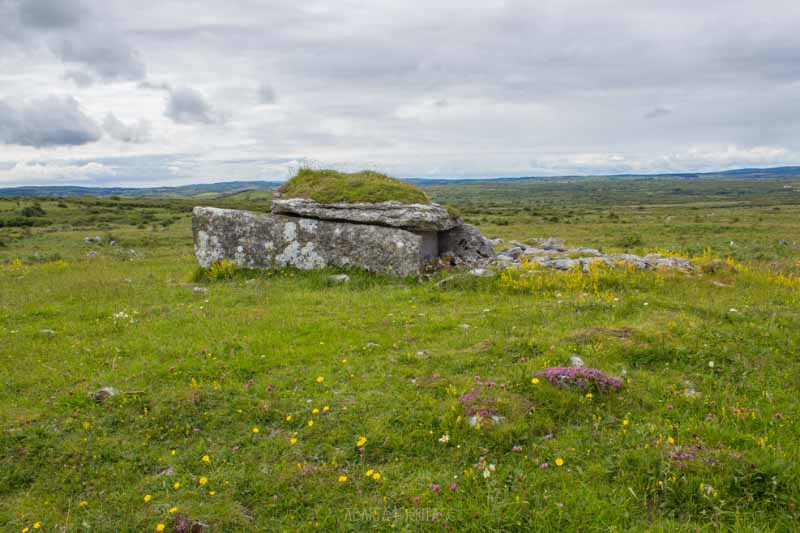
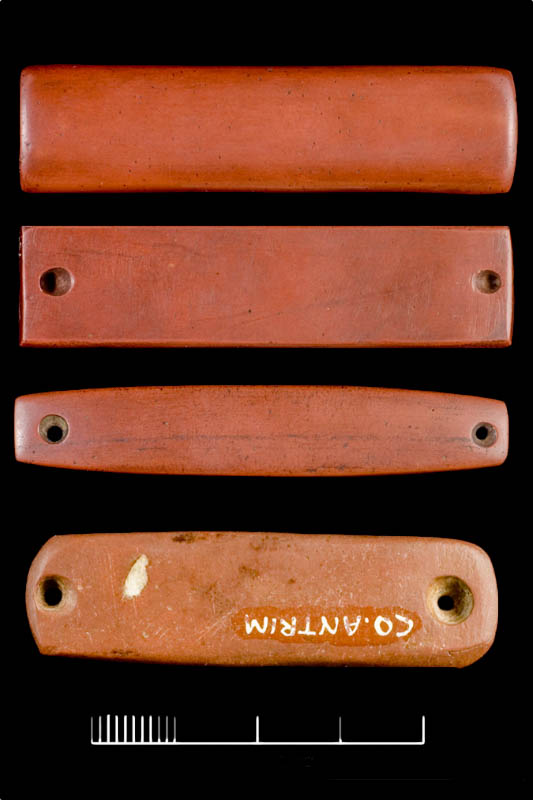


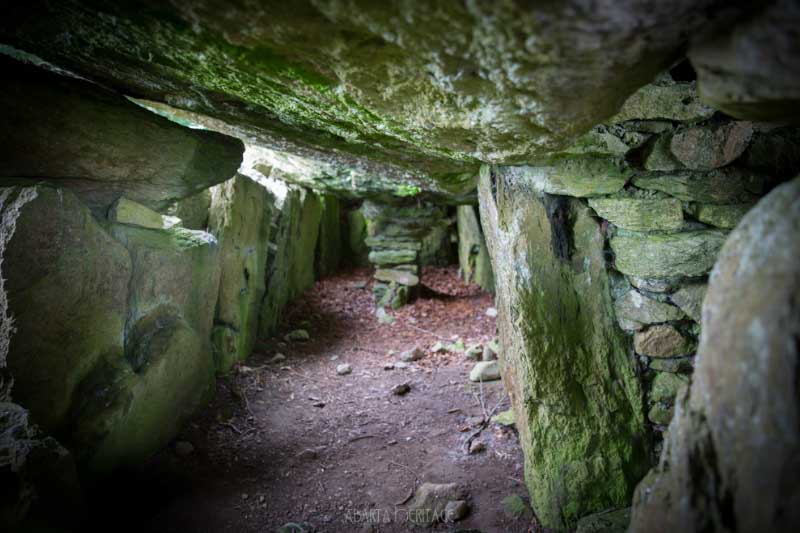
AMPLIFY ARCHAEOLOGY PODCAST
AMPLIFY ARCHAEOLOGY PODCAST
Title: Meet the Beaker People
Duration: 40 mins.
Summary:
Dr. Neil Carlin introduces us to the Beaker People and Chalcolithic Ireland in Episode 6 of the Amplify Archaeology Podcast.
Episode 6 Beaker People and Chalcolithic Ireland – Show Notes
- I can’t recommend Neil’s book The Beaker Phenomenon? highly enough, it really is worth checking out – and you can read it online for free!
- As Neil says at the end of the podcast, one of the best places to get a glimpse into the material culture of this period is in our wonderful (and free) National Museum of Ireland on Kildare Street. There you can find examples of the pottery, the wonderful archer’s wristguards and of course the beautiful, blingy, gold!
- Speaking of the National Museum and gold, no-one understands it better than Mary Cahill, former Keeper of Irish Antiquities National Museum of Ireland. Mary has numerous articles about Ireland’s gold, including this one about sun symbolism on gold discs and lunalae from Archaeology Ireland that you can read on Academia.edu.
- For more insight on those beautiful archer’s wrist bracers see Bracers or Bracelets? About the functionality and meaning of Bell Beaker Wrist-guards by Maikel Kuijpers and Harry Fokkens.
Amplify Archaeology Podcast
During this podcast series we will meet some of Ireland’s archaeologists to discuss the key periods, places and people that tell the story of Ireland, and we’ll gain new insights into the practice and techniques of modern Irish archaeology. This is the sixth instalment of Amplify Archaeology, previous episodes have featured discussions on the History of Food, Passage Tombs, Castles, Mesolithic Ireland and Glendalough.
I’d love some feedback, so please do leave a comment below – and if you have any questions about Irish archaeology please do let me know, we can try to answer them in forthcoming episodes. Finally if you enjoyed this podcast I’d be really grateful if you could leave us a review on Apple Podcasts, or please share it and tell your friends.
The podcast is an Abarta Heritage production. It was recorded on location by Neil Jackman (the interviewer), with Dr Neil Carlin. We are so grateful to Neil for his generosity with his time and insights.
Dig into more stories with Amplify Archaeology Podcast
The post Amplify Archaeology Podcast – Episode 6 – Beaker People appeared first on Abarta Heritage Home.
Amplify Archaeology Podcast – Episode 5 – Archaeology in Bloom
The History of the Irish Diet in Plants
Join us at Bloom to see a very special showgarden that demonstrates what plant remains can reveal about the past
The History of the Irish Diet in Plants
Join us at Bloom to see a very special showgarden that demonstrates what plant remains can reveal about the past
Archaeology in Bloom – join us as we visit a very special showgarden at Bloom in 2019, to meet with the project team who have created a sensory journey into Ireland’s history through plants.
We’re always interested in food [perhaps a little too interested at times] and we were delighted to hear of this really innovative way of showcasing the changing nature of Irish diets. This show garden at Bloom demonstrates a selection of key food plants from Ireland’s past. All the plants are based on archaeological evidence and seeing, smelling and touching the plants helps you to gain a tangible glimpse into the changing nature of diet from the earliest settlers in Ireland to the present day. The gardens are accompanied by wonderful reconstruction images by artists that visually represent the evidence and allow us to picture what life was like in the past.
The Bloom show garden is subdivided to better show the different periods.
- The first part demonstrates some of the key food plants that would have been utilised during the Mesolithic Period. Some of the plants on display in this section include the yellow water-lily, seeds from this plant have been discovered on Mesolithic sites in Ireland. This section is accompanied by a wonderful reconstruction of the Clowanstown Fish Traps by artist J.G. O’Donoghue.
- The second section symbolises the landscape of the first farmers during the Neolithic Period. This period provided the first evidence for tillage of crops, such as Emmer wheat which you can see in the garden. This section is accompanied by an illustration of the Early Neolithic settlement at Town Parks in County Meath by Dan Tietzsch-Tyler.
- The time of Ireland’s Medieval Traders is represented in the next section. Trade transformed the diet of many of Ireland’s inhabitants around 800 years ago, though a number of plants were still being foraged, including plants that we consider weeds today – such as fat-hen. Hawkers sold the spinach-like leaves of fat-hen up until the eighteenth century. This section is accompanied by Michael Duffy‘s reconstruction illustration of a medieval farmstead at Mondaniel County Cork, that was uncovered during work on the M8 Motorway.
- Moving forward through time, the Industrial society of the late eighteenth and nineteenth century is represented by a garden that includes plants such as potatoes that became such an important food for the Irish people. The collapse of the potato crops in the middle of the nineteenth century led to the Great Famine, resulting in tragedy, starvation, disease and emigration. This section is accompanied by an illustration of nineteenth century houses and farm buildings by Dan Tietzsch-Tyler.
- The final section represents the modern era, with plants such as chilli peppers reflecting the global diet of today. This section is accompanied by an illustration that depicts a scene in a modern supermarket by John McCord.

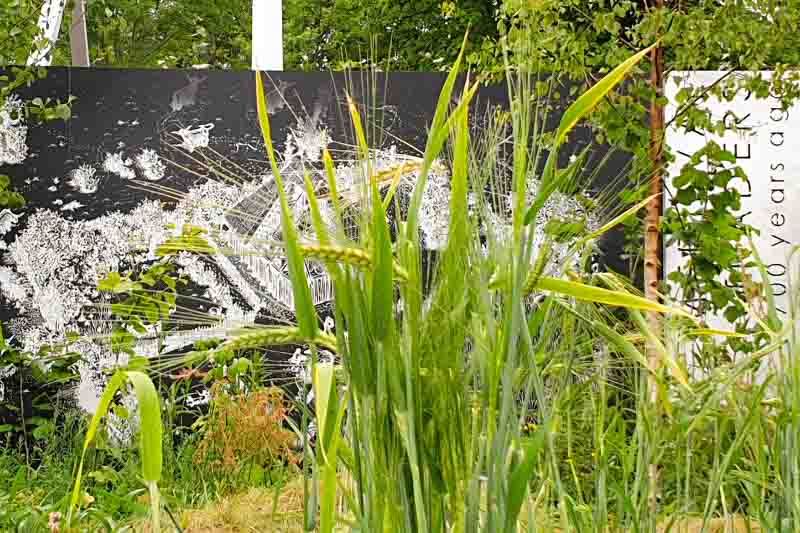
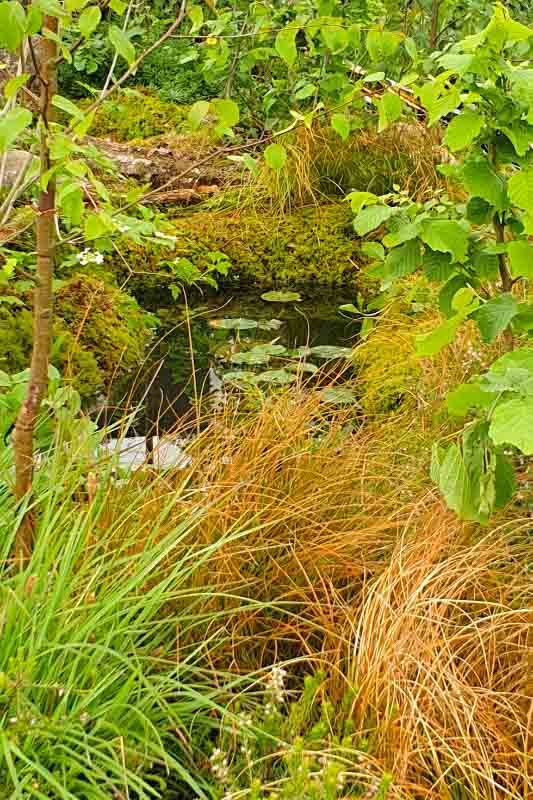

AMPLIFY ARCHAEOLOGY PODCAST
AMPLIFY ARCHAEOLOGY PODCAST
Title: Bloom: A History of the Irish Diet in Plants
Duration: 36 mins.
Summary:
Join us at Bloom to visit a very special showgarden that demonstrates a history of the Irish diet in plants
The UCD Project Team behind the History of the Irish Diet in Plants Bloom Show Garden:
Dr Caroline Elliott-Kingston is an Assistant Professor of Horticulture and Crop Physiology at UCD. She co-designed and delivered an award-winning Bloom garden in 2016. Interested in exploring interactive/participative methods of teaching, she uses garden design as one educational tool for teaching students and the public about plant history.
Dr Meriel McClatchie is an Assistant Professor of Archaeology at UCD, where she leads a team examining the ancient remains of plants from archaeological excavations, providing insight into what foods our ancestors included in their diet.
John McCord, Niamh Conlan, Ciaran Rooney and Hannah Johnston are third-year Landscape Architecture students at UCD. Using their combined educational knowledge and unique design ideas, they created the design for the UCD History of the Irish Diet in Plants garden.
With thanks to Rónán Swan and Michael Stanley of Transport Infrastructure Ireland for their support of the garden and their participation in this podcast.
Episode 5 – Archaeology in Bloom: A History of the Irish Diet in Plants
- You can discover more about this fabulous show garden and the innovative project team here.
- You can also see a short YouTube video on the garden here.
Amplify Archaeology Podcast
During this podcast series we will meet some of Ireland’s archaeologists to discuss the key periods, places and people that tell the story of Ireland, and we’ll gain new insights into the practice and techniques of modern Irish archaeology.
The podcast is an Abarta Heritage production. It was recorded on location at Bloom in the Park by Neil Jackman (the interviewer) and Róisín Burke, with Dr Meriel McClatchie, Dr Caroline Elliot-Kingston, John McCord, Niamh Conlon, Rónán Swan and Michael Stanley. We are so grateful to everyone for their time and insights.
Dig into more stories with Amplify Archaeology Podcast
The post Amplify Archaeology Podcast – Episode 5 – Archaeology in Bloom appeared first on Abarta Heritage Home.
Amplify Archaeology Podcast – Episode 4 – Passage Tombs
Passage Tombs
Dig into the Story of Ireland’s Passage Tombs in Amplify Archaeology Podcast Episode 4 with Dr. Jessica Smyth
Passage Tombs
Dig into the Story of Ireland’s Passage Tombs in Amplify Archaeology Podcast Episode 4 with Dr. Jessica Smyth
Passage Tombs like Newgrange, Knowth, Dowth, Loughcrew and the cemetery of Carrowkeel are some of Ireland’s most iconic monuments, but how much do we know about the societies that constructed these magnificent megalithic marvels? Join us for Episode 4 of Amplify Archaeology Podcast for this fascinating discussion with Dr. Jessica Smyth.
Passage tombs are undoubtedly one of Ireland’s most iconic archaeological monument types. Every year thousands of people visit the great tombs of the Boyne Valley – Newgrange, Knowth and Dowth, or climb the hills of Loughcrew or Carrowkeel to discover these ancient places. The tombs were constructed over 5,000 years ago, during the Neolithic Period, generally between 3,600–2,900 BC. Passage tombs typically consist of large mounds of stone or earth that cover a burial chamber that was accessed by a stone-lined passageway, and some tombs contain complex megalithic art. There are at least 230 known passage tombs across Ireland, and these monuments can also be found along the Atlantic seaboard of Western Europe, from the Iberian Peninsula of Spain and Portugal, Brittany in France, the Westernmost parts of Britain and Sweden.
But how and why did communities of early farmers come together to build these colossal monuments? In this podcast, Neil had the opportunity to discuss passage tombs with Dr Jessica Smyth of UCD School of Archaeology. We discussed Jessica’s exciting project Passage Tomb People that uses a multidisciplinary approach to better understand some of the social and economic aspects of passage tombs and to examine questions about the societies that built them.




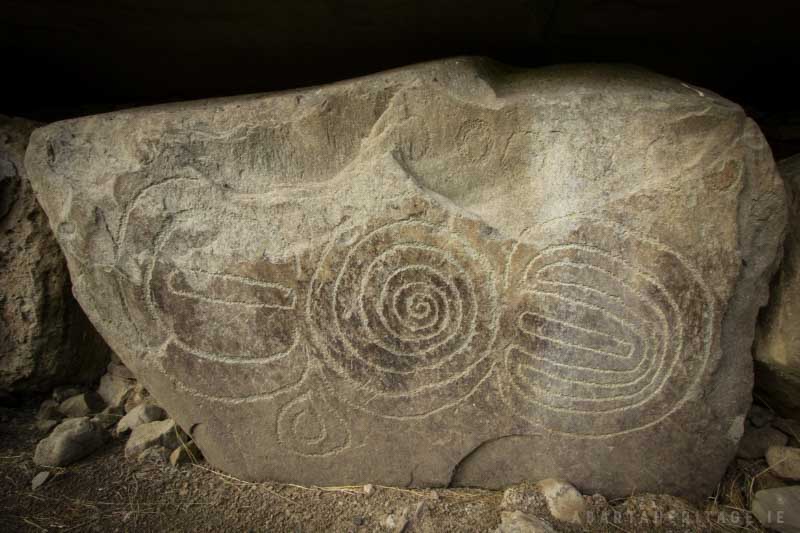
AMPLIFY ARCHAEOLOGY PODCAST
AMPLIFY ARCHAEOLOGY PODCAST
Title: Ireland’s Passage Tombs
Duration: 48 mins.
Summary:
Dig into the story of Ireland’s Passage Tombs with Dr. Jessica Smyth in Episode 4 of the Amplify Archaeology Podcast
Episode 4 Passage Tombs – Show Notes
- You can find out more about Jessica’s fascinating project on the Passage Tomb People Website.
- Jessica also appeared in Episode 2 of our 5 part miniseries on Newgrange and the Winter Solstice, you can find that here.
- For an excellent and insightful overview into Ireland’s passage tombs we highly recommend First Light; the Origins of Newgrange by Dr. Robert Hensey. Published by Oxbow Books.
- For truly stunning images of Ireland’s passage tombs and megalithic art it is well worth spending some time on Shadows and Stone, Ken Williams is an absolute artist when it comes to capturing the intricacies of these enigmatic works of art.
- Ken also has a very insightful article that addresses the recent controversy regarding the roof-box at Newgrange.
- In an absolute gift to us all, the six volumes on the excavation of the great passage tomb of Knowth have been made available free on the Digital Repository of Ireland. It’s a truly incredible resource!
- A number of the best examples of passage tombs are accessible to visit. Many under the auspices of the OPW. Including Newgrange and Knowth that are accessible through the Brú na Bóinne Visitor Centre, and Loughcrew. Those three in particular feature on our free audioguide to the Boyne Valley and you can hear their story there.
- We carried out a small targeted excavation of a passage tomb behind the Hellfire Club in the Dublin Mountains. You can read all about the excavation and what we discovered in our free ebook.
Amplify Archaeology Podcast
During this podcast series we will meet some of Ireland’s archaeologists to discuss the key periods, places and people that tell the story of Ireland, and we’ll gain new insights into the practice and techniques of modern Irish archaeology. If you enjoyed this podcast I’d be really grateful if you could leave us a review on Apple Podcasts, or share it and tell your friends.
The podcast is an Abarta Heritage production. It was recorded on location by Neil Jackman (the interviewer), with Dr Jessica Smyth. We are so grateful to Jessica for her generosity with her time and insights.
Dig into more stories with Amplify Archaeology Podcast
The post Amplify Archaeology Podcast – Episode 4 – Passage Tombs appeared first on Abarta Heritage Home.
Amplify Archaeology Podcast – Episode 3 – Castles
Irish Castles
Discover the origin of Irish Castles in Amplify Archaeology Podcast Episode 3 with Prof. Tadhg O’Keeffe
Irish Castles
Discover the origin of Irish Castles in Amplify Archaeology Podcast Episode 3 with Prof. Tadhg O’Keeffe
Irish Castles loom large both across the landscape and in our imagination, but what exactly was a castle? How do we define it? Was it the Normans who brought castle-building to Ireland in the 12th century, or did castles exist in Ireland before they arrived? In this episode of Amplify Archaeology Podcast we’re joined by Professor Tadhg O’Keeffe to discuss some of these questions and more!
Castles are one of the most evocative icons of our medieval past. Ireland has a vast array of fortifications, ranging from earthwork structures to large stone fortresses. But what was the origin of castles in Ireland? Did they come in with the Anglo Normans after the invasions of the late-twelfth century, or could it be said that castles existed in Ireland before the Normans? I was delighted to have the opportunity to discuss some of these questions with Professor Tadhg O’Keeffe of UCD School of Archaeology. We also look at how Irish castles compare with those of England, Wales and the rest of Europe, and the significance of sites like Roscommon Castle.

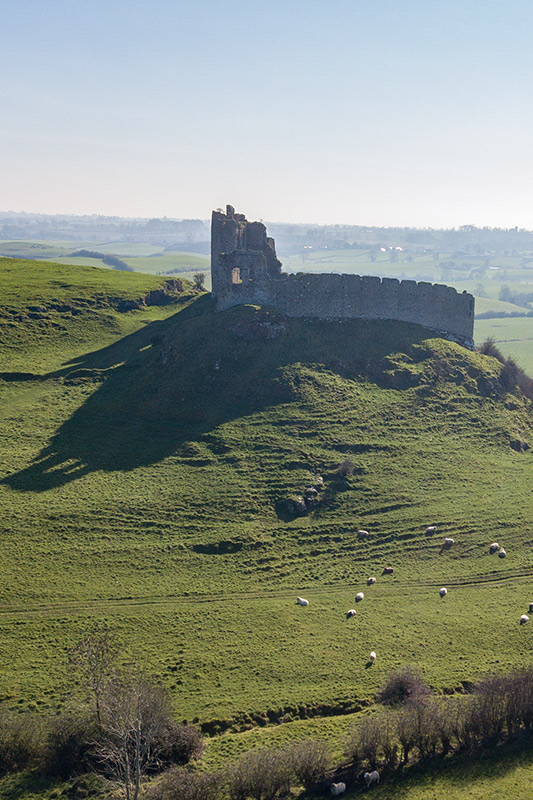
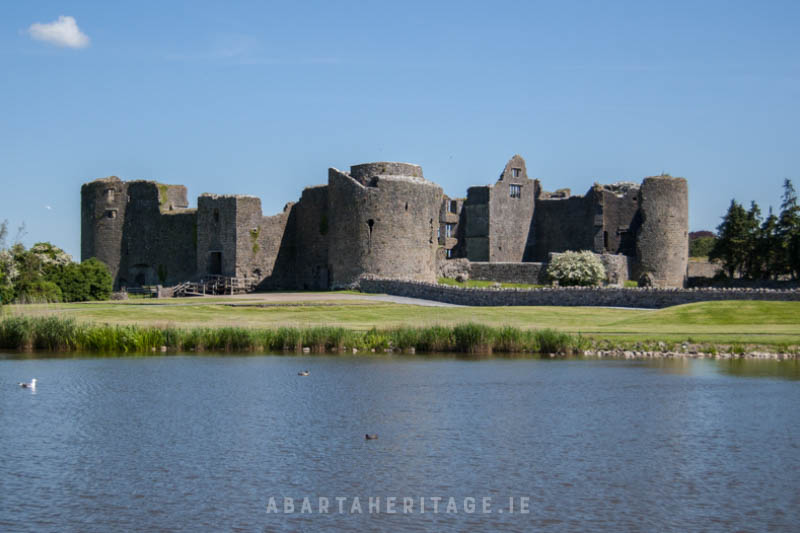
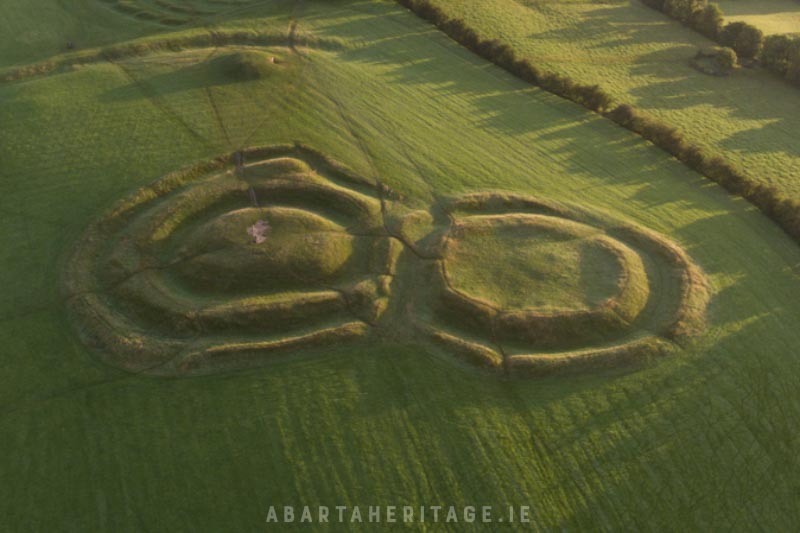
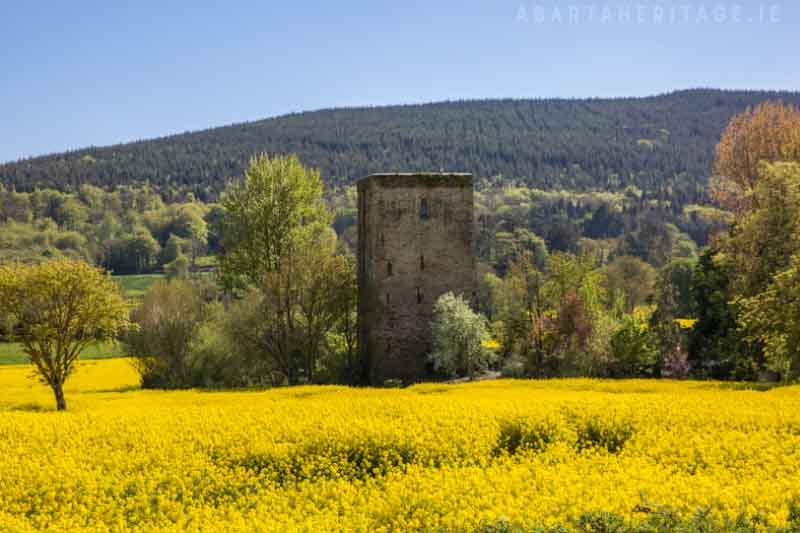
AMPLIFY ARCHAEOLOGY PODCAST
AMPLIFY ARCHAEOLOGY PODCAST
Title: Irish Castles
Duration: 37 mins.
Summary:
Discover the origin of Irish Castles in Amplify Archaeology Podcast Episode 3 with Prof. Tadhg O’Keeffe
Episode 3 Irish Castles – Show Notes
- If you’d like to dig further into some of these discussion points, Tadhg has a new publication called Ireland Encastellated, AD 950–1550 Insular castle-building in its European context, available from Four Courts Press.
- There are some terrific publications that give great insights into castles. Tadhg himself is a prolific writer on the medieval period. As well as his new publication, his Medieval Irish Buildings 1100–1600 is an essential guide to the architecture of the period. Another of his publications Medieval Ireland An Archaeology also provides an excellent overview.
- If you are interested in the architecture of castles, I recommend checking out Malcom Hislop’s Castle Builders: Approaches to Castle Design and Construction in the Middle Ages. There isn’t much specifically about Ireland in there but it is a really interesting guide to how castles were designed and constructed in the medieval period.
- Lady Rohesia’s castle at Castleroche (pictured above) is one of the most spectacular sites in the country. It is situated near Dundalk in County Louth, and it is on private land so please do ask permission before entering the site.
- Trim Castle and the Hill of Tara both feature in our free audio guide to the Boyne Valley.
- You can visit Trim Castle (and enjoy a great guided tour!), see here for opening hours and entry fees.
- Maynooth Castle can also be visited, see here for opening hours and entry fees.
- The Forradh and the Hill of Tara is also well worth a trip, it’s such a fascinating archaeological landscape! See here for opening hours.
- Roscommon Castle is located in Roscommon Town and it can be accessed for free. Why not take a guided tour with Roscommon Heritage Tours?
- A number of the castles mentioned, including Castleroche, the Forradh on the Hill of Tara, Maynooth Castle, Trim Castle and more feature in my guidebook to Ireland’s Ancient East, published by Collins Press in 2016. It’s available from all good bookshops, and it is available cheapest from Kennys.ie or the Book Depository.
Amplify Archaeology Podcast
During this podcast series we will meet some of Ireland’s archaeologists to discuss the key periods, places and people that tell the story of Ireland, and we’ll gain new insights into the practice and techniques of modern Irish archaeology. This is the third instalment of Amplify Archaeology, our first episode featured the exciting archaeological dig at Glendalough, and the second was a discussion about Mesolithic Ireland.
I’d love some feedback, so please do leave a comment below – and if you have any questions about Irish archaeology please do let me know, we can try to answer them in forthcoming episodes. Finally if you enjoyed this podcast I’d be really grateful if you could share it and tell your friends.
The podcast is an Abarta Heritage production. It was recorded on location by Neil Jackman (the interviewer), with Professor Tadhg O’Keeffe. We are very grateful to Tadhg for his generosity with his time and insights.
Dig into more stories with Amplify Archaeology Podcast
The post Amplify Archaeology Podcast – Episode 3 – Castles appeared first on Abarta Heritage Home.
Amplify Archaeology Podcast – Episode 2 – Mesolithic Ireland
Mesolithic Ireland
Discover the Story of Mesolithic Ireland in Amplify Archaeology Podcast Episode 2 with Prof. Graeme Warren
Mesolithic Ireland
Discover the Story of Mesolithic Ireland in Amplify Archaeology Podcast Episode 2 with Prof. Graeme Warren
Have you ever wondered what life might have been like in Mesolithic Ireland? Join us for a fascinating discussion on some of Ireland’s earliest inhabitants with Professor Graeme Warren.
In Ireland, the Mesolithic Period is generally considered to last from around c.7500 – 4500 BC. The traditional view is that the period begins with the end of the Ice Age and ends with the beginning of farming. This is a time when the population of Ireland was believed to have consisted of nomadic, (or semi-nomadic), tribes of hunter-gatherers. The term ‘Mesolithic’ itself derives from ‘Middle Stone Age’, reflecting the the stone tools that are the most common form of evidence that we find from that period. The landscape that these tribes found in Mesolithic Ireland was likely to have been profoundly different to that we are used to today. The Mesolithic landscape was variable, but before the advent of farming that brought field clearance, much of the land may have been covered with forests. Hazel scrub, pine, oak, elm and ash were common. The midlands of Ireland held large lakes, that over millennia turned into the bogs that we know today. The differences were perhaps most dramatic along the coast, as sea levels have changed considerably since the Mesolithic Period.
But how much do we actually know about this remote period in the Irish story? In this podcast, Neil had the opportunity to discuss Mesolithic Ireland with Professor Graeme Warren of UCD School of Archaeology. We discussed how Ireland may have looked like back then, how people lived, the evidence of Mesolithic culture and religion, and what sort of dangers people may have faced at the time. We also discussed how we know what we know about the Mesolithic and the types of evidence that tell us the story of our ancient past.
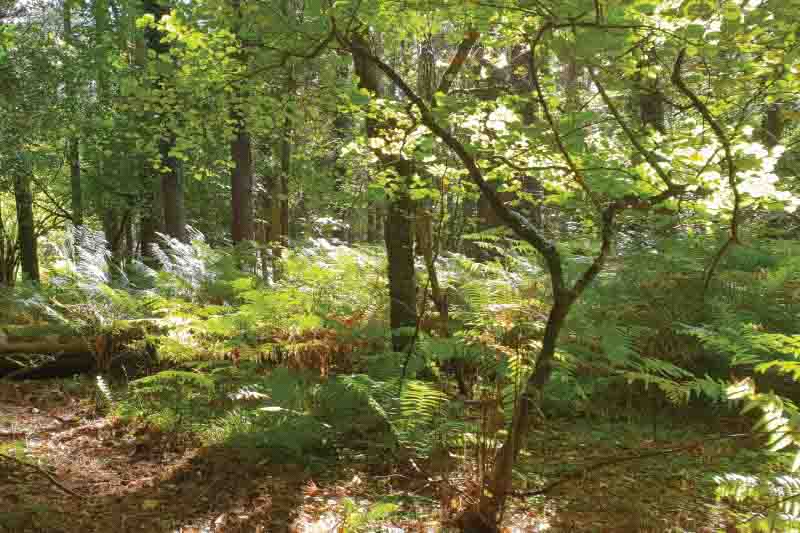
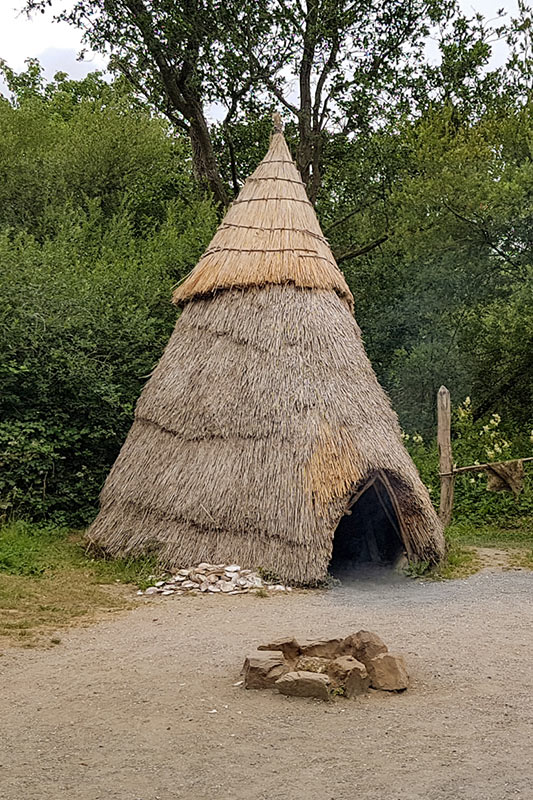

AMPLIFY ARCHAEOLOGY PODCAST
AMPLIFY ARCHAEOLOGY PODCAST
Title: Mesolithic Ireland
Duration: 54 mins.
Summary:
Have you ever wondered what life might have been like in Mesolithic Ireland? Join us for a fascinating discussion on some of Ireland’s earliest inhabitants with Professor Graeme Warren.
Episode 2 Mesolithic Ireland – Show Notes
- Mountsandel is perhaps the most famous Mesolithic site in Ireland. It was excavated in the 1970s by Professor Peter Woodman, you can find a short summary on the excavations.ie website. The site itself is located on the banks of the River Bann in County Derry, just south of Coleraine. Ferriter’s Cove is at the opposite end of the country – on the coast of County Kerry. In both cases there is nothing to be seen of the sites themselves, but it is still nice to roughly follow in the footsteps of some of Ireland’s earliest inhabitants.
- Lough Boora in the midlands of County Offaly can also be visited, again there isn’t much to see on site but there are interpretative panels where the site was discovered, and the bog is a lovely place to visit. The story of the Lough Boora Mesolithic site also features in one of our latest audioguides.
- The threat to indigenous tribes in Brazil is described in detail by Fiona Watson in this article in the Guardian.
- The sad case of the American missionary John Allen Chau who was killed by a tribe on Sentinel Island was reported in the Guardian.
- You can find out more about the Conference of Hunting and Gathering Societies from the organisation’s website.
- You can find out more on the incredible work by Dr. Ruth Carden and Dr. Marion Dowd, who identified a 12,500+ year old butchered bear patella that had been found in the Alice and Gwendoline Cave in County Clare, in this Irish Times article.
- The National Museum website has an image of a flint flake from gravel deposits at Mell, near Drogheda, Louth, is the earliest known artefact found in Ireland. Fashioned elsewhere, it was deposited subsequently by an ice sheet near the Irish coast.
- An article on the ‘domesticated’ bear that was found in France can be found here on Academia.edu.
- The remarkable discovery of a Mesolithic burial at Hermitage in County Limerick by Dr. Aimée Little is featured in this Irish Times article.
- You can find a summary of Prof. Peter Woodman’s excavations at Ferriter’s Cove on the excavations.ie website.
- The incredible Clowanstown Fishtraps feature in the 100 Objects series. Their website has a great gallery of images and more information on this wonderful example of the skill and ingenuity of the Mesolithic Dubliners. You can see the trap in the National Museum of Ireland, along with a number of stone tools and other artefacts from the Mesolithic period.
Amplify Archaeology Podcast
During this podcast series we will meet some of Ireland’s archaeologists to discuss the key periods, places and people that tell the story of Ireland, and we’ll gain new insights into the practice and techniques of modern Irish archaeology. This is the second instalment of Amplify Archaeology, our first episode featured the exciting archaeological dig at Glendalough.
The podcast is an Abarta Heritage production. It was recorded on location by Neil Jackman (the interviewer), with Professor Graeme Warren. We are very grateful to Graeme for his generosity with his time and insights. If you enjoyed this podcast I’d be really grateful if you could share it and tell your friends.
Dig into more stories with Amplify Archaeology Podcast
The post Amplify Archaeology Podcast – Episode 2 – Mesolithic Ireland appeared first on Abarta Heritage Home.
Amplify Archaeology Podcast – Episode 1 – Glendalough
Archaeological Excavations at Glendalough
Join us for a trench-side chat with the crew at Glendalough in the first episode of Amplify Archaeology Podcast
Archaeological Excavations at Glendalough
Join us for a trench-side chat with the crew at Glendalough in the first episode of Amplify Archaeology Podcast
In the very first episode of Amplify Archaeology Podcast we join Professor Graeme Warren, Conor McDermott and the team from UCD School of Archaeology and local volunteers who are carrying out exciting excavations at Glendalough.
Glendalough is one of the most iconic places in Ireland. Saint Kevin is believed to have founded a monastery in this stunningly beautiful valley in County Wicklow some time in the later sixth century. The monastery went on to become a famed centre of learning, and it had a long and illustrious history. Today, thanks to its glorious setting, this site has become one of the most visited heritage sites in Ireland. Kevin and his monastery has been subject to much scholarly discussion, histories, hagiographies, folklore and legend over the years. However, there had been little modern archaeological study carried out until Professor Graeme Warren and Conor McDermott of the UCD School of Archaeology began to carry out a series of investigations, surveys and excavations over the last number of years.
Combining their expertise, with the local community and a variety of land owners and stakeholders, they formed the Glendalough Heritage Forum to help promote the cultural heritage of Glendalough and to increase collaboration between different groups, not least the local community. The Glendalough Heritage Forum community excavations are funded by Wicklow County Council, the Heritage Council and UCD School of Archaeology, with substantial support in kind from National Parks and Wildlife Services and Office of Public Works.
We had the opportunity to join the archaeologists on site, where we had a chat with Graeme, Conor and the team who generously took the time to give us some wonderful insights into the project and the challenges and joys of archaeology.
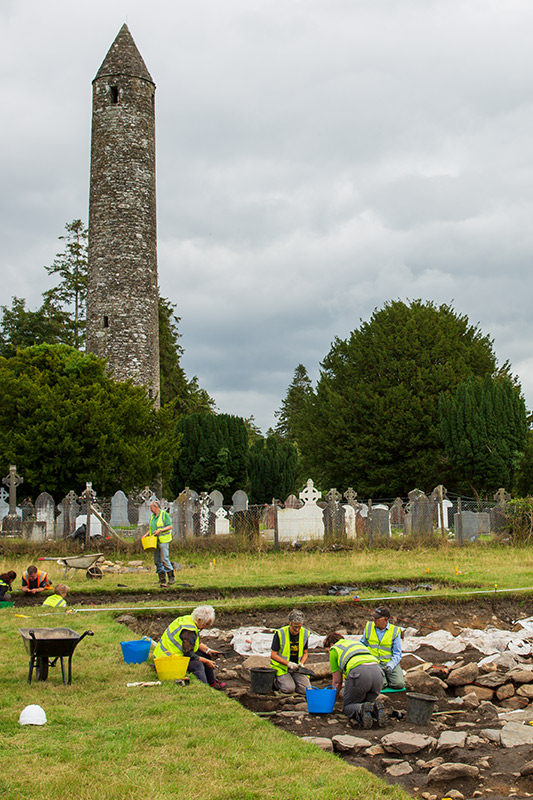
AMPLIFY ARCHAEOLOGY PODCAST
AMPLIFY ARCHAEOLOGY PODCAST
Title: Archaeological Excavations at Glendalough
Duration: 52 mins.
Summary:
Join us for a trench-side chat with the crew at Glendalough in the first episode of Amplify Archaeology Podcast
Episode 1: Excavations at Glendalough
- You can find out more about the Glendalough Research Project here.
- You can discover the many fascinating features of Glendalough in our Tuatha article here.
- You can find more information on the Glendalough Heritage Forum on their website.
- For information on Wicklow’s heritage please visit here.
- The National Museum of Ireland have a new exhibition on Glendalough, informed by the excavation discoveries. You can hear Matt Seaver and Maeve Sikora of the National Museum discussing the exhibition and curation in Episode 14 of Amplify Archaeology Podcast.
- Glendalough is one of Ireland’s most spectacular historic landscapes. You can find out more in Christiaan Corlett’s publication.
- For visitor information please visit the OPW website.
Amplify Archaeology Podcast
The podcast is an Abarta Heritage production. It was recorded on site by Neil Jackman (the interviewer), with the assistance of Dr Conor Ryan. We are very grateful to Professor Graeme Warren, Conor McDermott, and all the team at Glendalough for their hospitality and for taking part in this pilot podcast.
Dig into more stories with Amplify Archaeology Podcast
The post Amplify Archaeology Podcast – Episode 1 – Glendalough appeared first on Abarta Heritage Home.
En liten tjänst av I'm With Friends. Finns även på engelska.



























